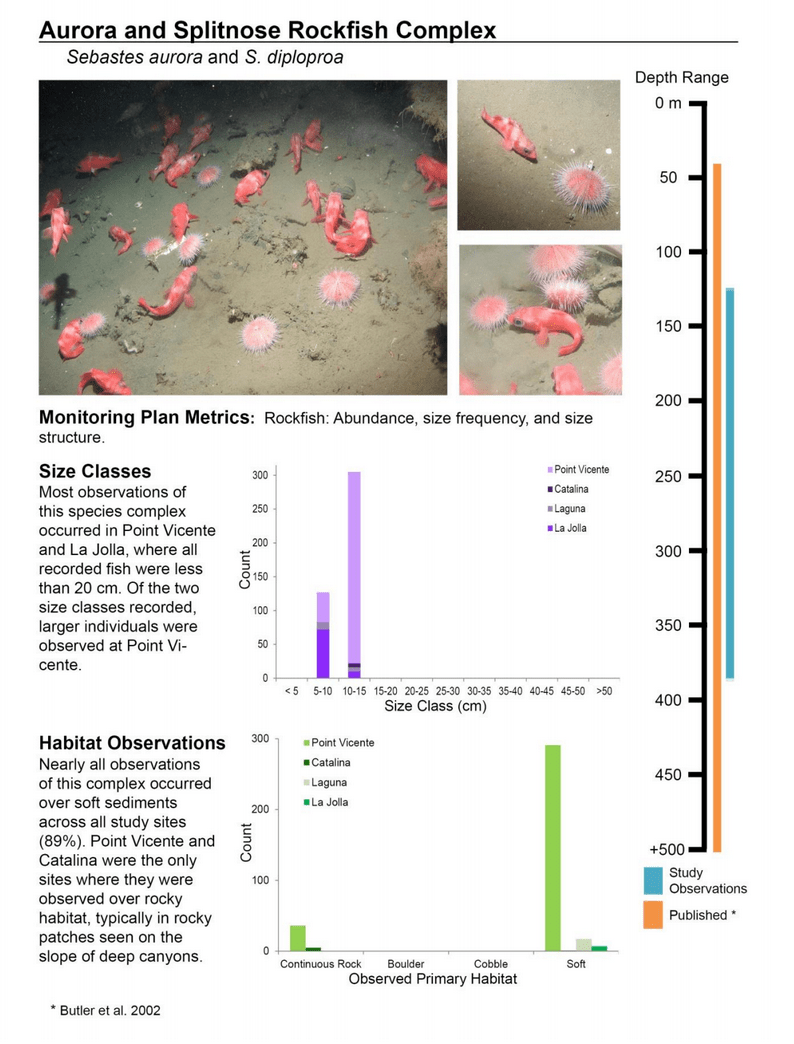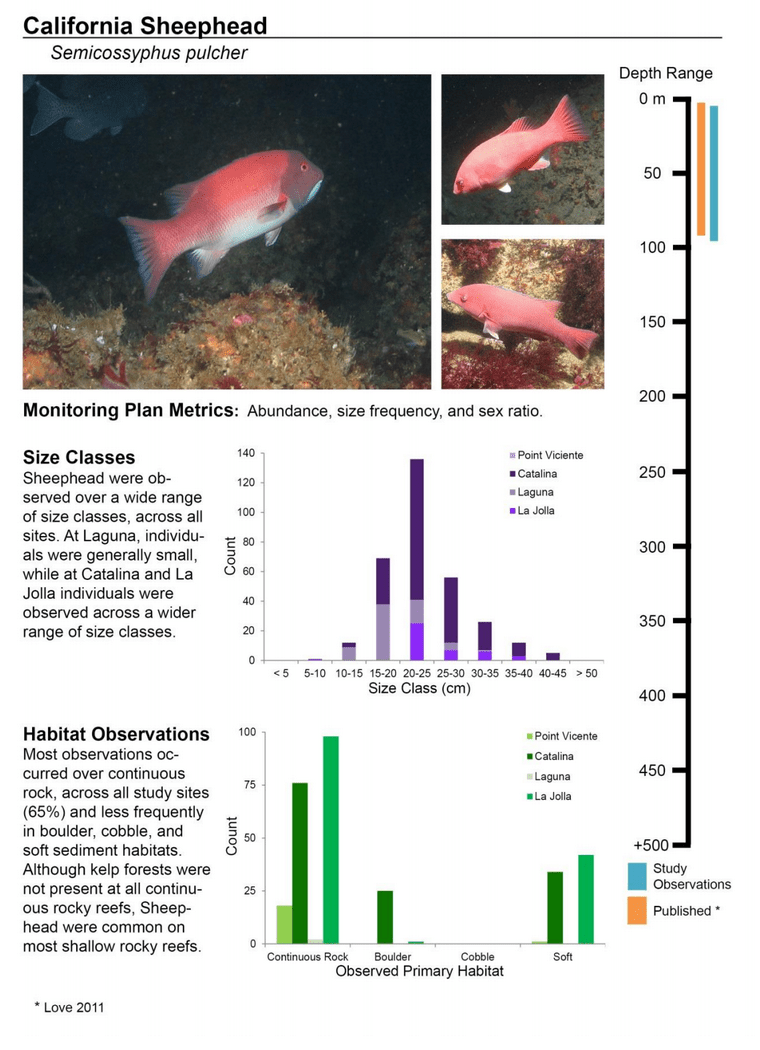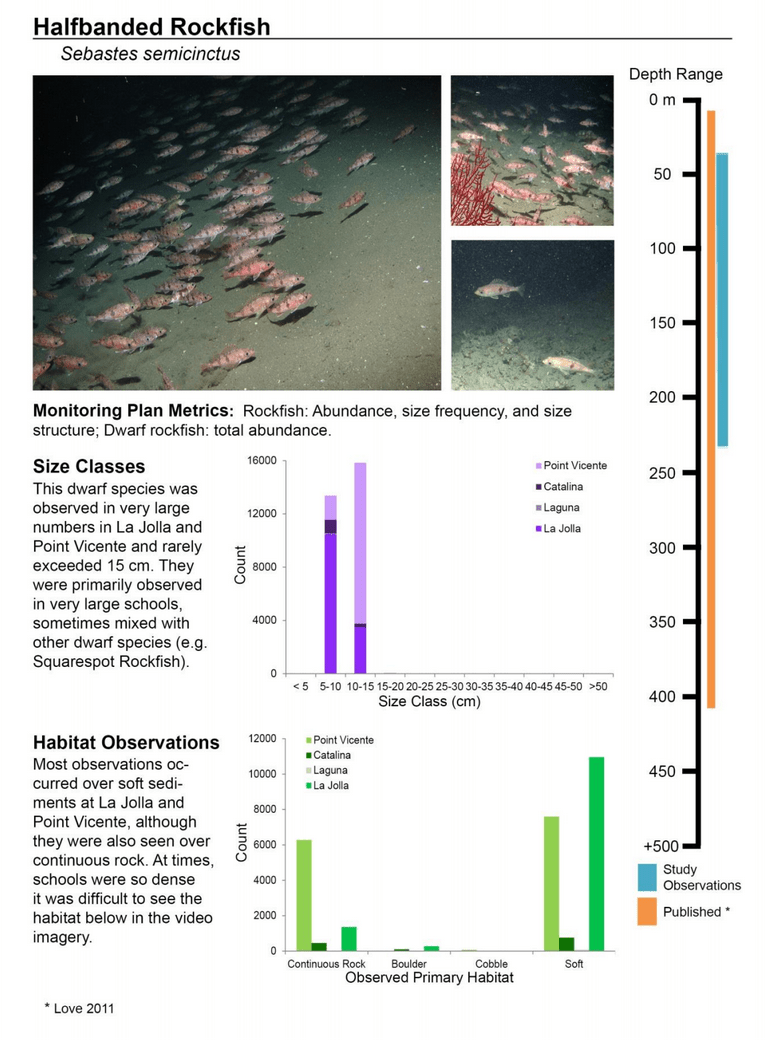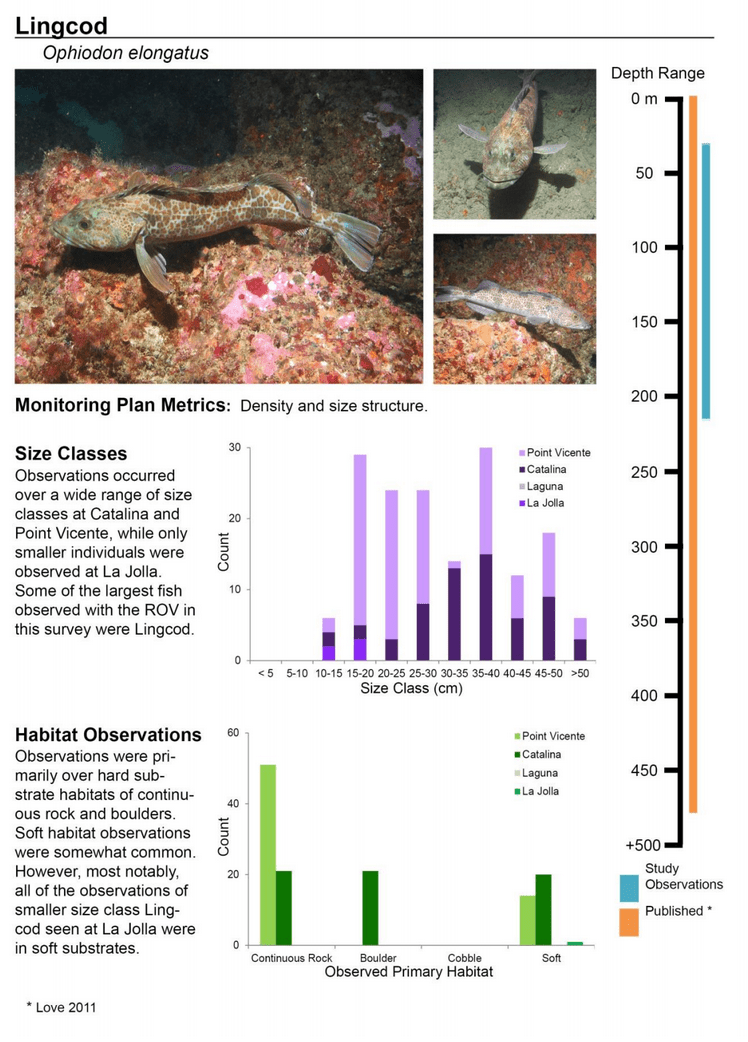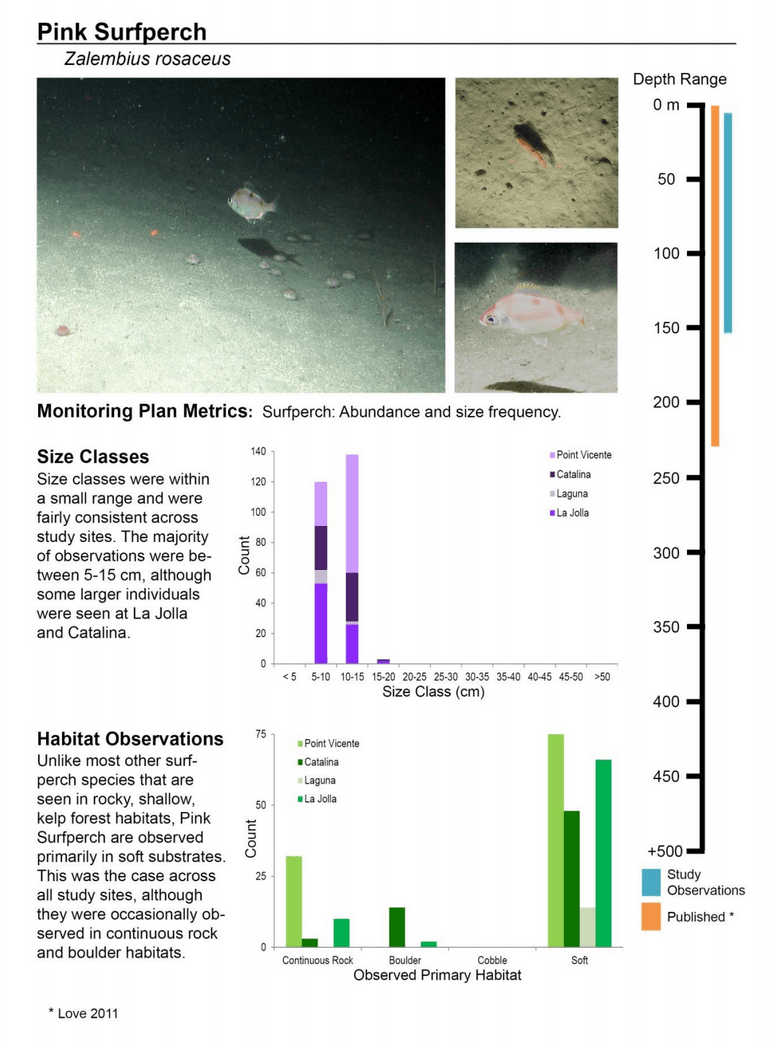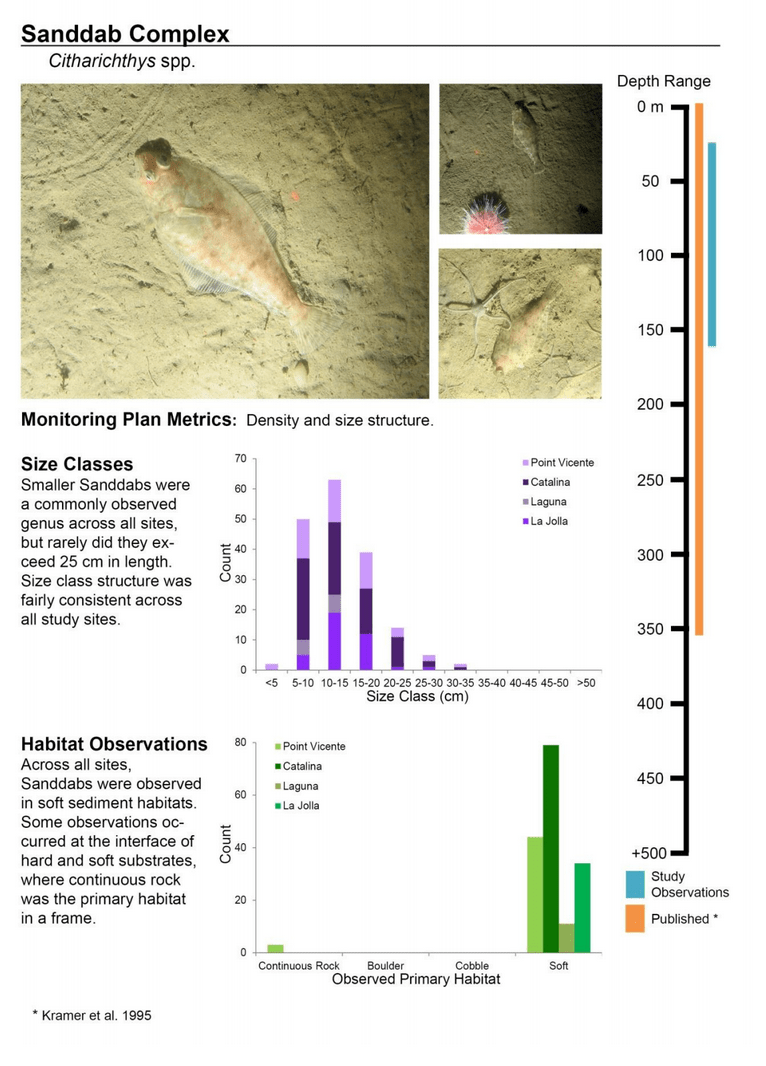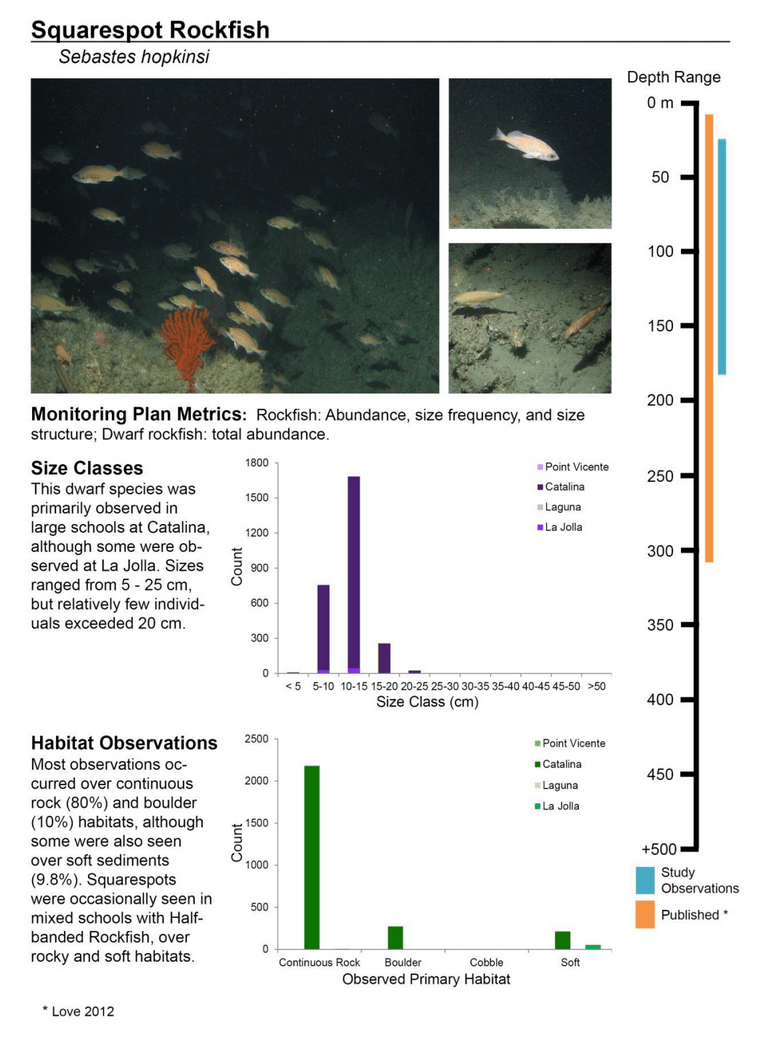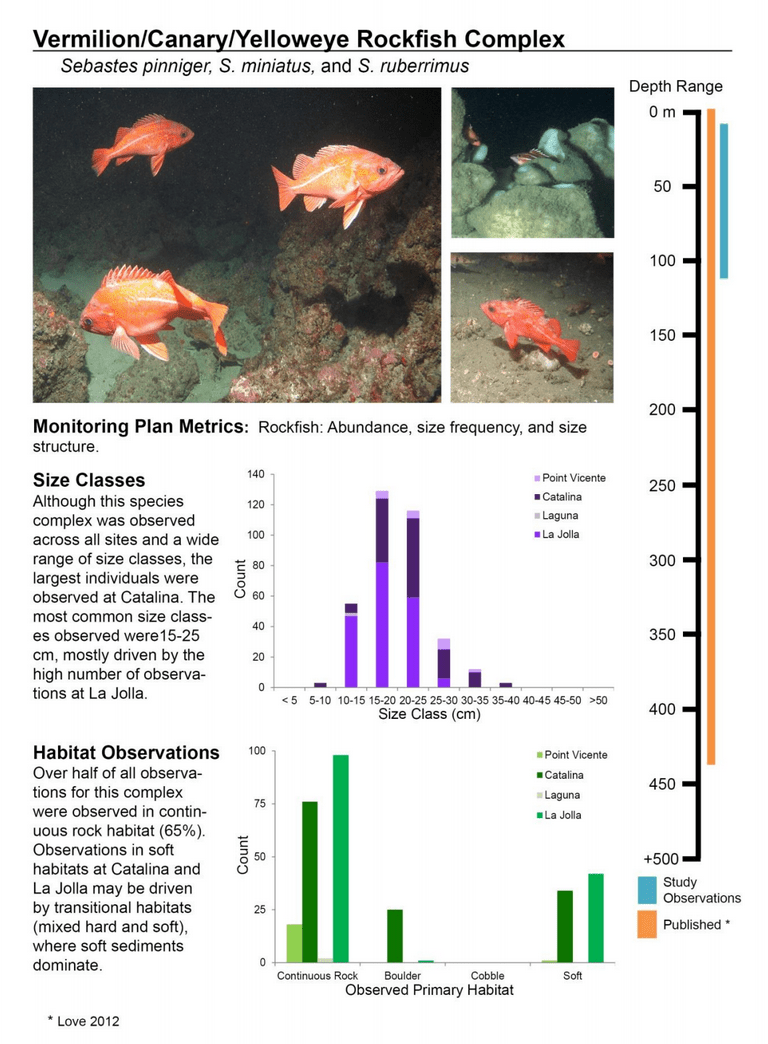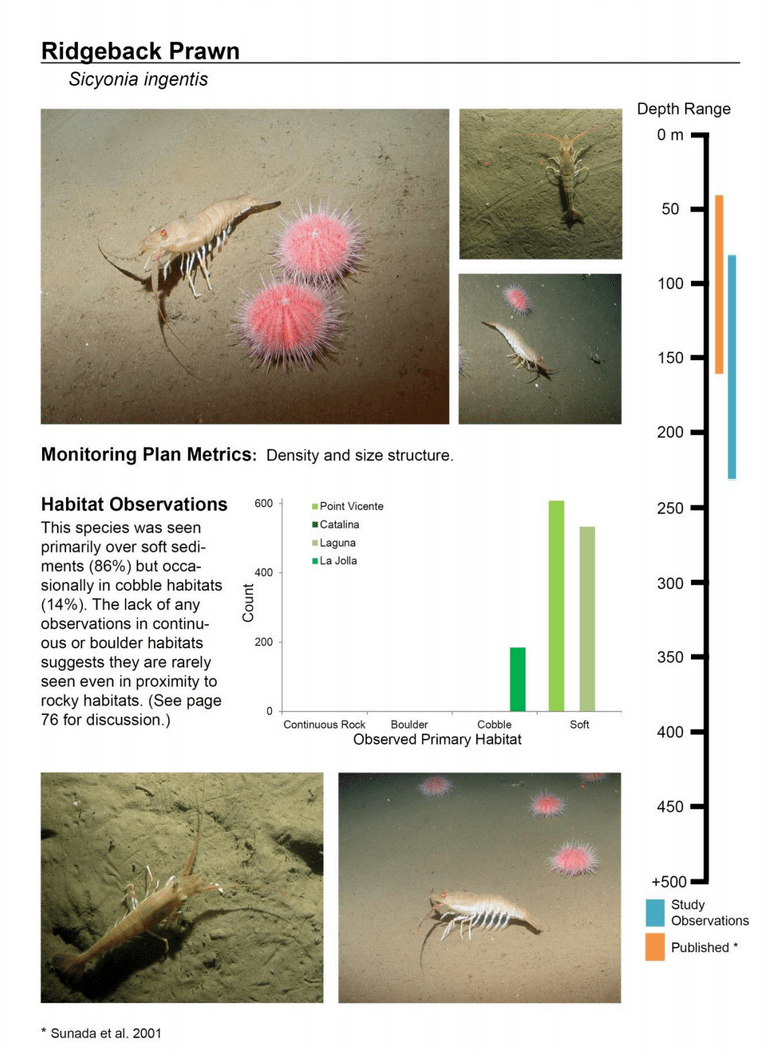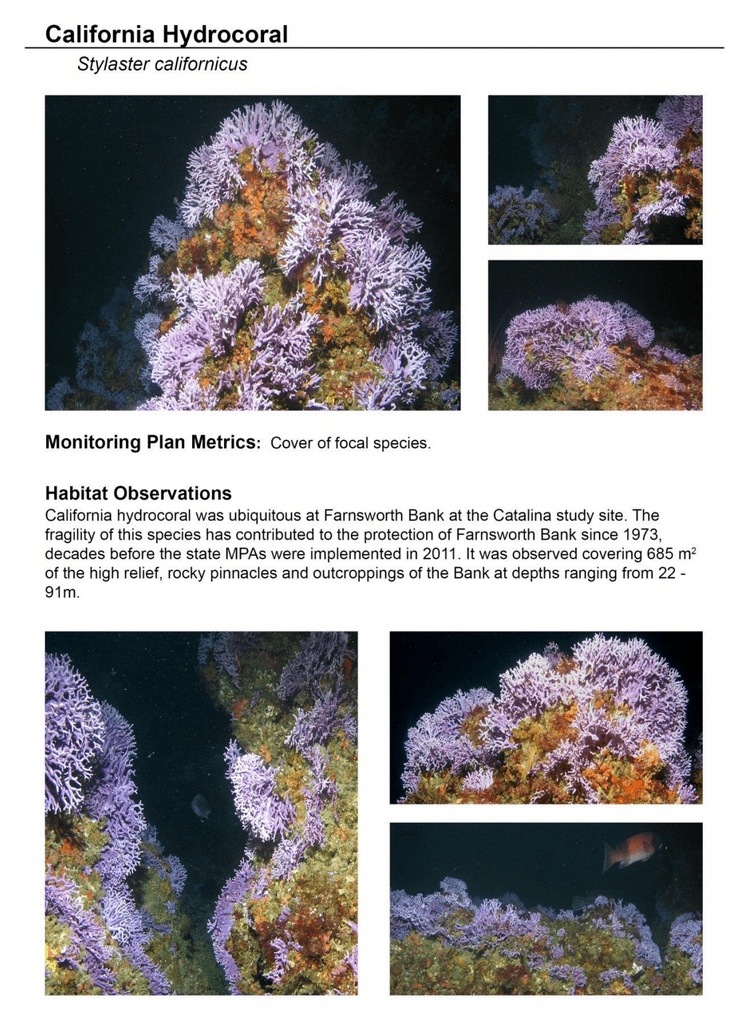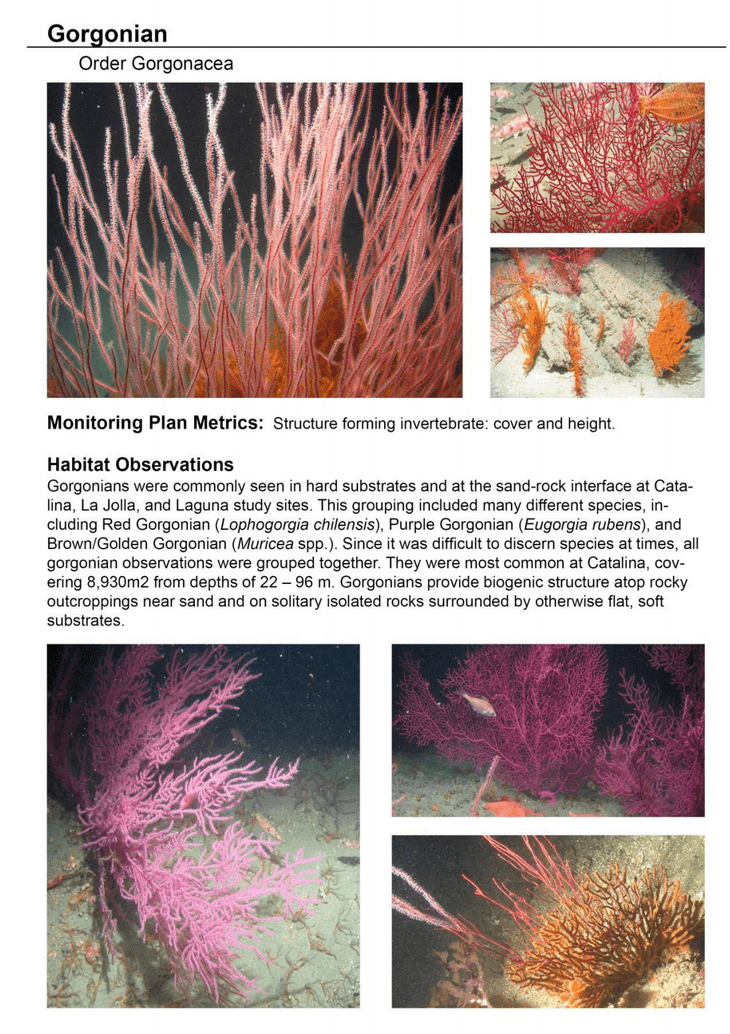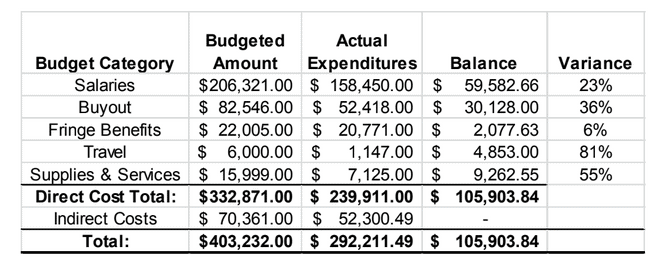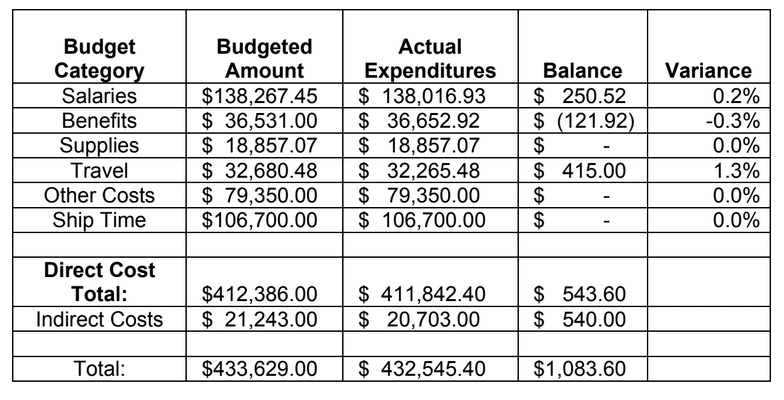Aloha Challenge

KA LĀ HIKI OLA:
The dawning of a new day. Optimism. The value of hope and promise.
Dear Friend,
In the spirit of ka la hiki ola, MARE is heading to Hawai’i later this year to support their Sustainable Hawai’i Initiative. This statewide collaborative includes a bold goal to effectively manage 30% of their nearshore waters by 2030. The UN is partnering with Hawai’i, finding alignment with their own Sustainable Development Goals. Success in Hawai’i offers hope around the world. Hawai’i’s plan addresses concerns that other Island nations face and may serve as a road map for intervention and recovery.

Intelligent ocean management is a proven strategy to promote resilience and sustainability in our deep sea ecosystems. With so little ocean explored, we need to look further, deeper, and more intently to bring accurate information to develop effective solutions. This is where MARE comes in, because when you can see a problem, you can solve a problem.
MARE partners for intelligent ocean management. In Hawai’i, we will explore and collect data in their most biodiverse regions, and use this information to help partners protect and understand how marine life is reacting and adapting to a warming, acidifying environment. Our BATFish is the right tool for this job, with the ability to go beyond SCUBA diver depth.

We are almost there. You can make a difference!
To achieve a successful expedition we need to raise $75,000 more.
Donate today to help bring MARE’s unique technology and processes to support the Sustainable Hawai’i Initiative. We are partnering with Hawai’i’s Division of Aquatic Resources to ensure our data is actionable and integrated into their long term management plans.
**Your gift today will be doubled with a matching donation by the
Peter J Davis Family Foundation of Marin Community Foundation**
Mahalo!
![]()
Dirk Rosen
Founder and Executive Director
MARE partners for intelligent ocean management, which promotes resilience, sustainability and biodiversity in our oceans. Your tax deductible gift is used in marine exploration, discovery, and protection, to ensure a healthy ocean for generations.
When you donate to MARE, you are investing in our blue planet.







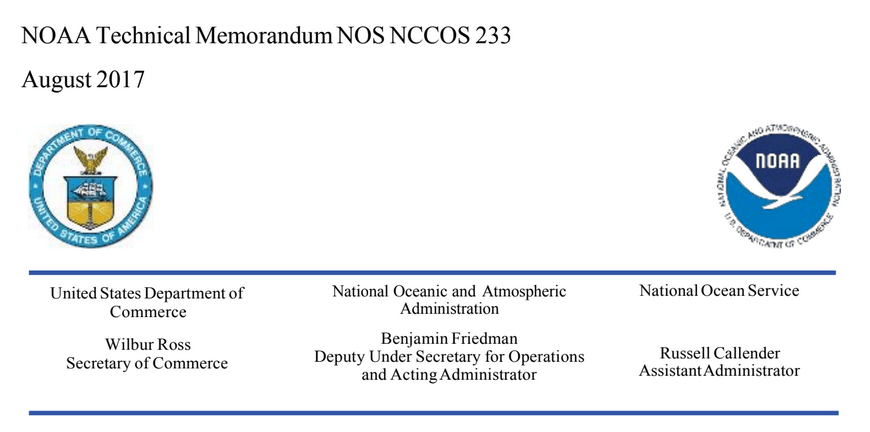
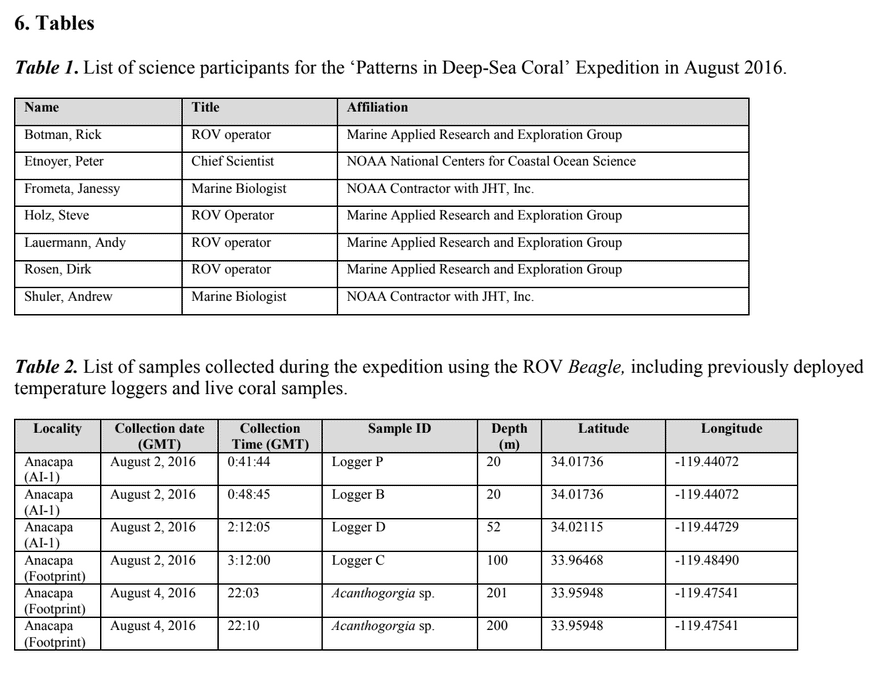
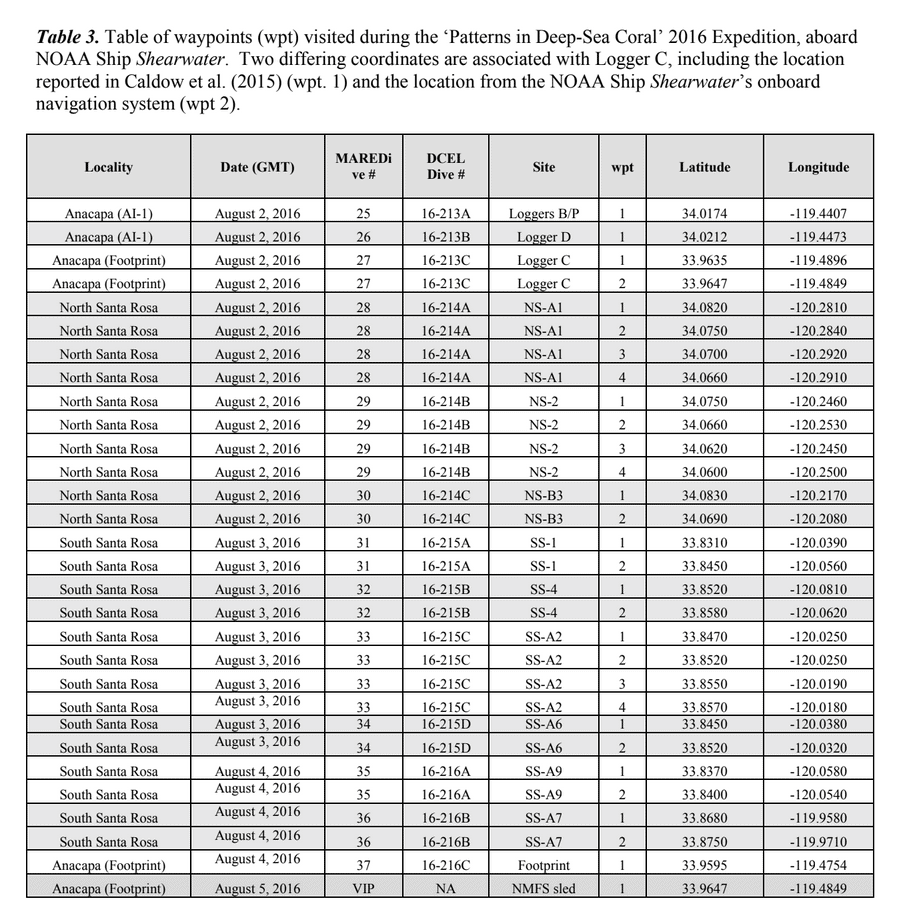
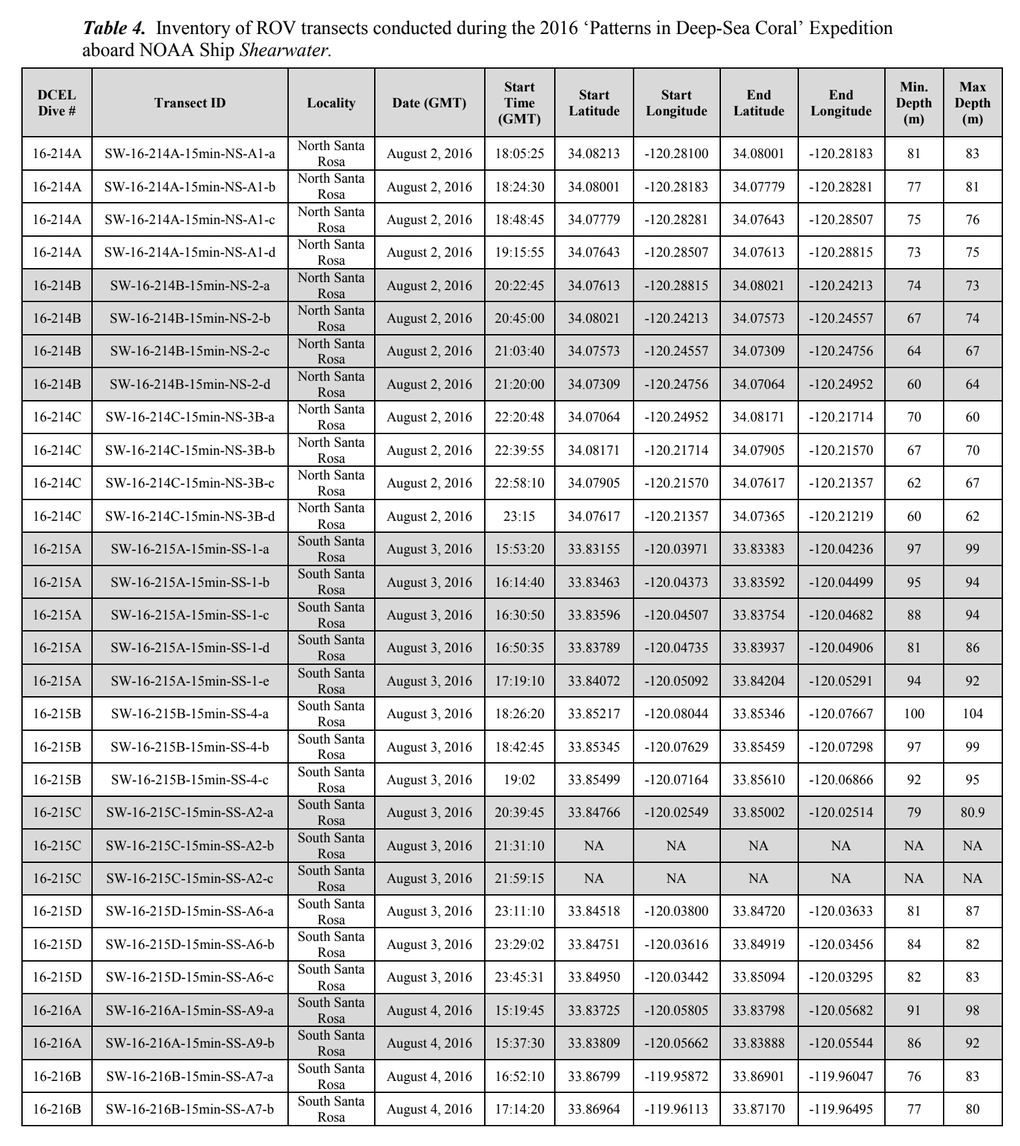
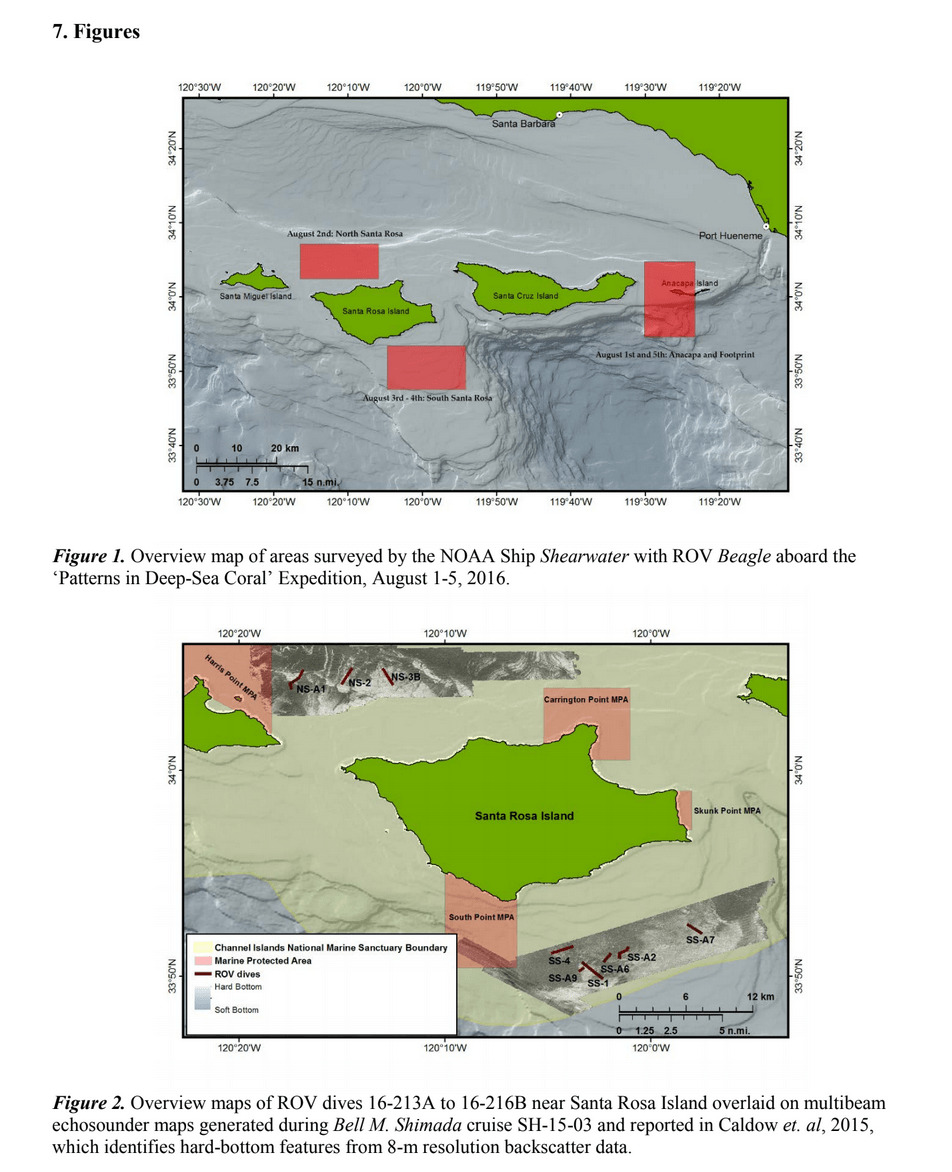
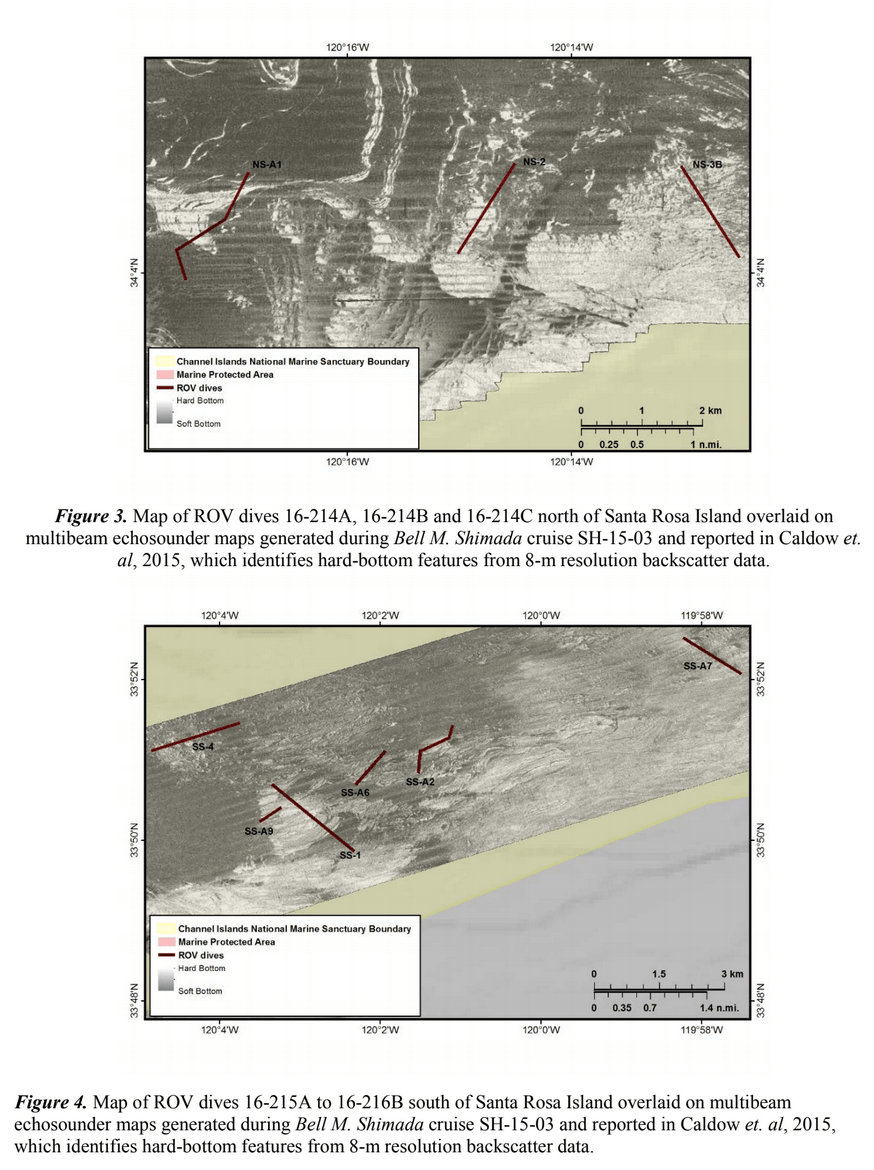
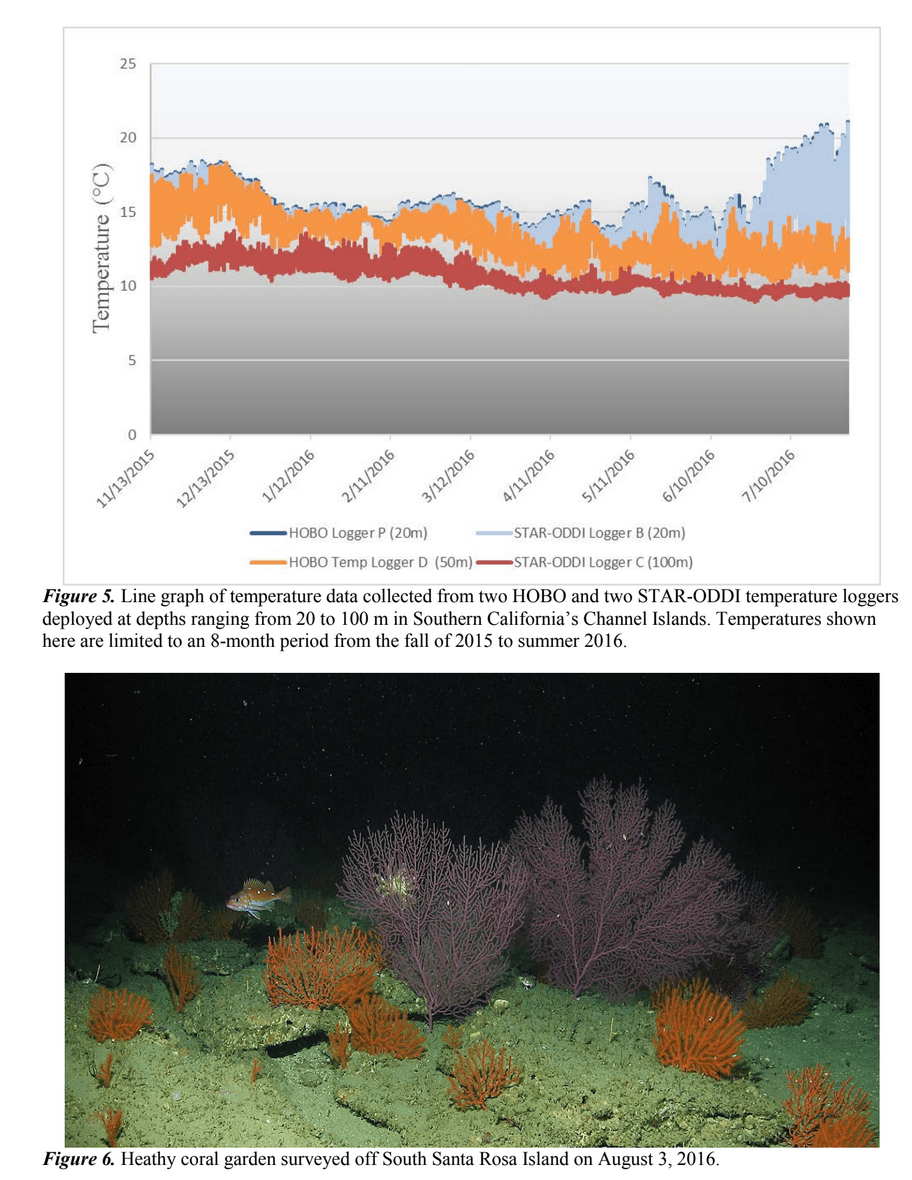
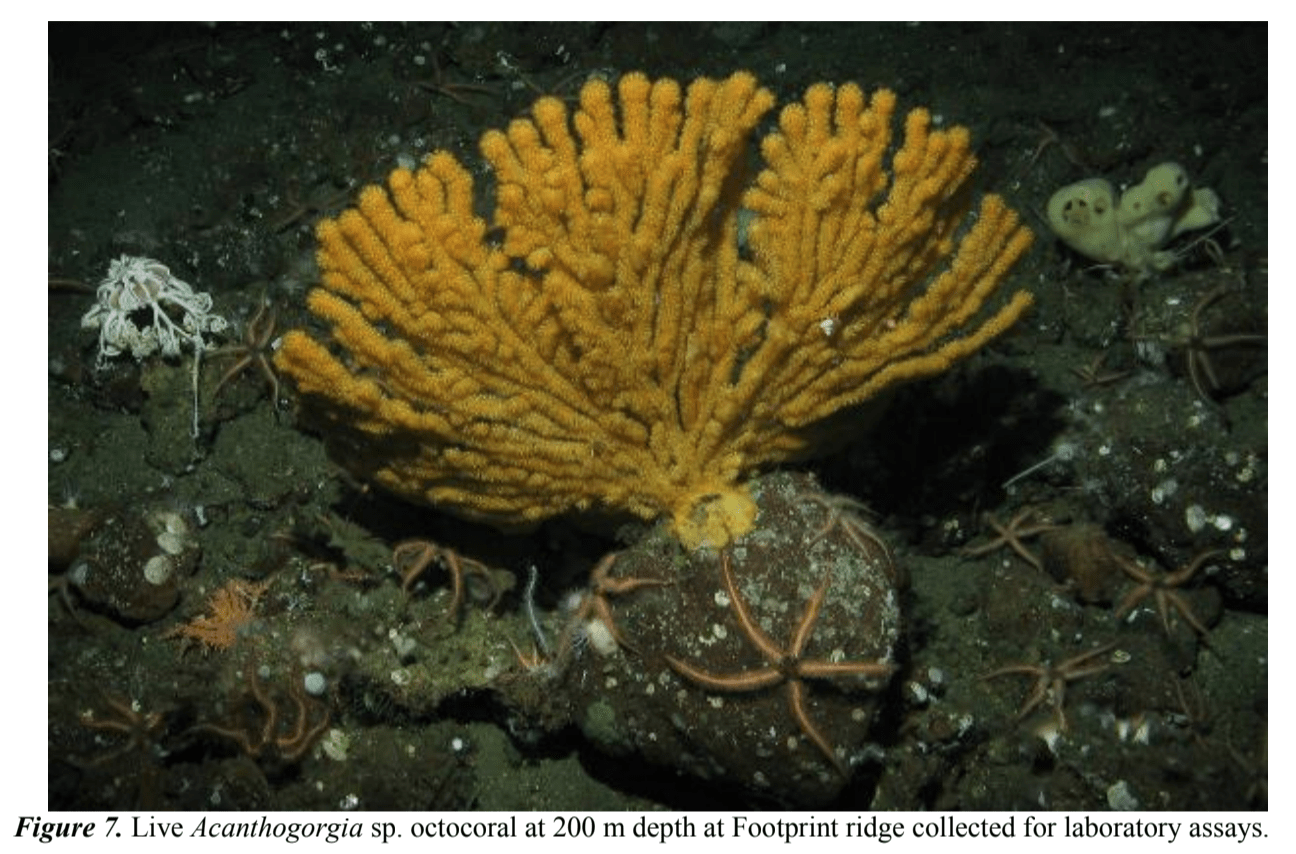
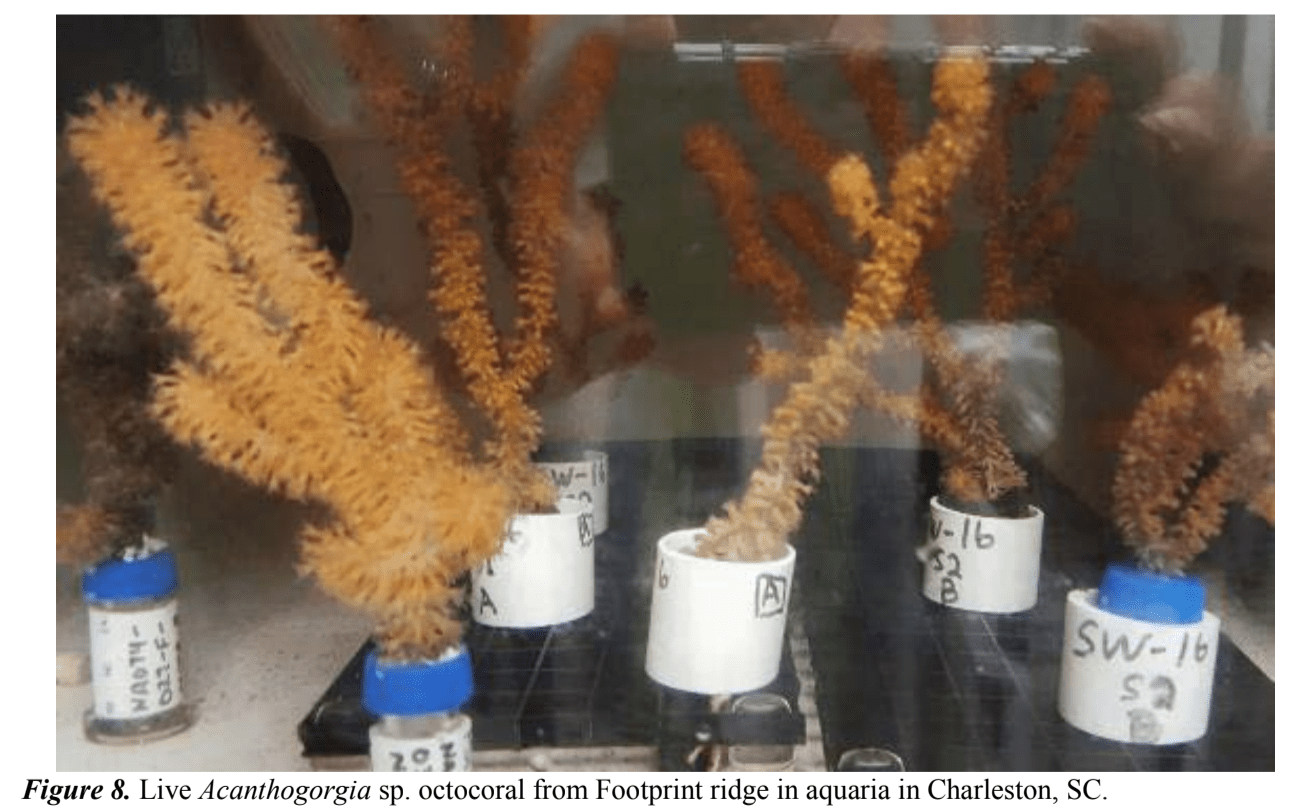
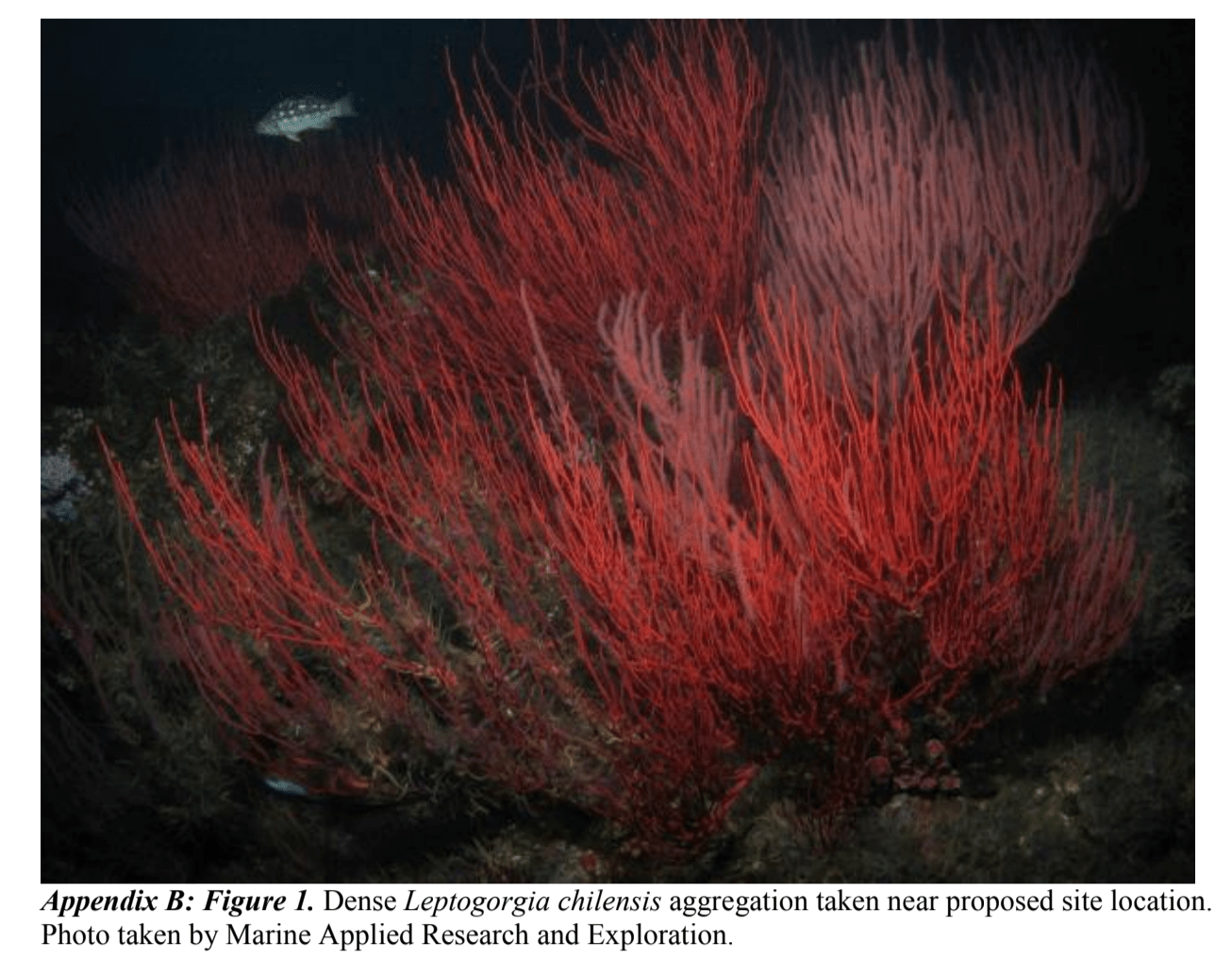
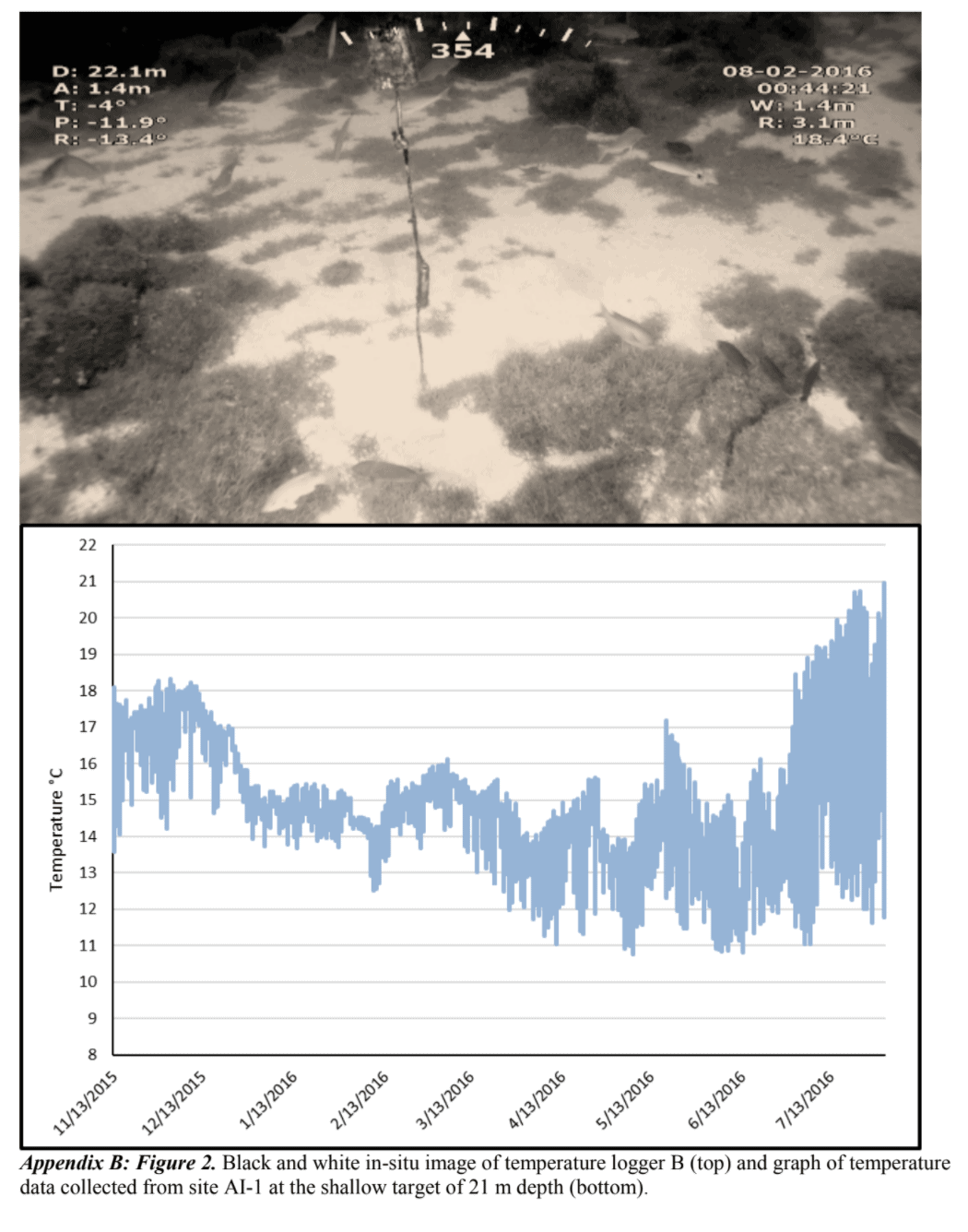

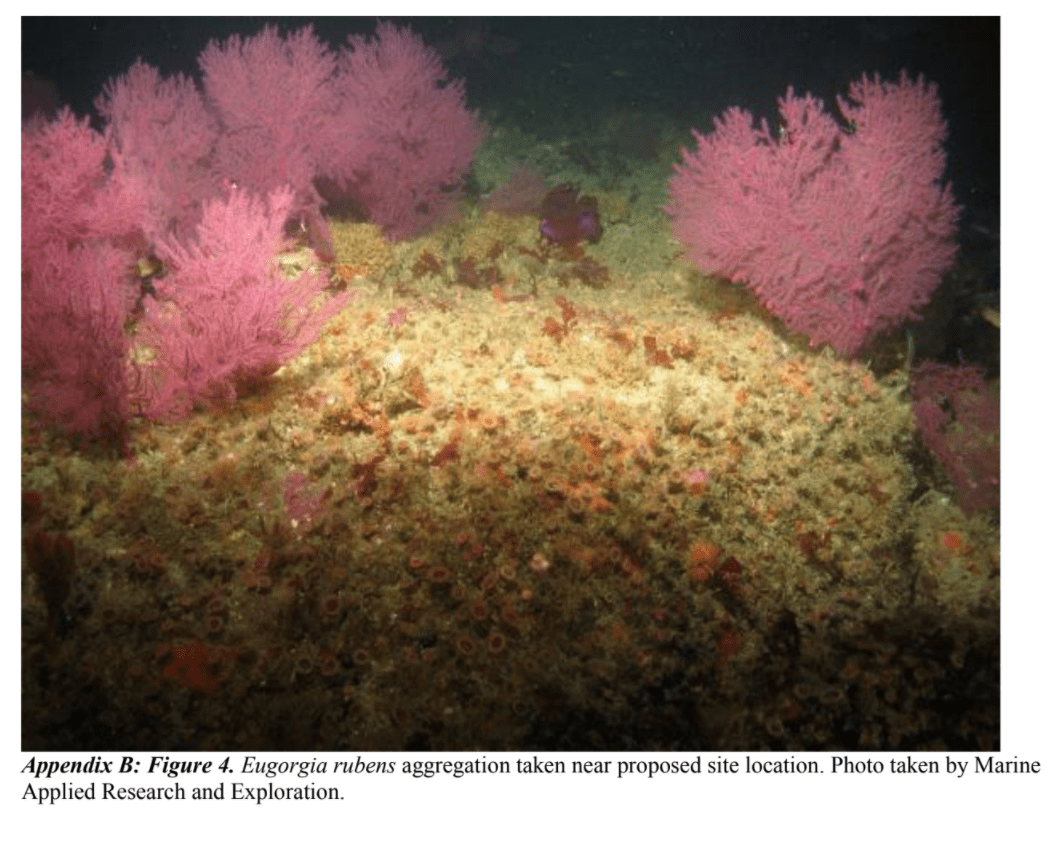


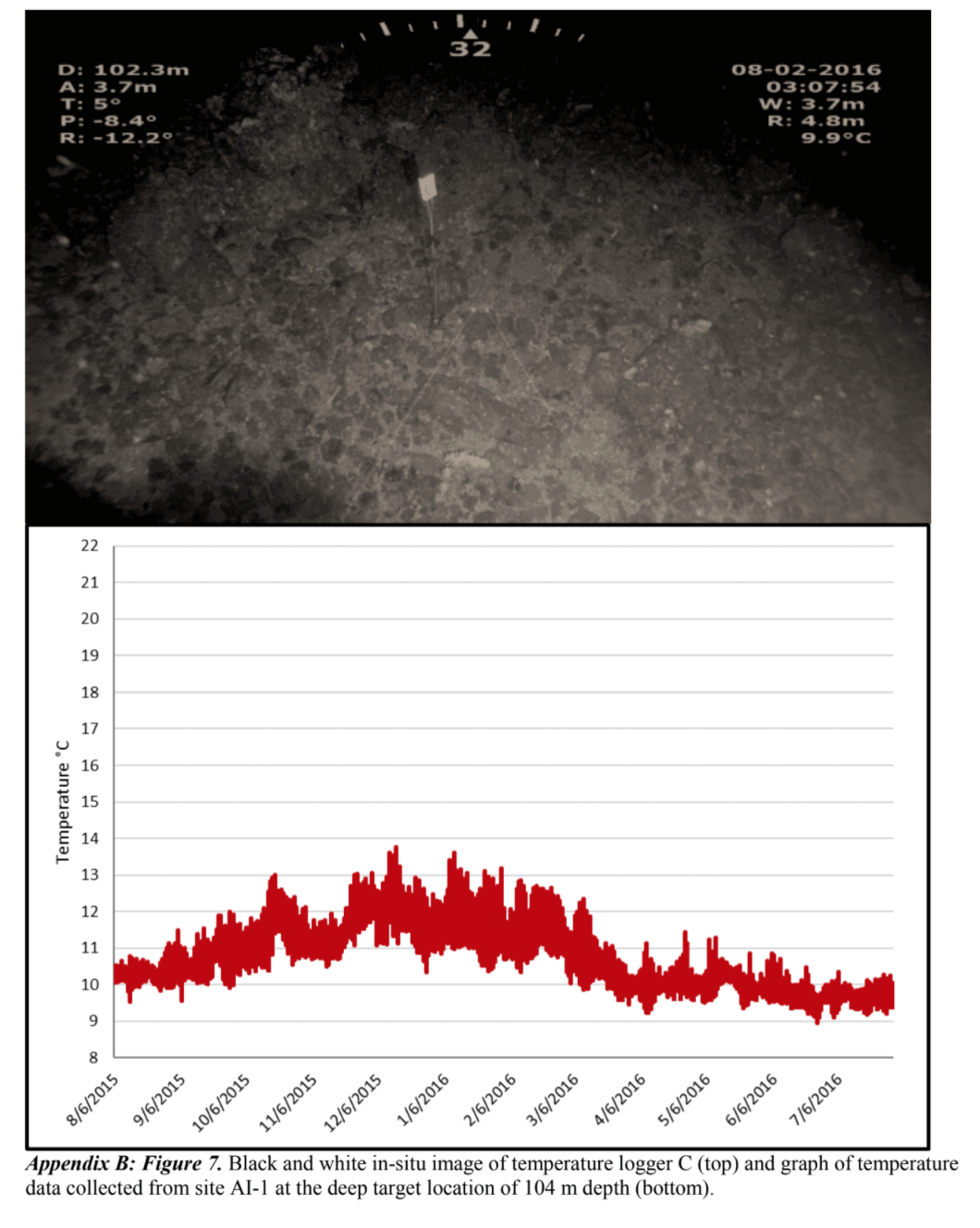
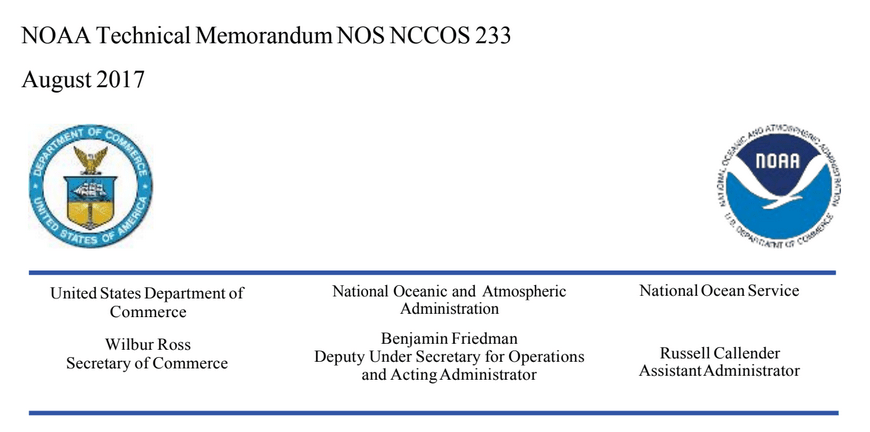
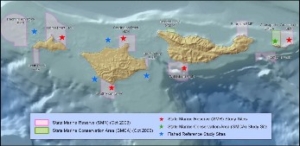
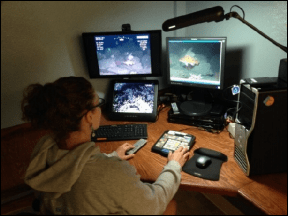
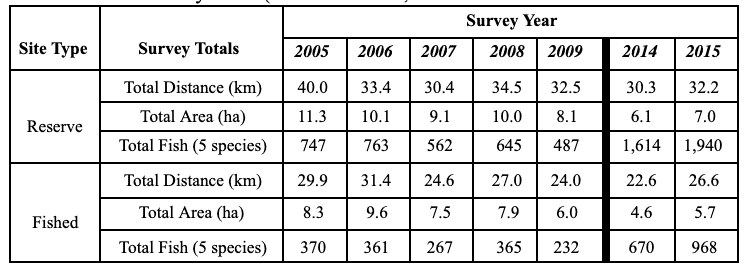


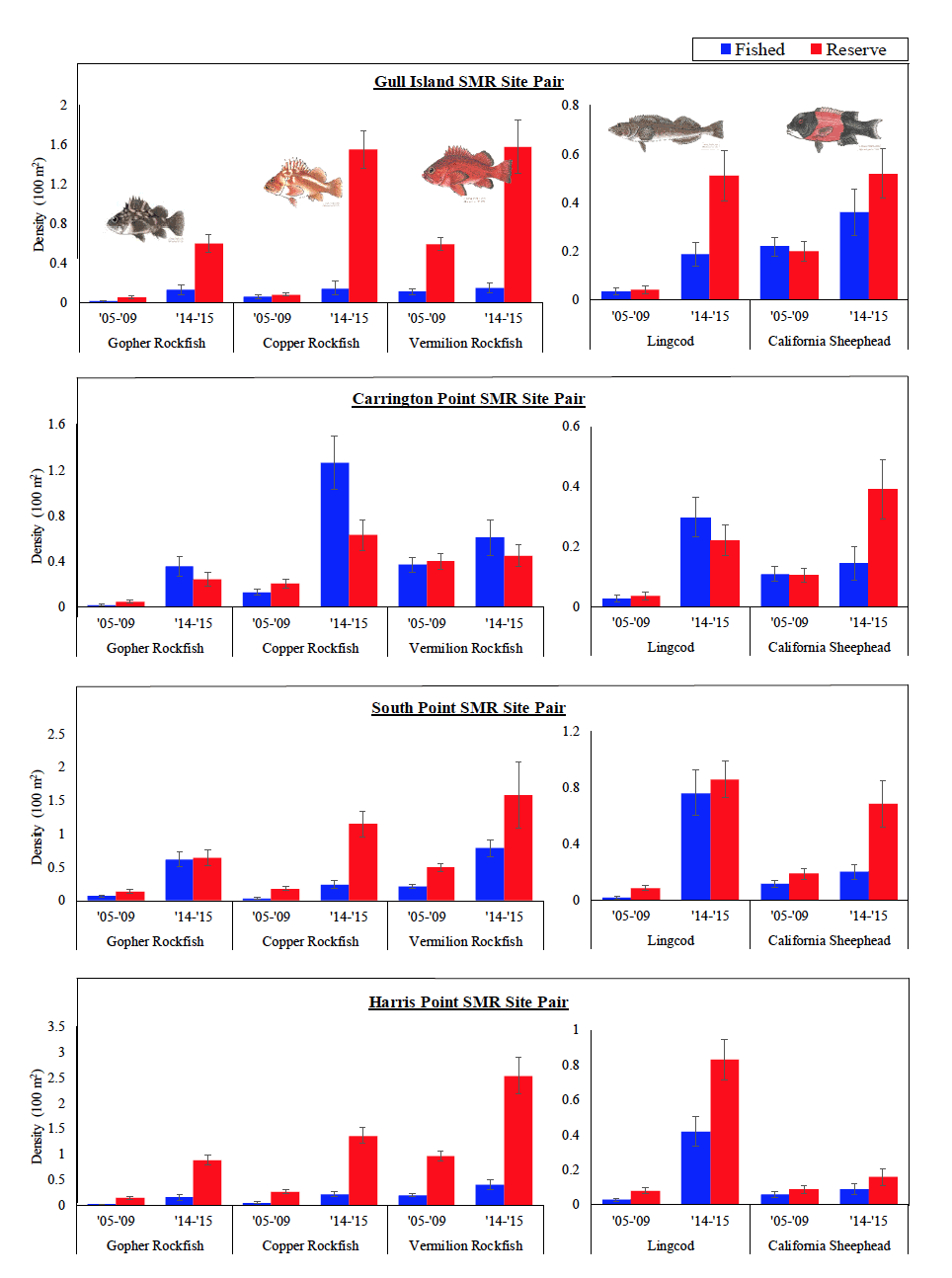
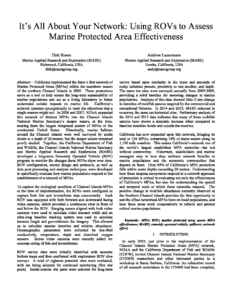
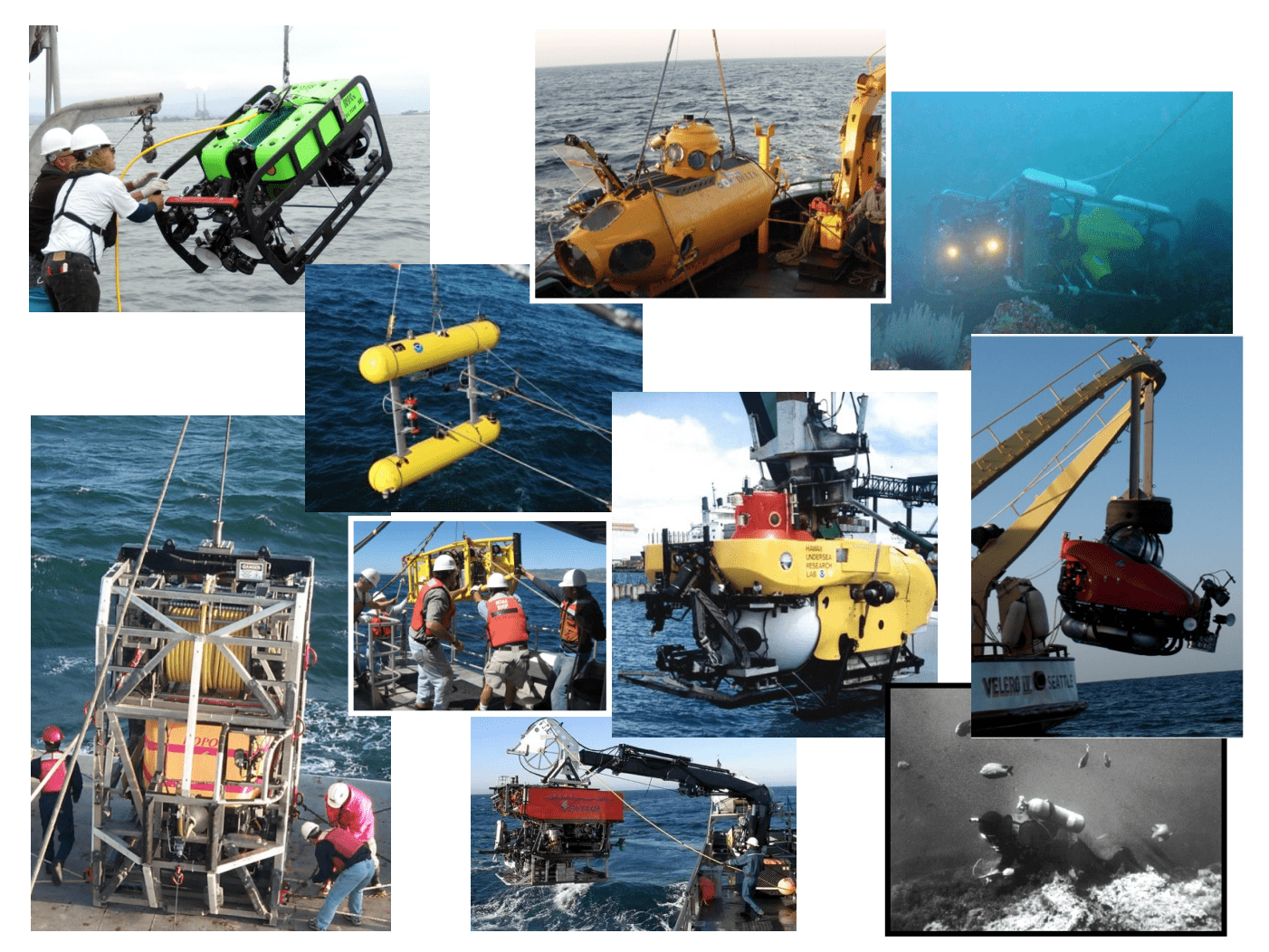
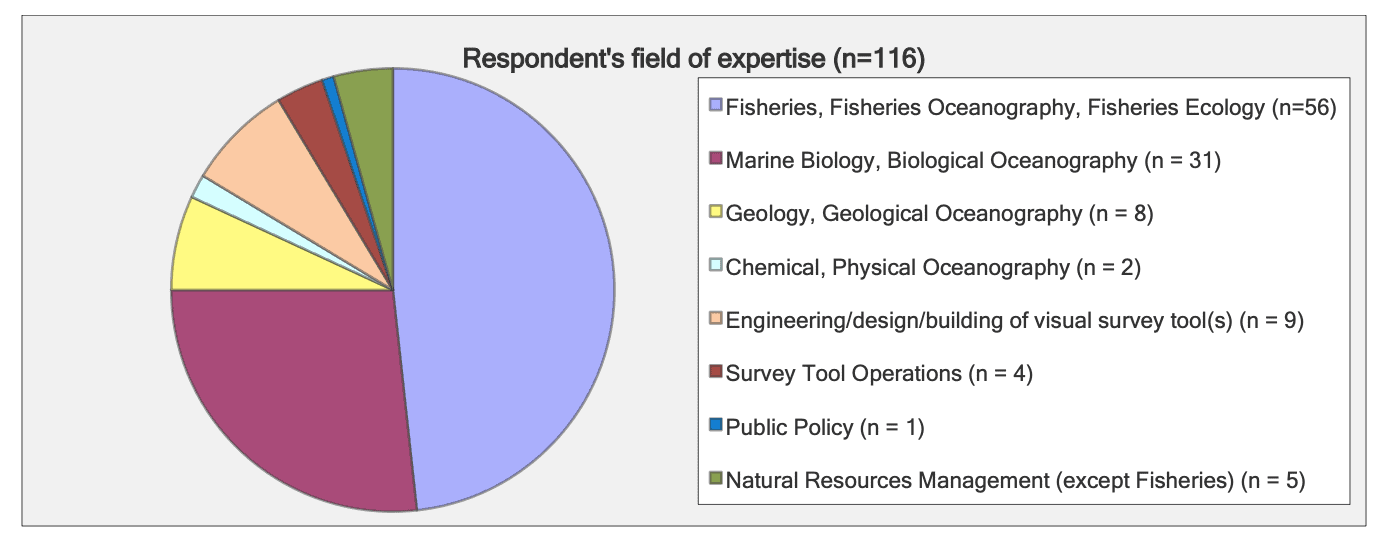



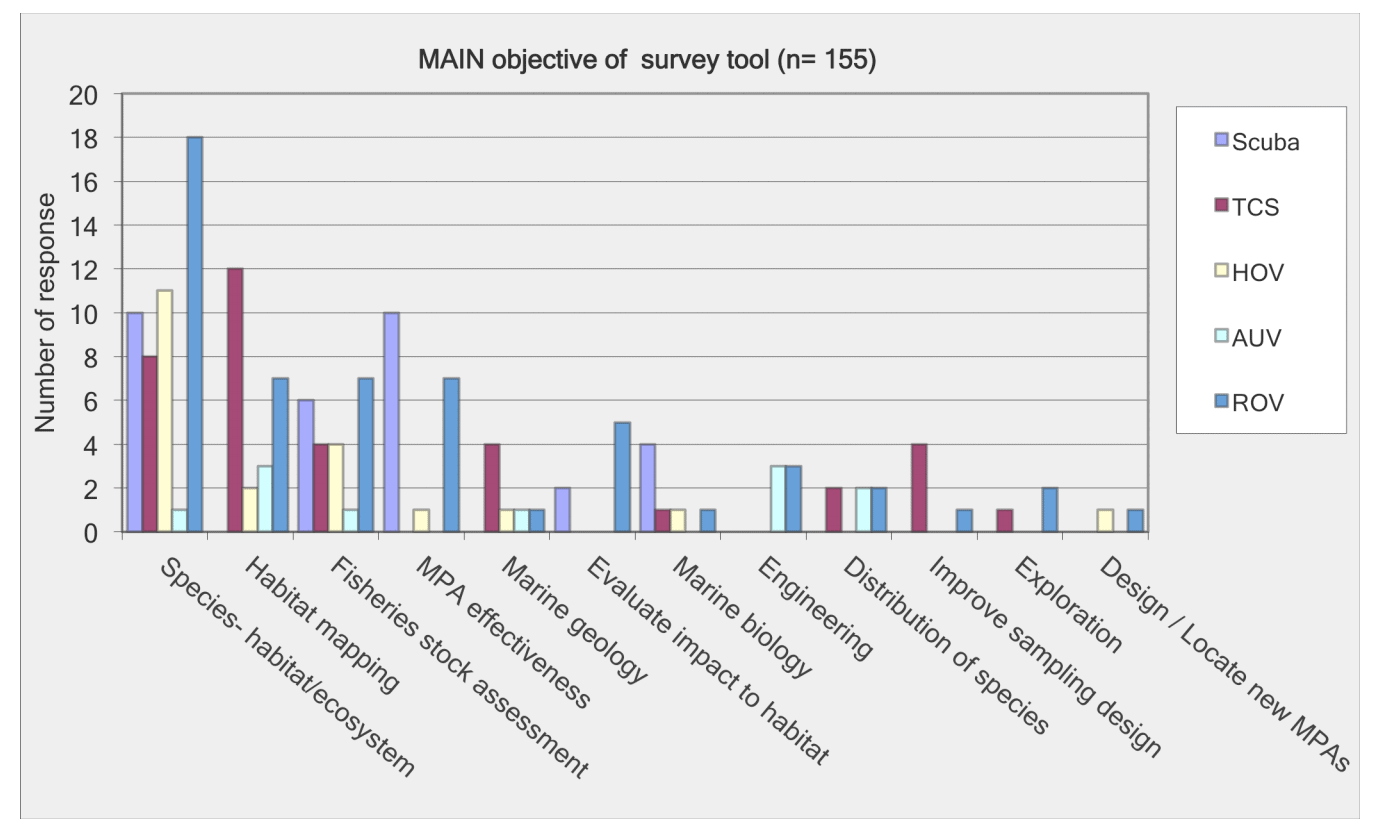
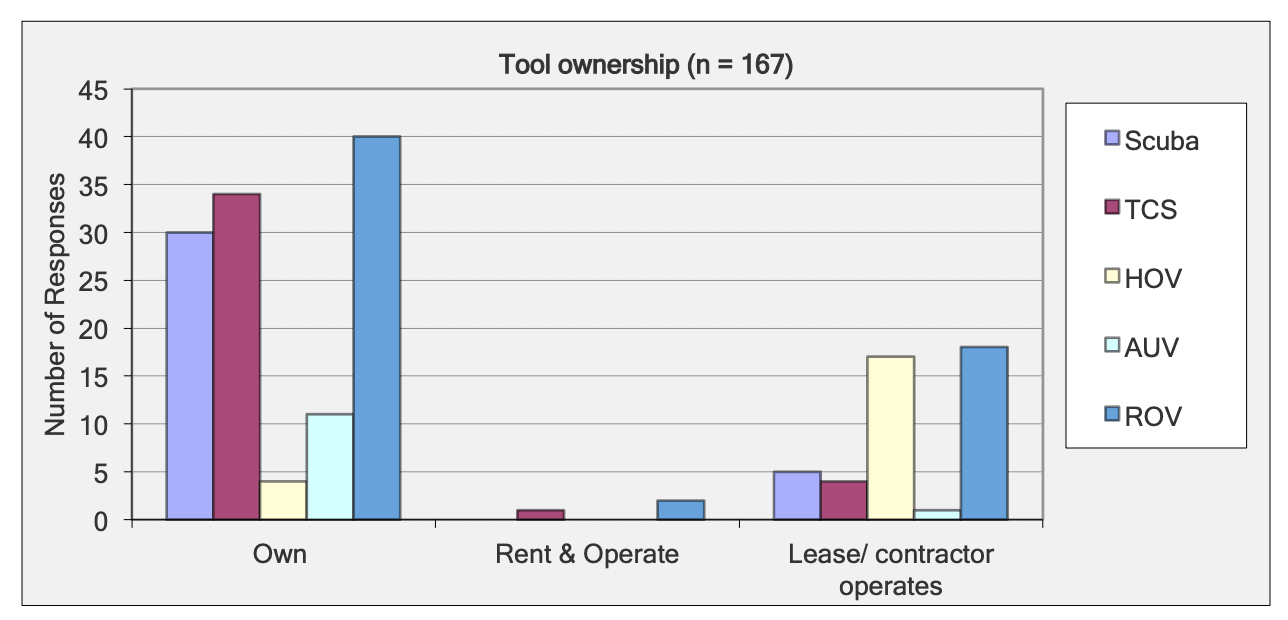


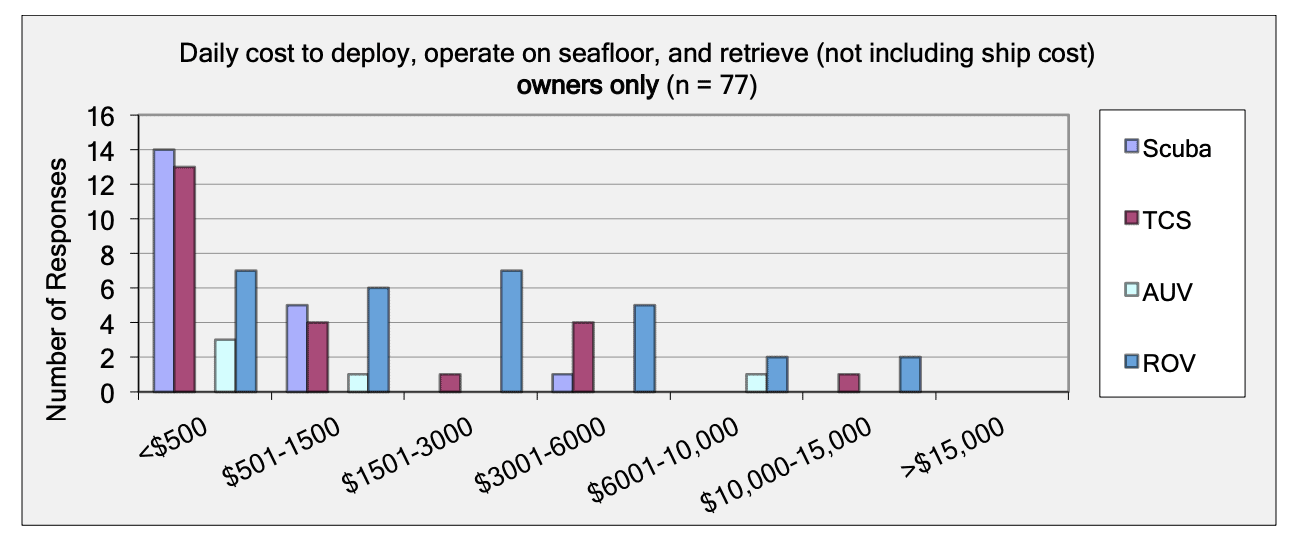
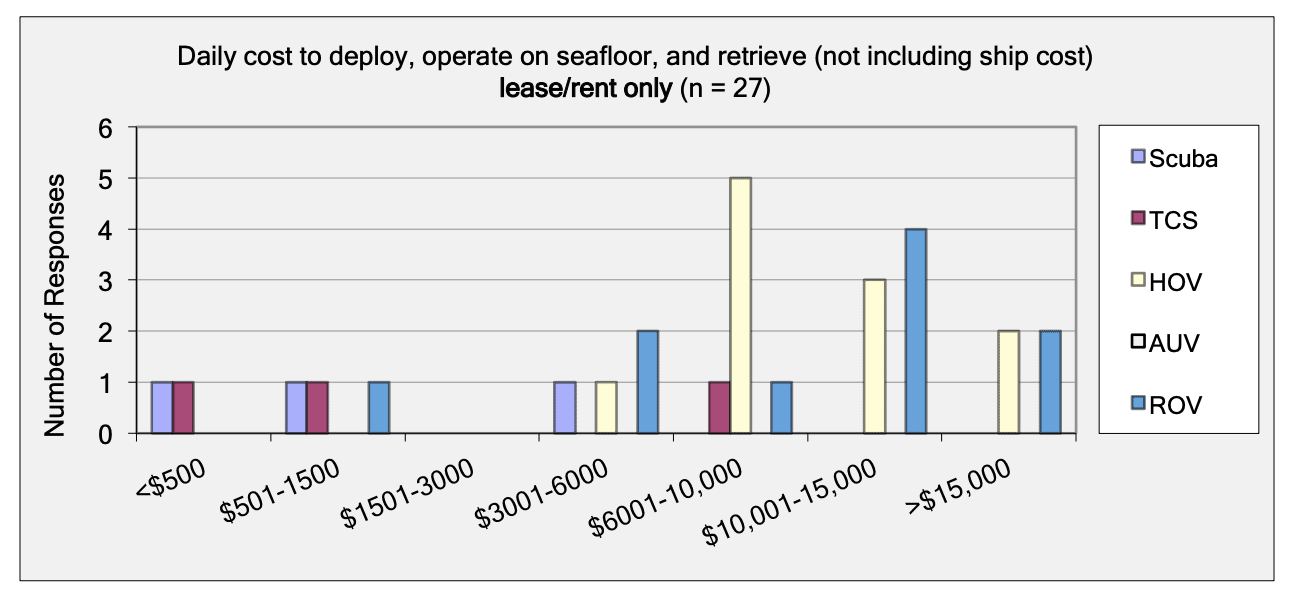 For shallow working depths it appears that the number of ROV users who own this tool equals the number of ROV users who lease/rent. For working in deeper depths (>50m) it appears that more users own, however in very deep depths (>1000m) more people lease/rent, than own.
For shallow working depths it appears that the number of ROV users who own this tool equals the number of ROV users who lease/rent. For working in deeper depths (>50m) it appears that more users own, however in very deep depths (>1000m) more people lease/rent, than own.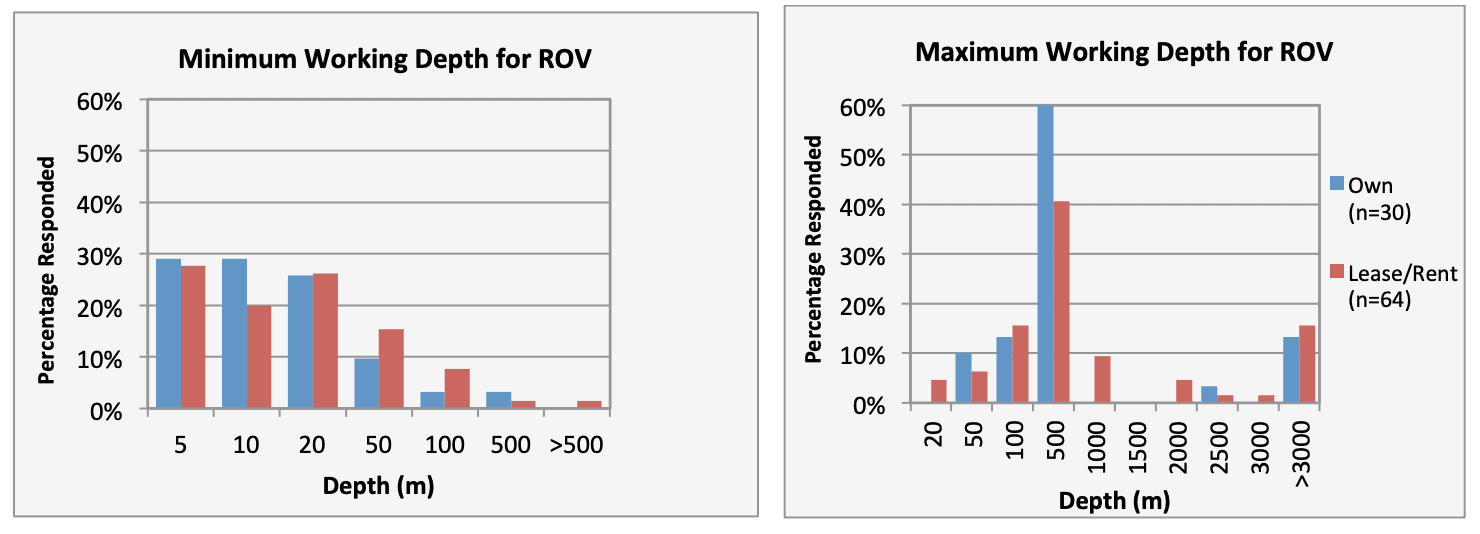
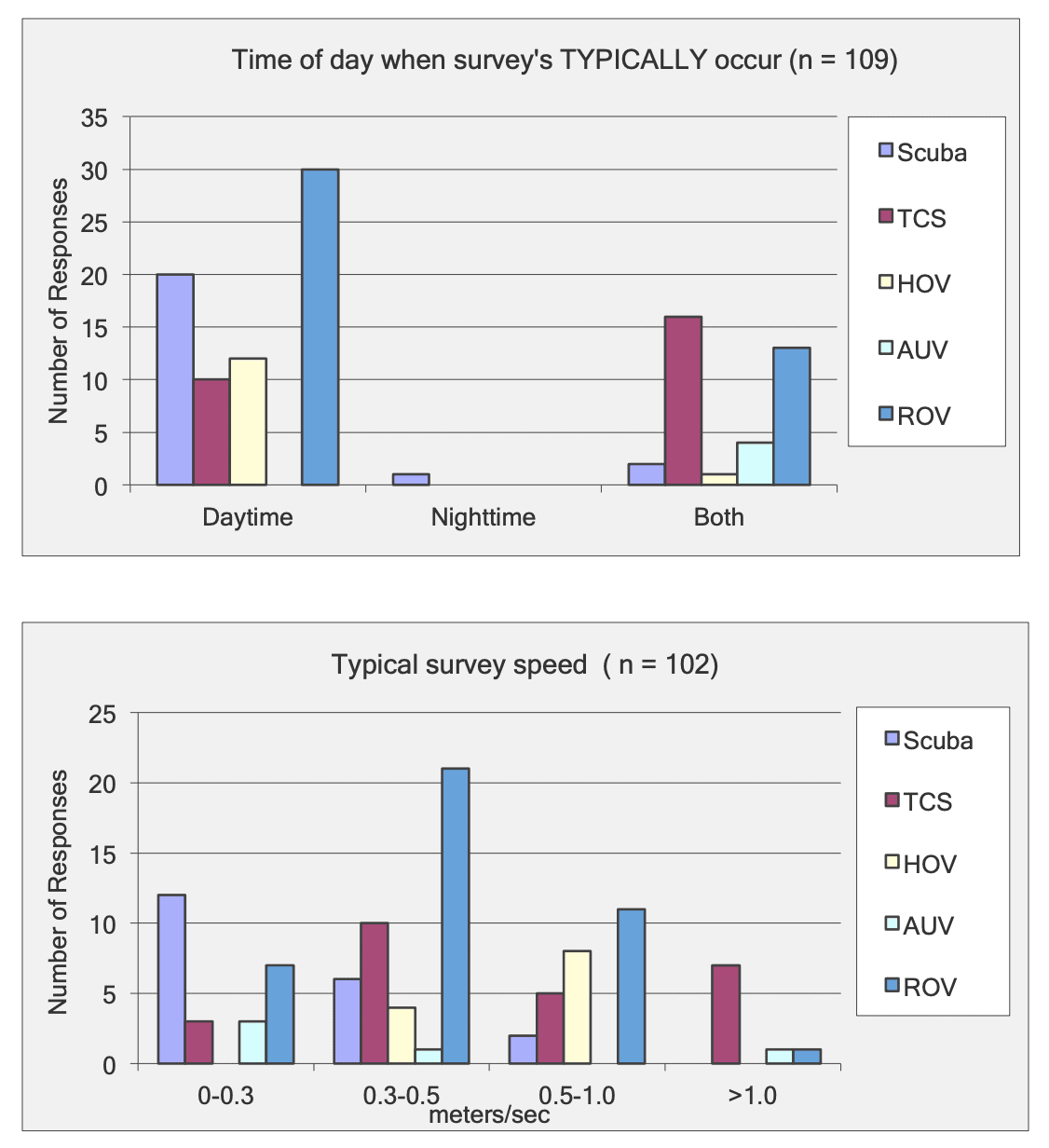
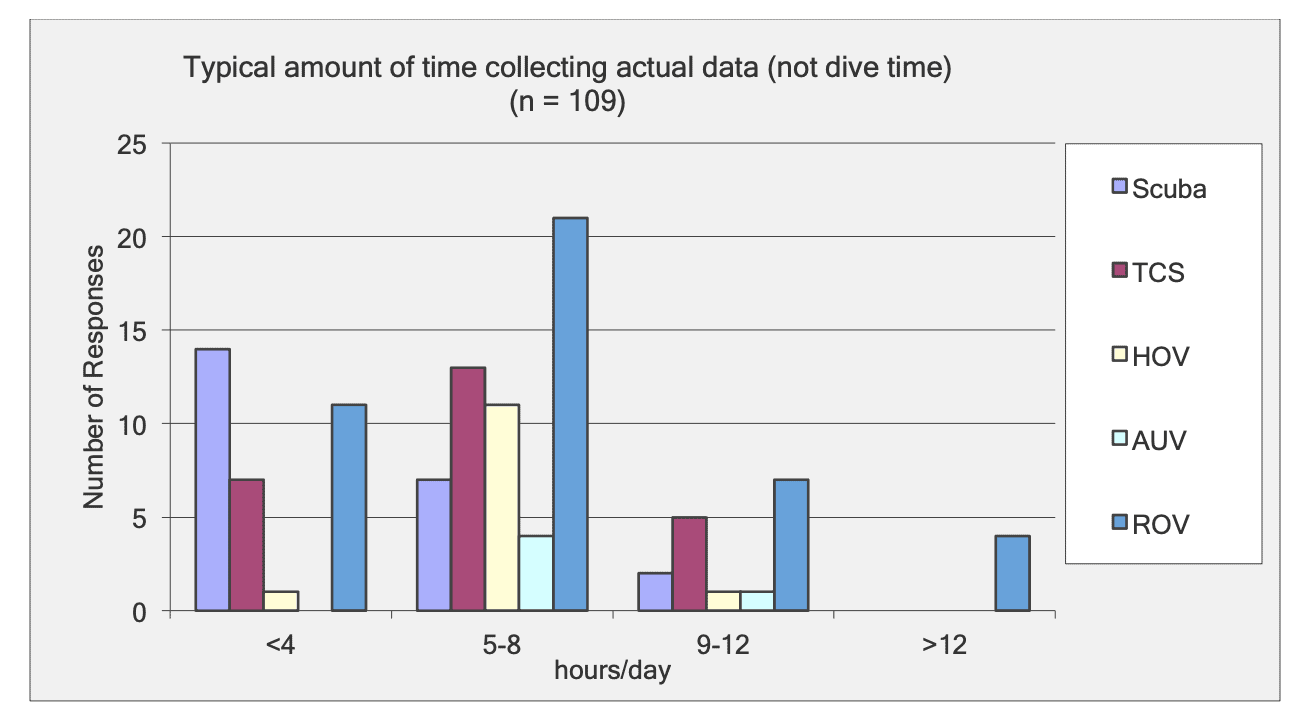
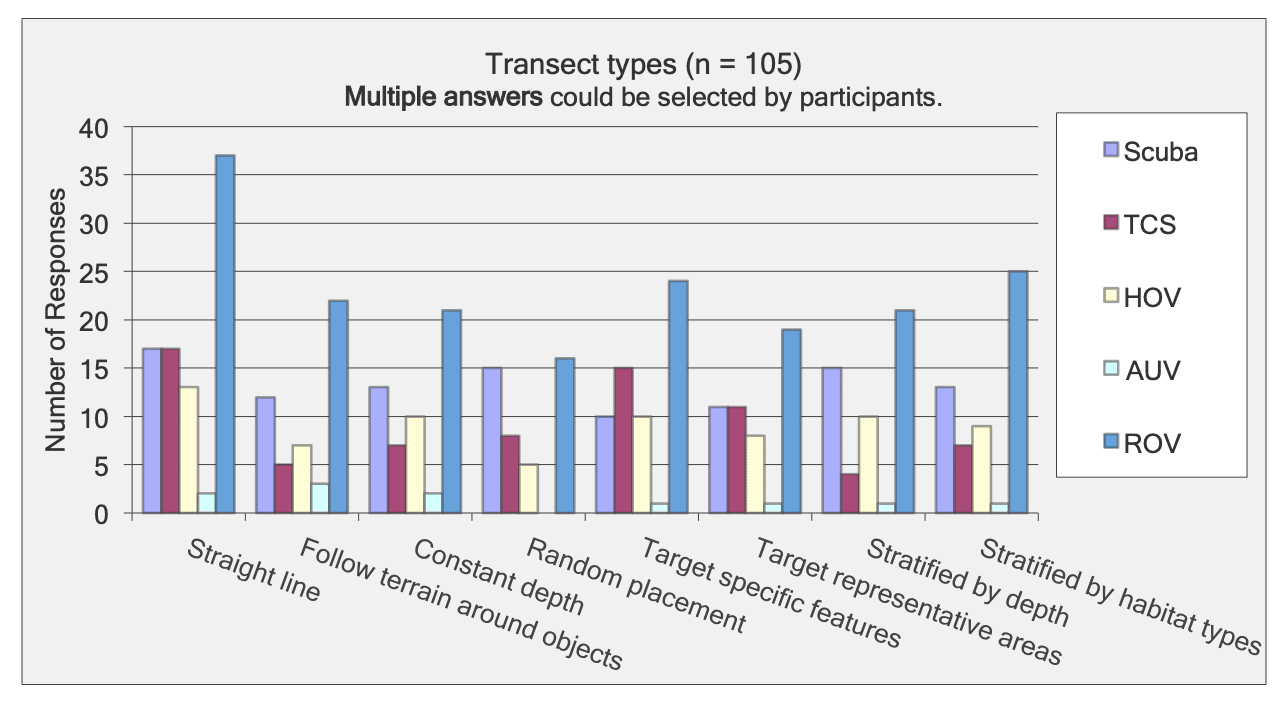
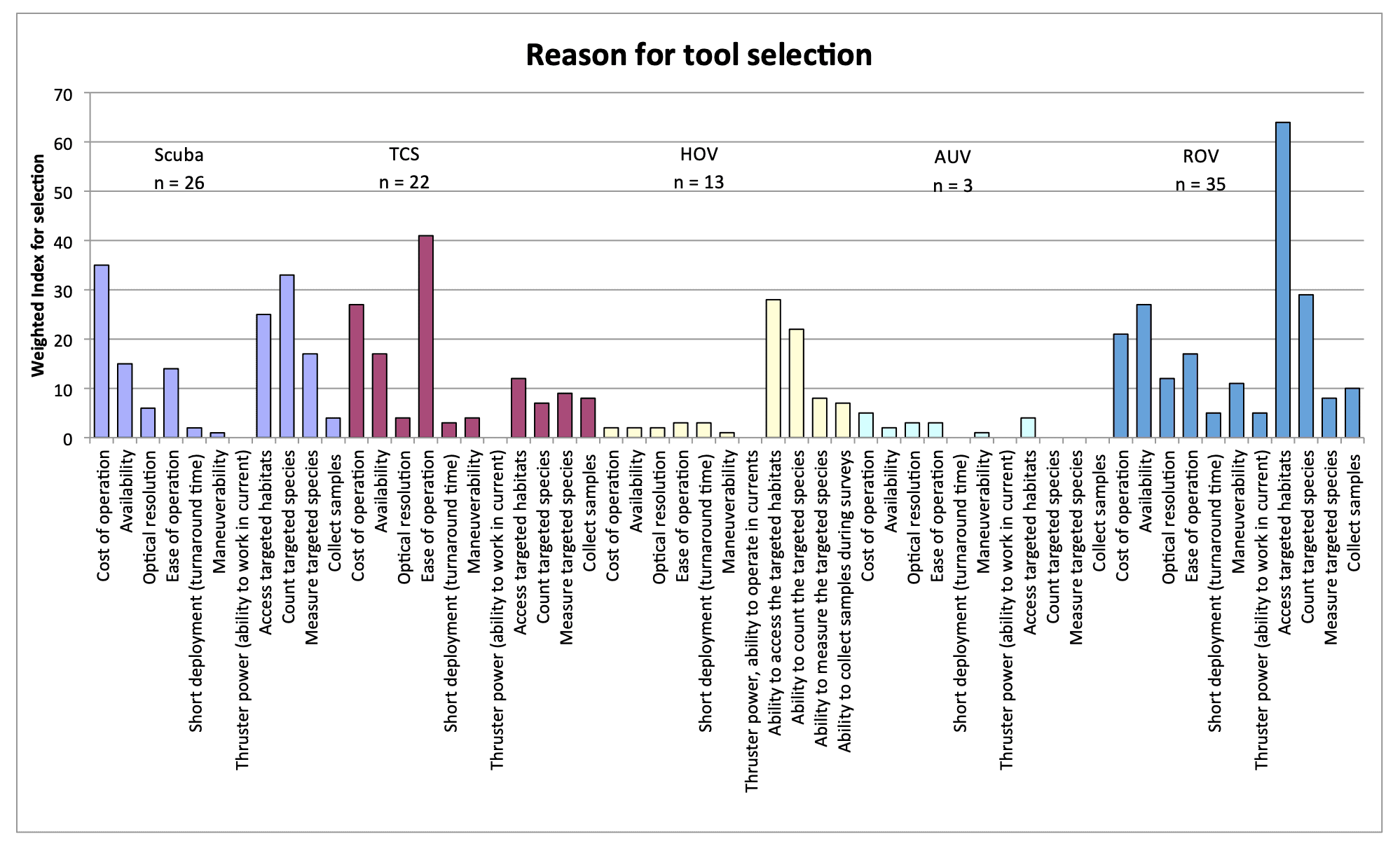
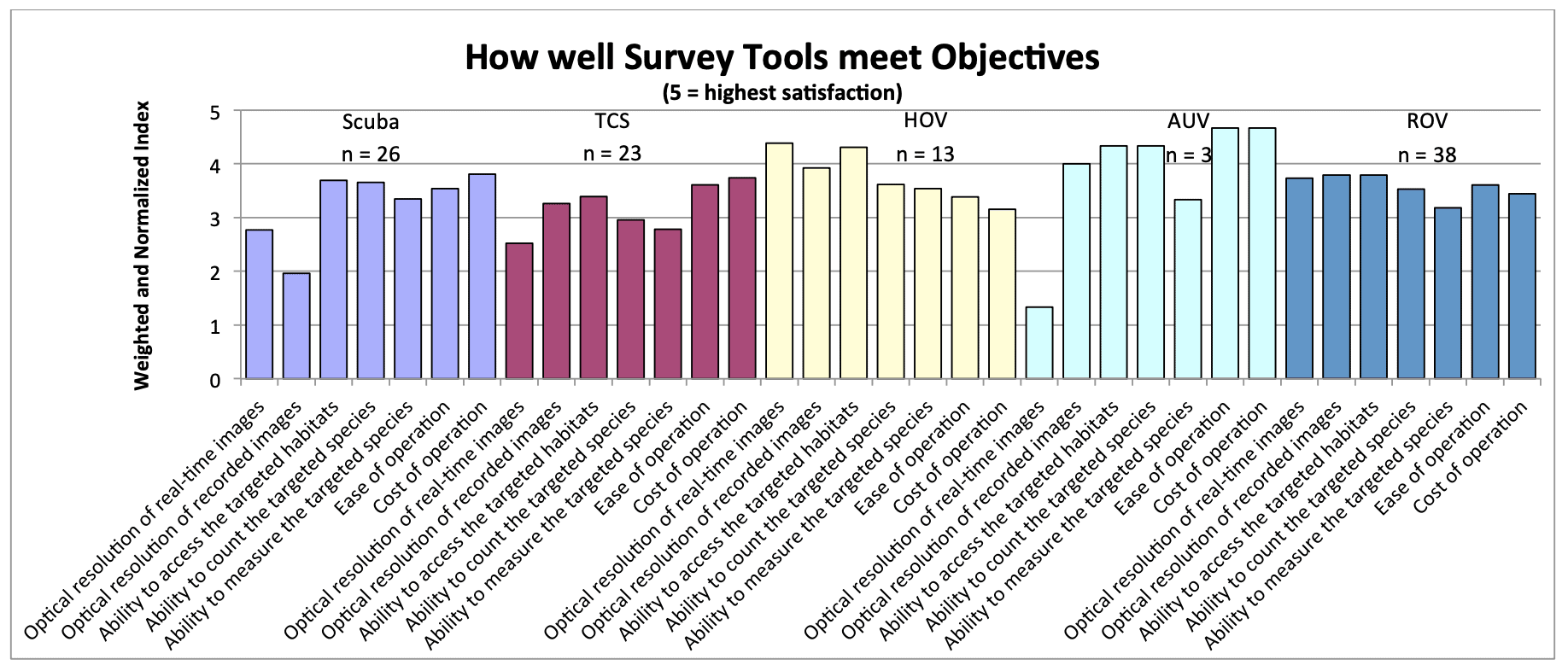
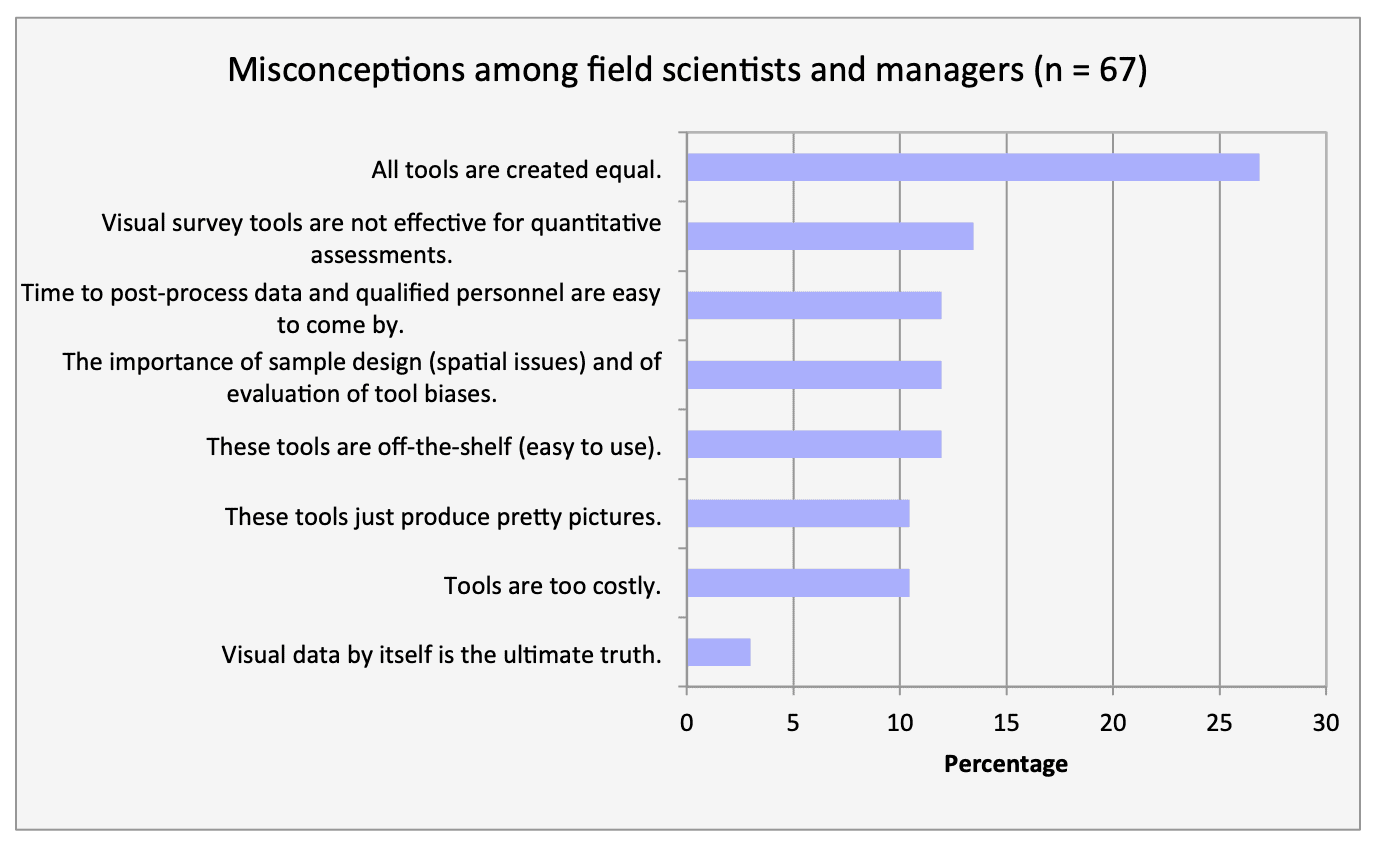

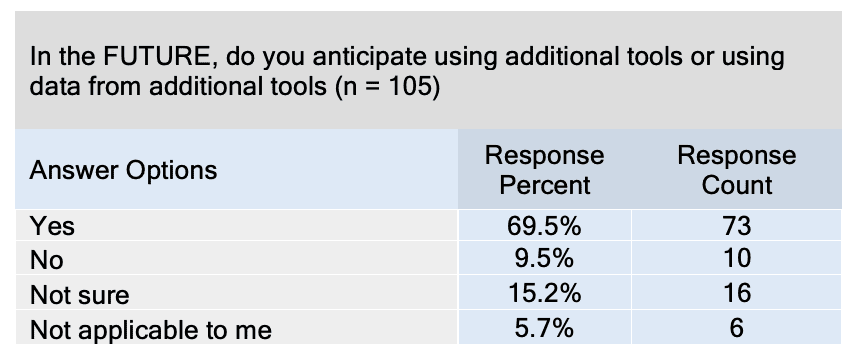
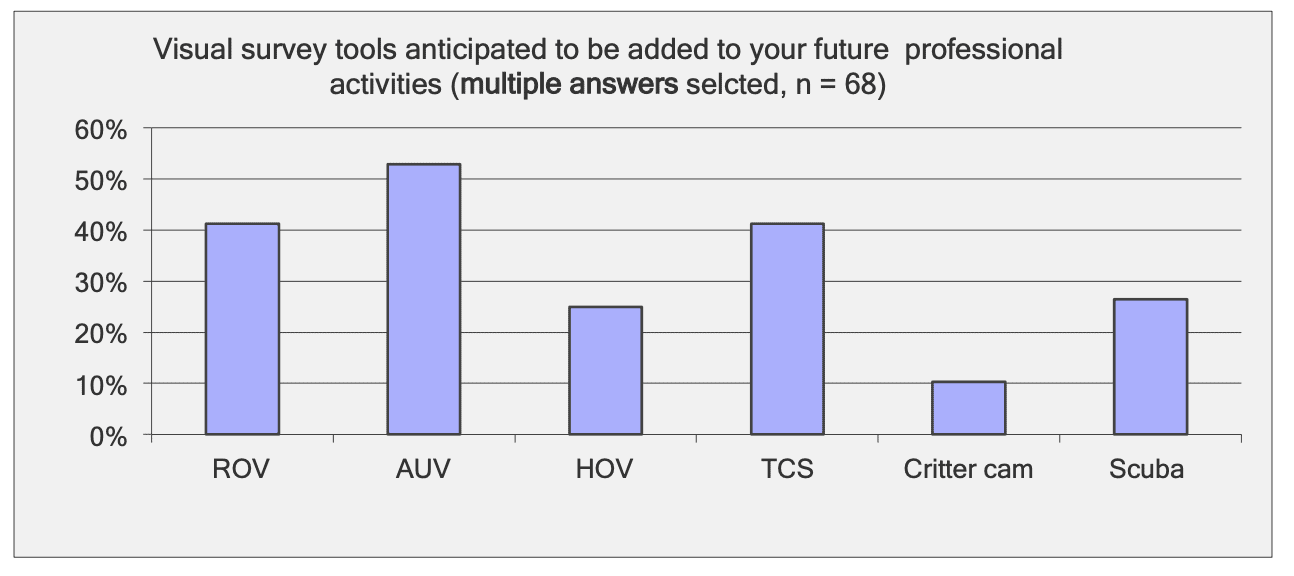
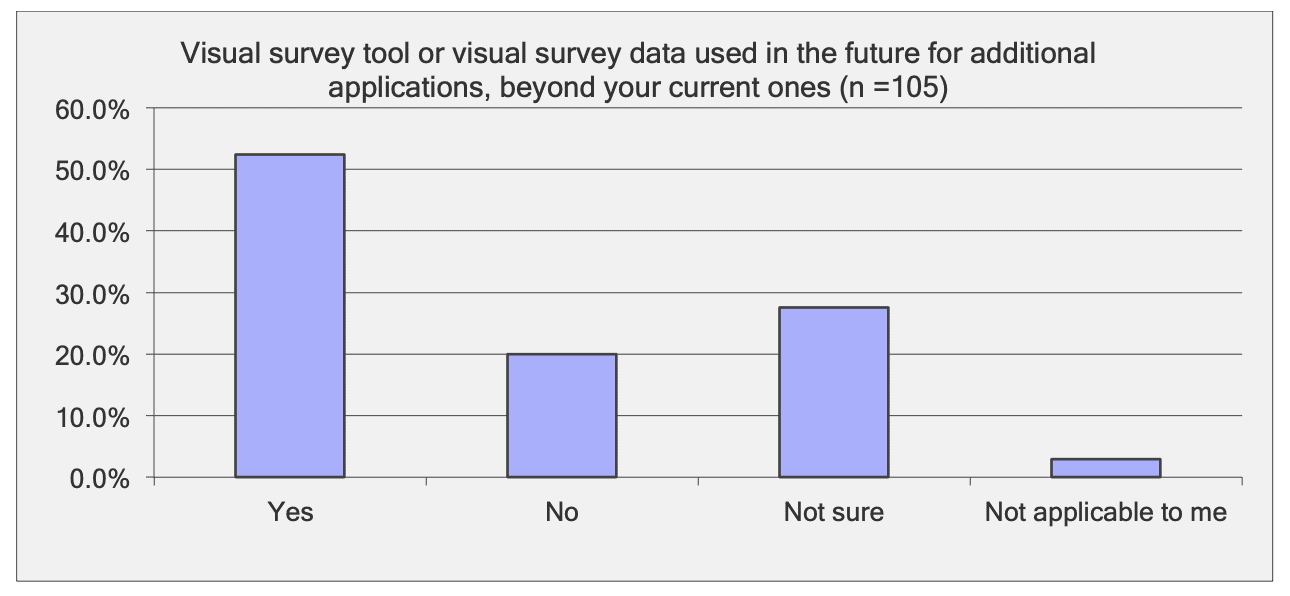
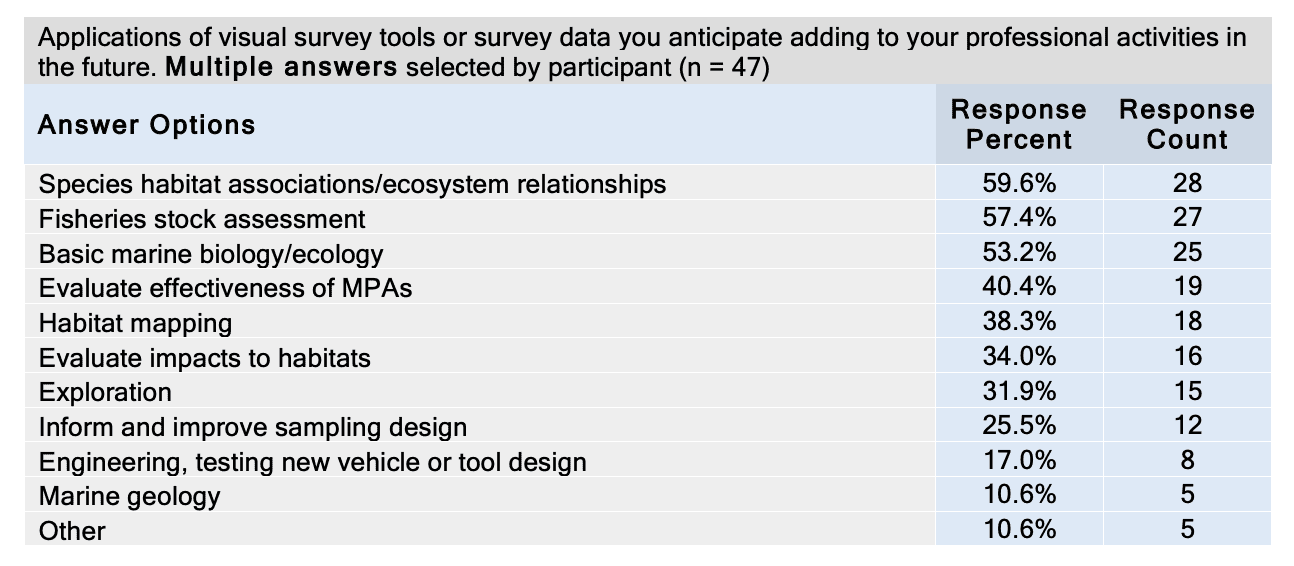
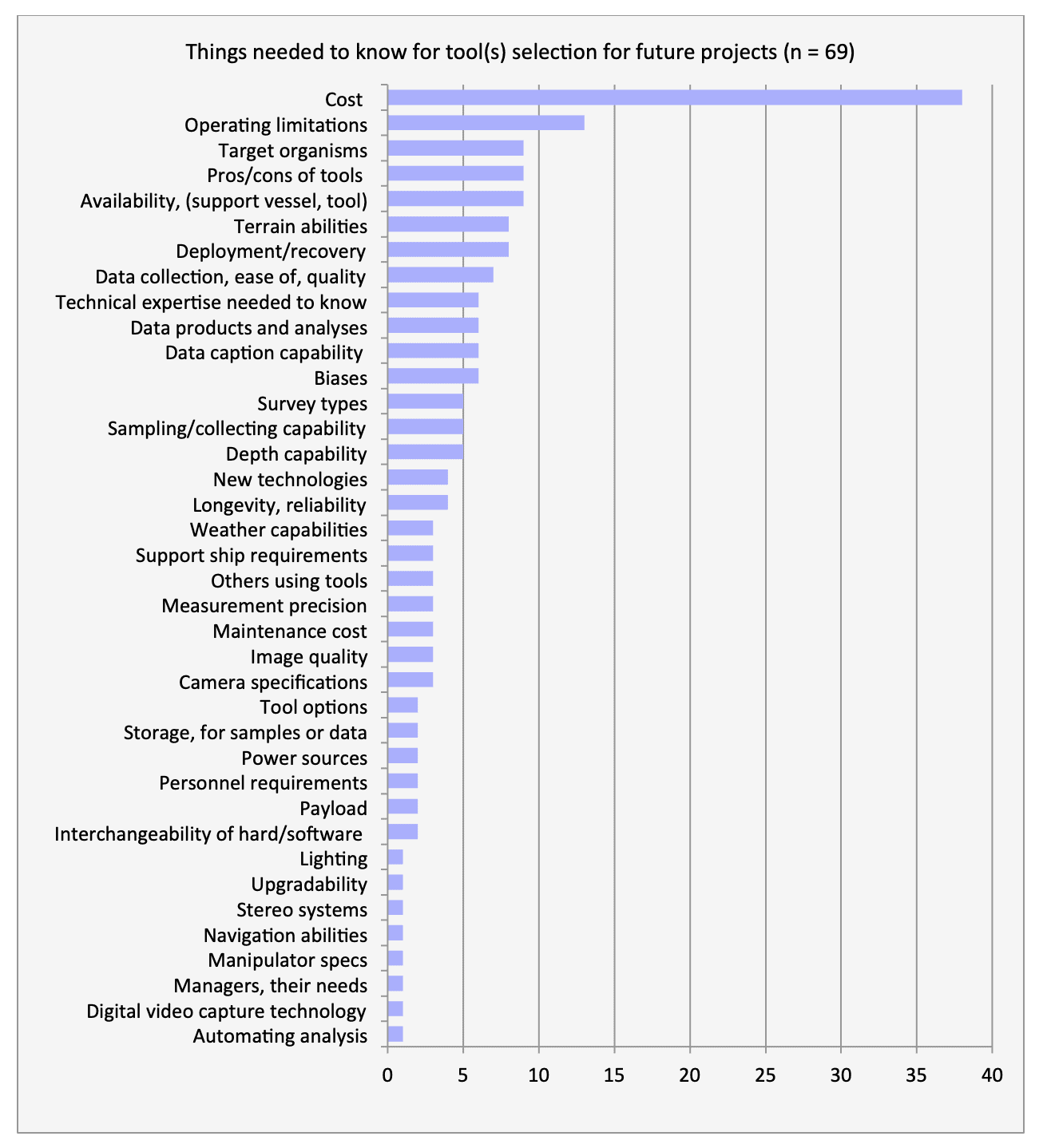
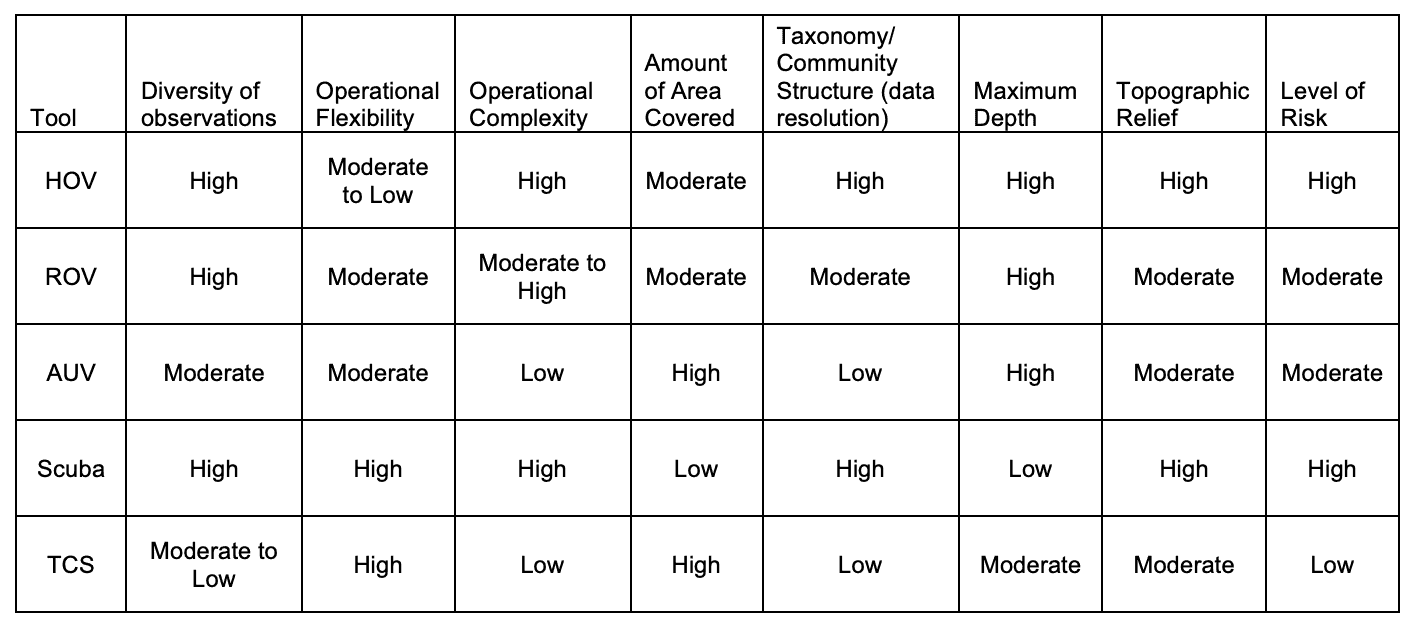
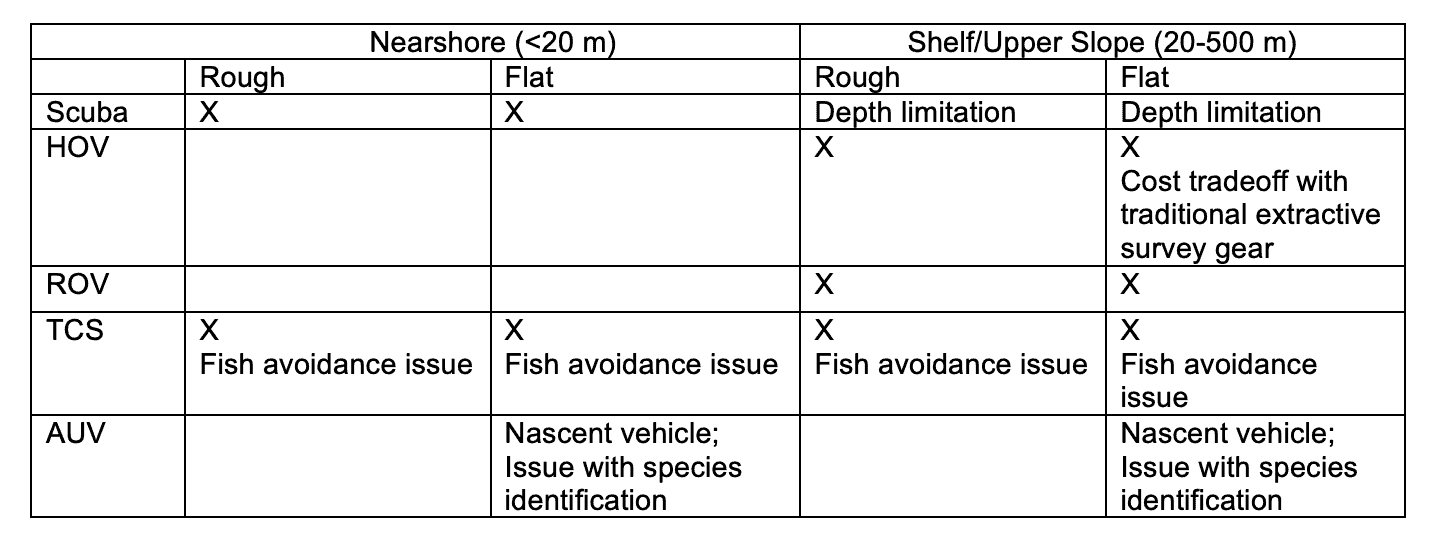


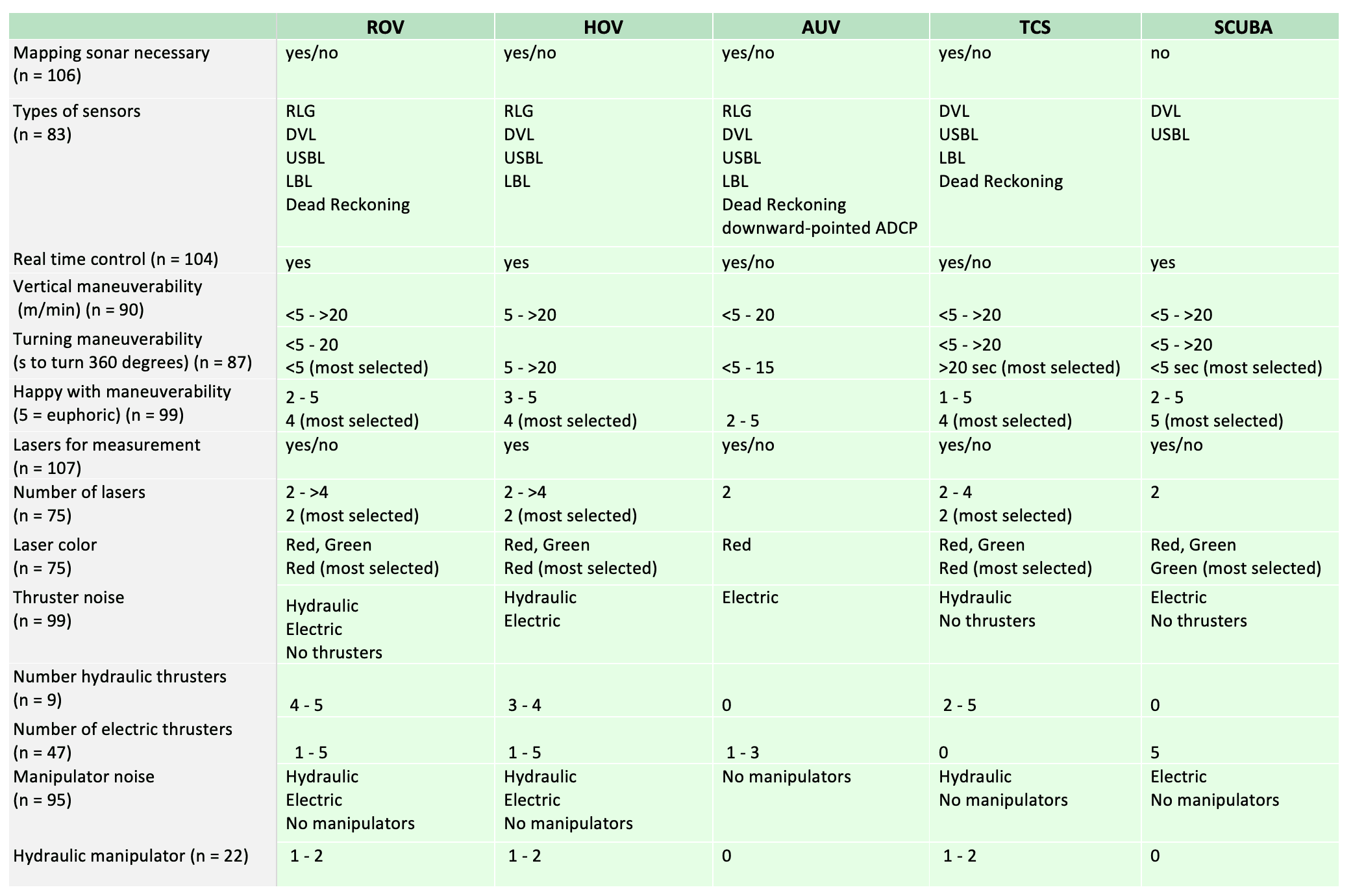
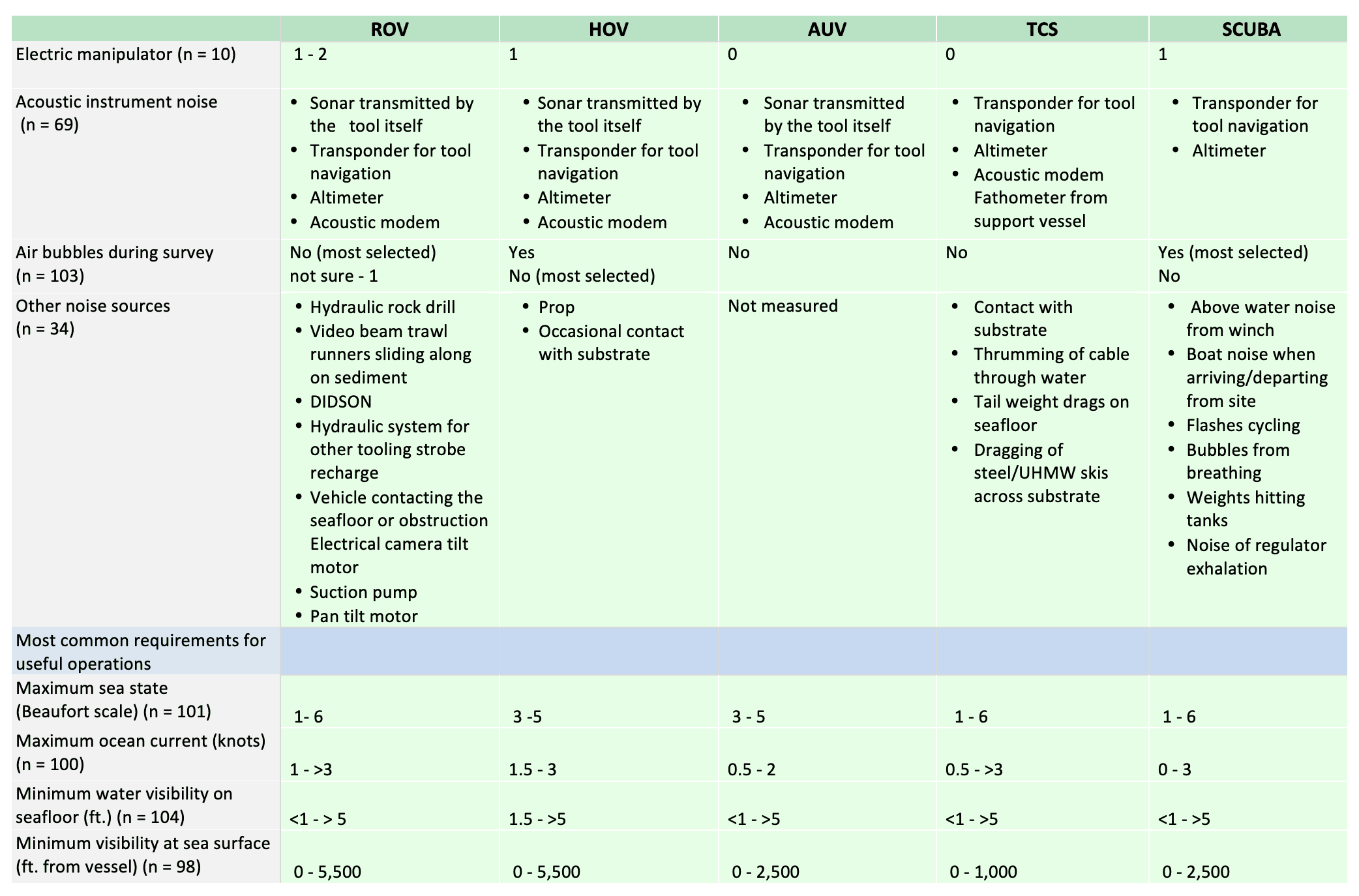
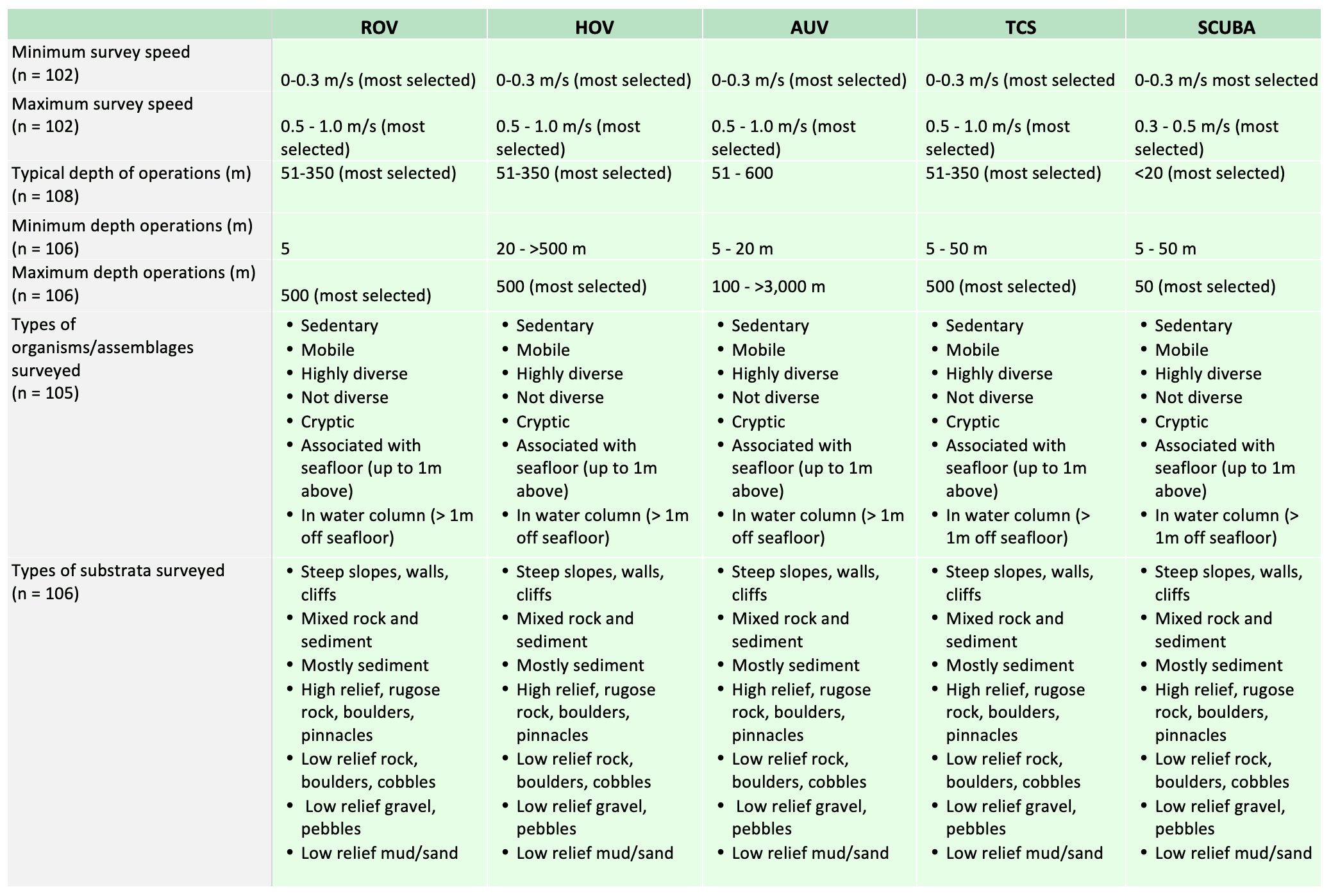
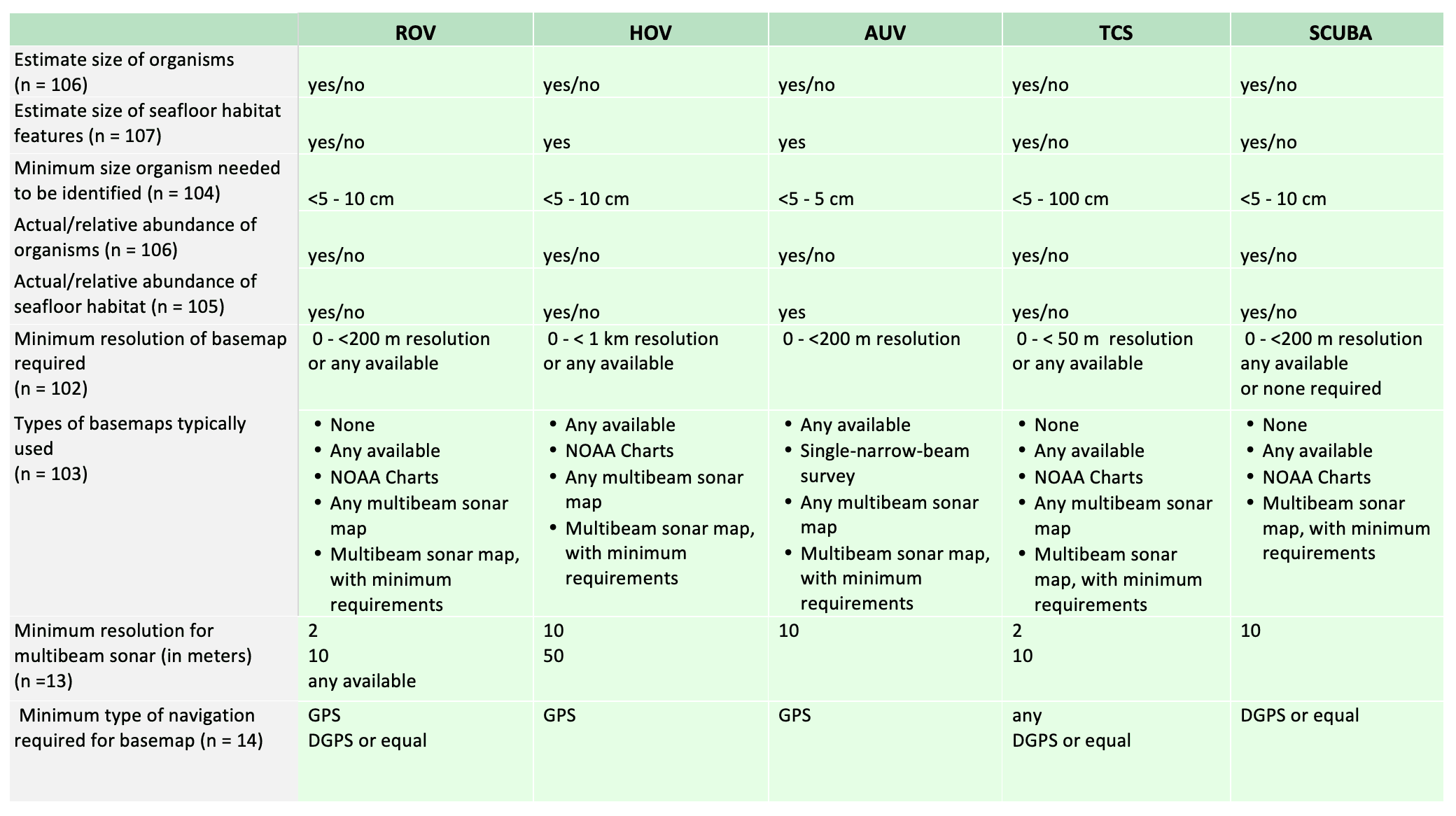
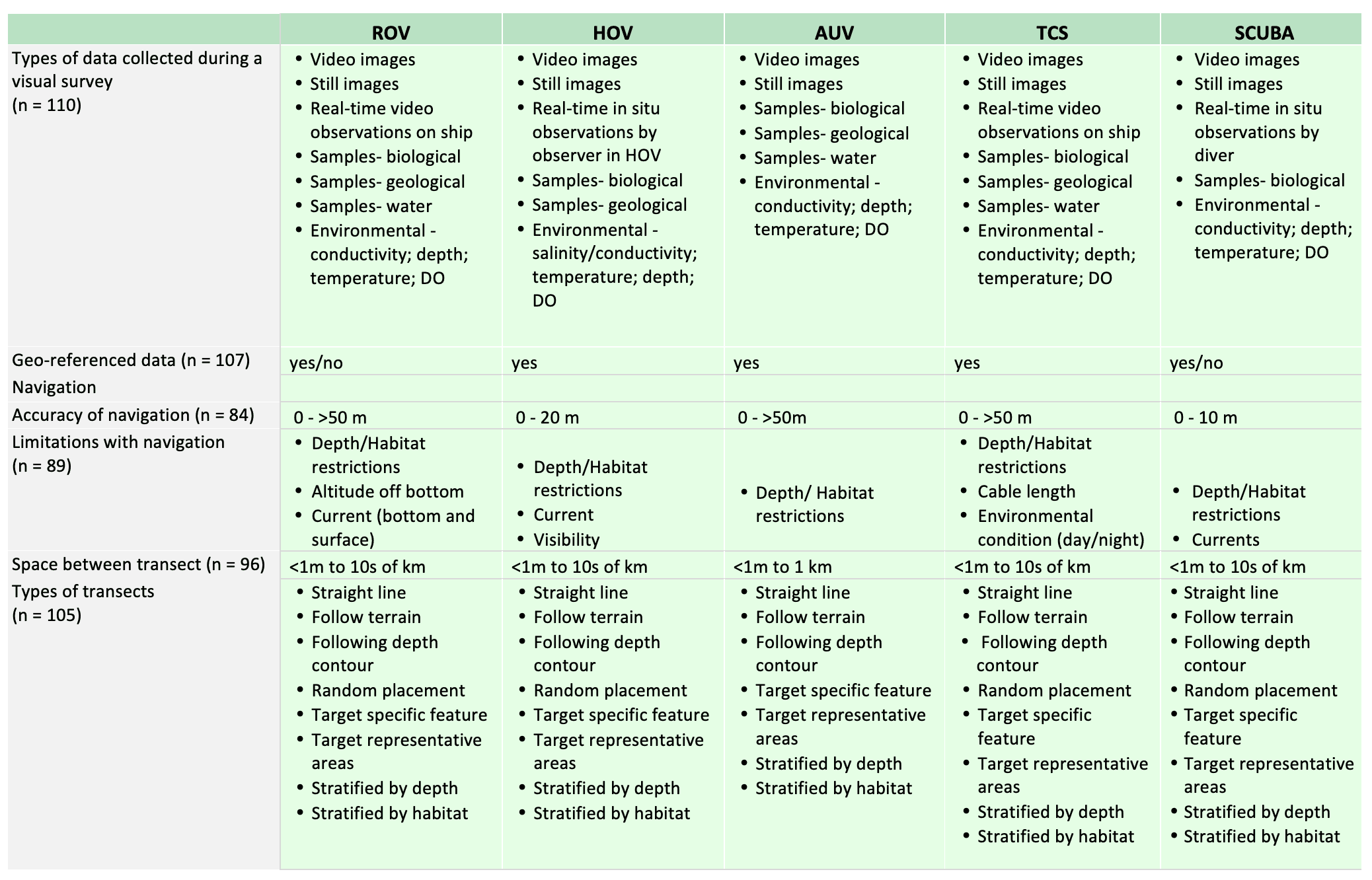


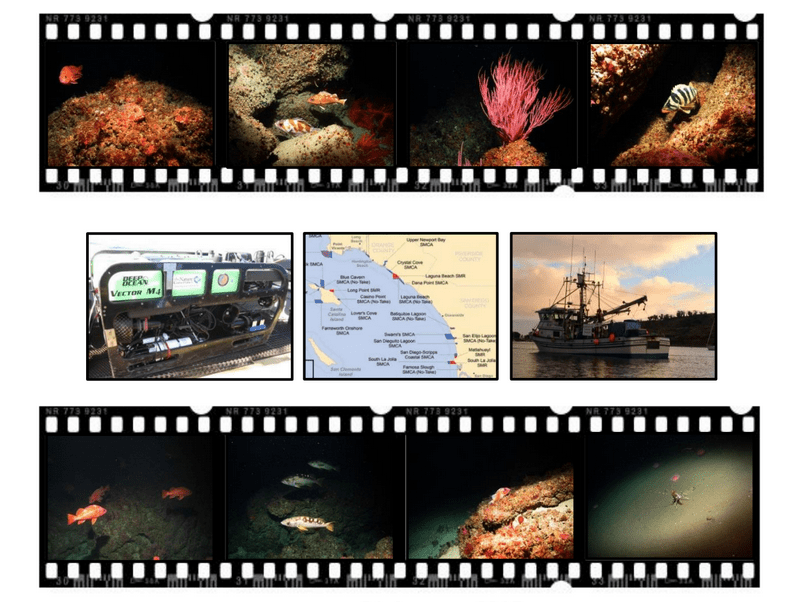
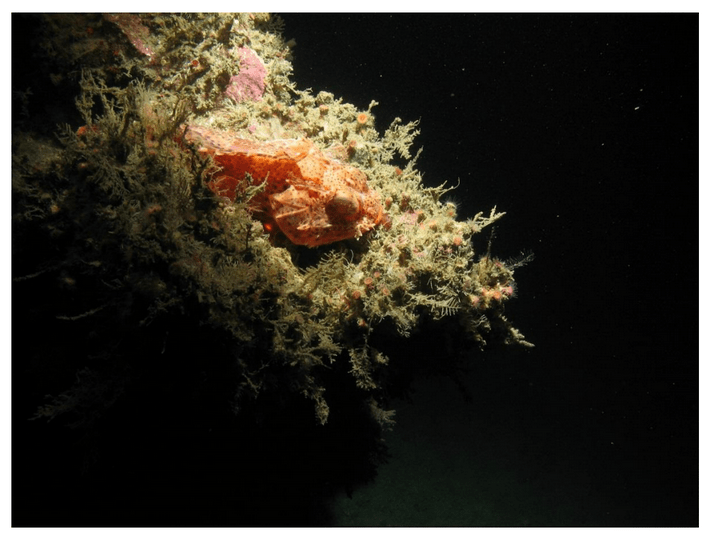
 This report summarizes the results of a multi-year study (September 2011 – January 2015) to characterize mid-depth rocky reef and soft bottom ecosystems in the California Marine Life Protection Act’s South Coast (SC) Study Region. Our specific objective was to characterize the seafloor habitats and associated biological communities within and adjacent to the State Marine Reserves (SMRs) and Conservation Areas (SMCAs) at the time of implementation.
This report summarizes the results of a multi-year study (September 2011 – January 2015) to characterize mid-depth rocky reef and soft bottom ecosystems in the California Marine Life Protection Act’s South Coast (SC) Study Region. Our specific objective was to characterize the seafloor habitats and associated biological communities within and adjacent to the State Marine Reserves (SMRs) and Conservation Areas (SMCAs) at the time of implementation.
 to rocky reefs, and the transitional areas in between. At the northernmost mainland site (Point Vicente), Halfbanded Rockfish were the most abundant of the 16,853 fish we observed. It is important to note that we were prevented from sampling the limited rocky reef areas along the mainland due to the significant entanglement hazards created by Giant Kelp (Macrocystis pyrifera) and lobster pots. In the south (La Jolla), which included both shelf sites as well as sites deep within the submarine canyons, Halfbanded Rockfish also dominated the 16,867 fish observed, despite very challenging sampling conditions. Indeed, to account for the great difficulties we encountered sampling the deep submarine canyons, we developed a new sampling protocol described below in the section on Analytical products derived from baseline data. Of the 15,837 fish observed at the Farnsworth Bank MPAs along the southwest coast of Catalina Island, where visibility was generally excellent, Blacksmith were the most numerous (n=3,458). We also observed thousands of invertebrates, both mobile and sessile, across the study area.
to rocky reefs, and the transitional areas in between. At the northernmost mainland site (Point Vicente), Halfbanded Rockfish were the most abundant of the 16,853 fish we observed. It is important to note that we were prevented from sampling the limited rocky reef areas along the mainland due to the significant entanglement hazards created by Giant Kelp (Macrocystis pyrifera) and lobster pots. In the south (La Jolla), which included both shelf sites as well as sites deep within the submarine canyons, Halfbanded Rockfish also dominated the 16,867 fish observed, despite very challenging sampling conditions. Indeed, to account for the great difficulties we encountered sampling the deep submarine canyons, we developed a new sampling protocol described below in the section on Analytical products derived from baseline data. Of the 15,837 fish observed at the Farnsworth Bank MPAs along the southwest coast of Catalina Island, where visibility was generally excellent, Blacksmith were the most numerous (n=3,458). We also observed thousands of invertebrates, both mobile and sessile, across the study area.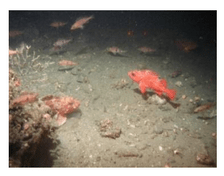 Insofar as this project was dedicated to a baseline characterization in support of future monitoring efforts, we targeted as many fishes (ranging from species to morphological groups) listed in the South Coast Monitoring Plan as could be sampled effectively with an ROV. We sampled a total of 13 (76.5%) of the fishes and fish groupings (e.g. “Rockfishes”) included in the monitoring plan, under ecosystems surveyed by the ROV (Table 1). Further, we sampled a total of 71% of invertebrate species and groups described in the monitoring plan (Table 2). Suggestions for Future Monitoring – Anticipating the challenge of sustaining a long-term monitoring effort well beyond the baseline provided here, we propose the following list of species/taxonomic groups for inclusion in a video-based monitoring program. These species, including both fishes and invertebrates, are a) observed in numbers that are appropriate for a variety of statistical analyses and b) are capable of being identified with a high level of confidence from imagery alone.
Insofar as this project was dedicated to a baseline characterization in support of future monitoring efforts, we targeted as many fishes (ranging from species to morphological groups) listed in the South Coast Monitoring Plan as could be sampled effectively with an ROV. We sampled a total of 13 (76.5%) of the fishes and fish groupings (e.g. “Rockfishes”) included in the monitoring plan, under ecosystems surveyed by the ROV (Table 1). Further, we sampled a total of 71% of invertebrate species and groups described in the monitoring plan (Table 2). Suggestions for Future Monitoring – Anticipating the challenge of sustaining a long-term monitoring effort well beyond the baseline provided here, we propose the following list of species/taxonomic groups for inclusion in a video-based monitoring program. These species, including both fishes and invertebrates, are a) observed in numbers that are appropriate for a variety of statistical analyses and b) are capable of being identified with a high level of confidence from imagery alone.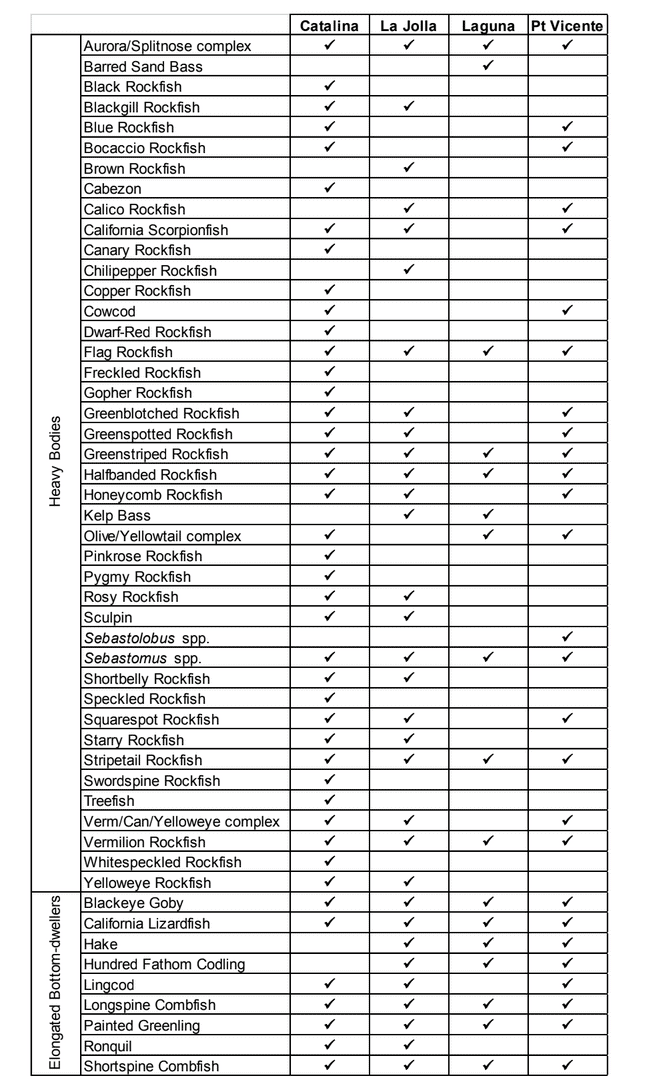
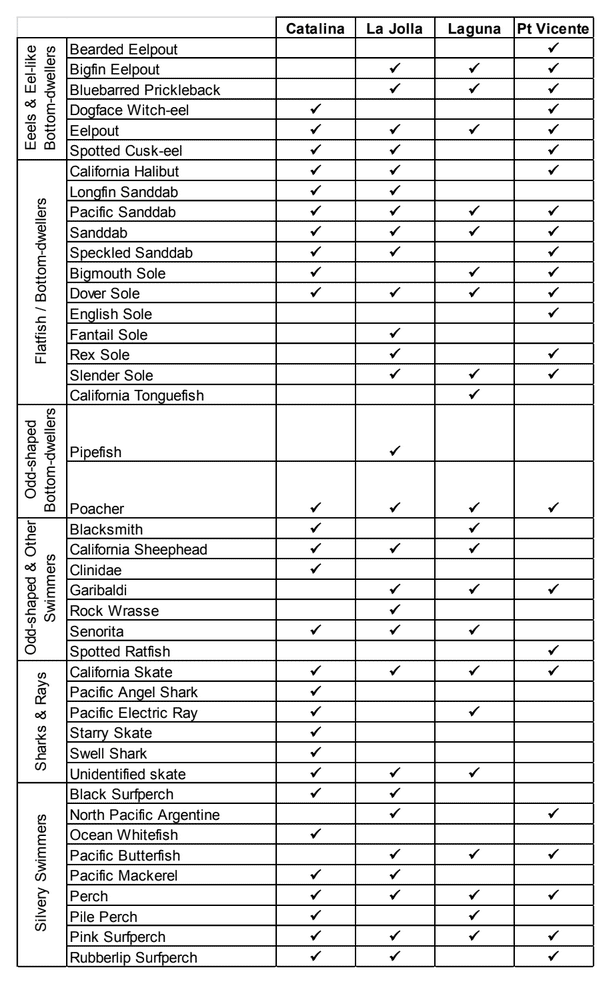
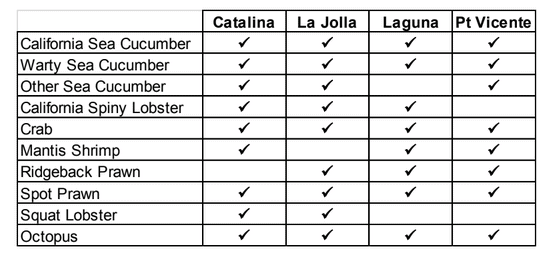
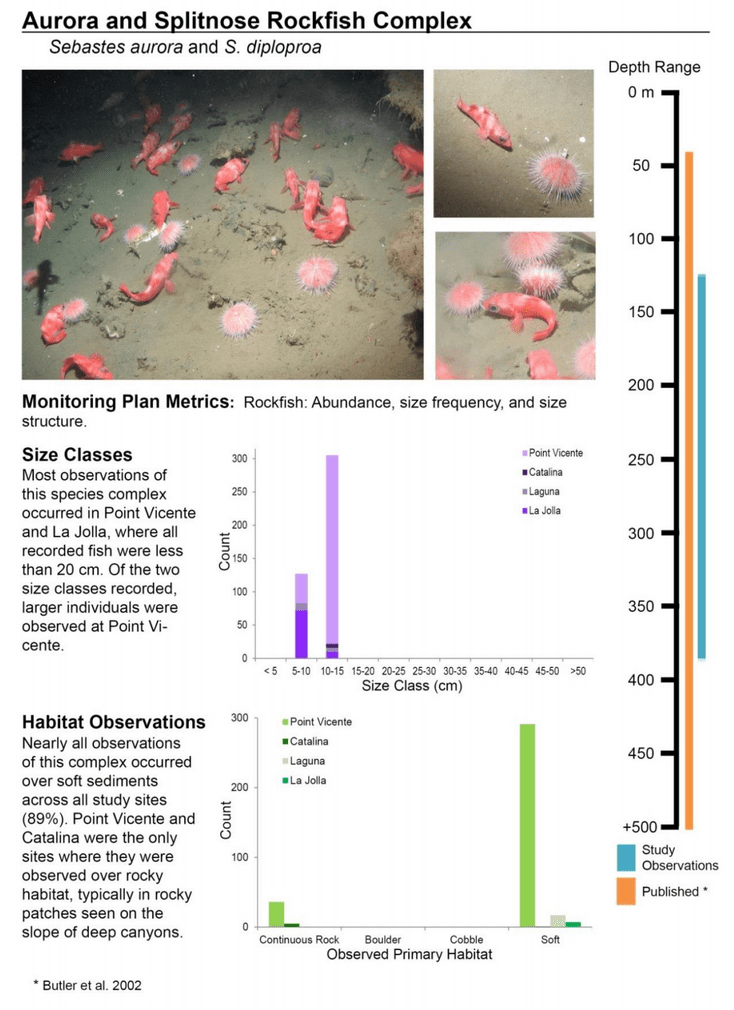
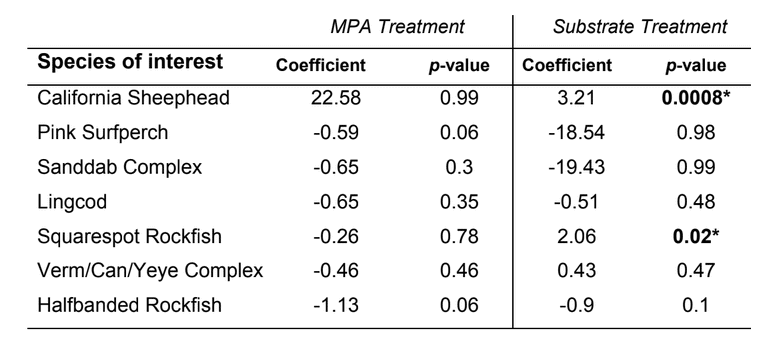
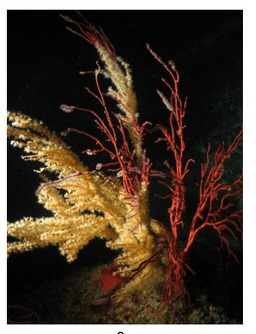 estimated 29% (1840 km2) of state waters in southern California, yet they are sampled with far less frequency when compared to shallower waters due to the many challenges associated with sampling in deep water.
estimated 29% (1840 km2) of state waters in southern California, yet they are sampled with far less frequency when compared to shallower waters due to the many challenges associated with sampling in deep water.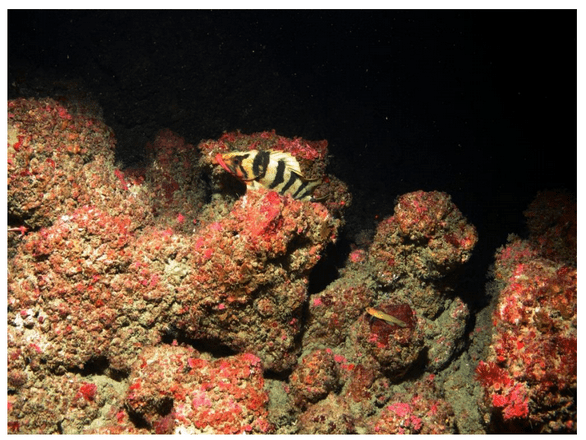
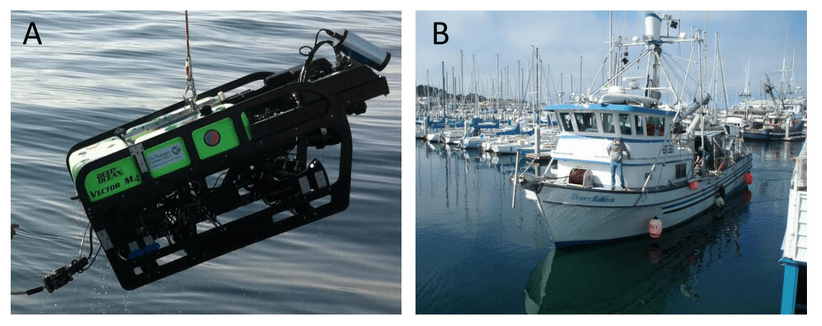
 video, forward-looking high-definition video, down-looking standard-definition video, digital still (forward or down positional), and rear facing video), two quartz halogen and HMI lights, paired forward- and down-looking sizing lasers (spaced at 10 cm), and a strobe for still photos. The ROV was also equipped with an altimeter, forward-facing multibeam sonar, CTD, and dissolved oxygen meter. The position of the ROV on the seafloor was maintained by the Trackpoint III® acoustic positioning system with the resulting coordinates logged into Hypack® navigational software. The ROV was ‘flown’ over
video, forward-looking high-definition video, down-looking standard-definition video, digital still (forward or down positional), and rear facing video), two quartz halogen and HMI lights, paired forward- and down-looking sizing lasers (spaced at 10 cm), and a strobe for still photos. The ROV was also equipped with an altimeter, forward-facing multibeam sonar, CTD, and dissolved oxygen meter. The position of the ROV on the seafloor was maintained by the Trackpoint III® acoustic positioning system with the resulting coordinates logged into Hypack® navigational software. The ROV was ‘flown’ over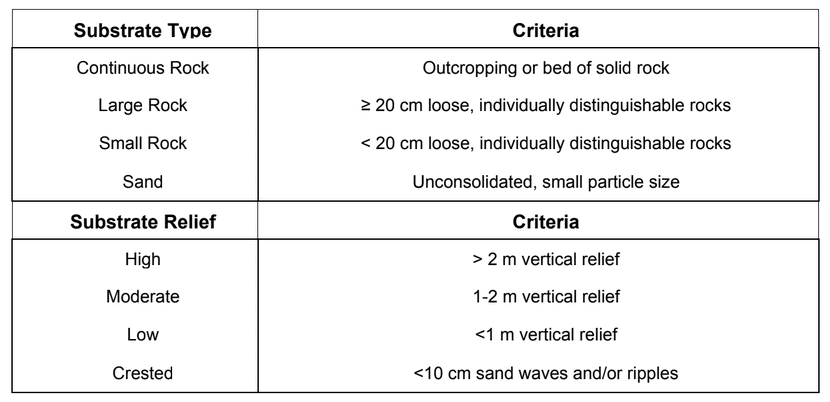
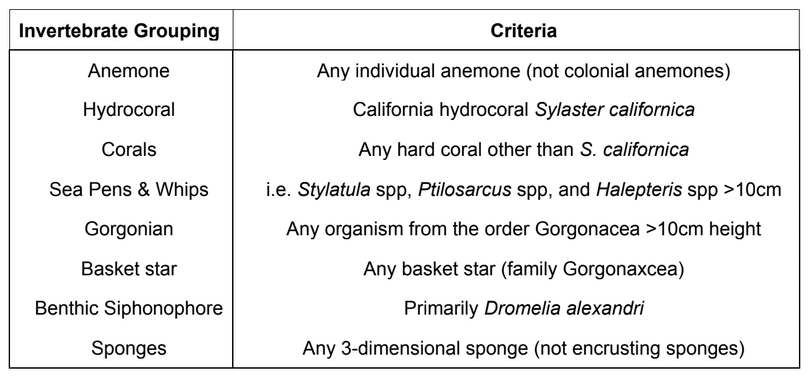
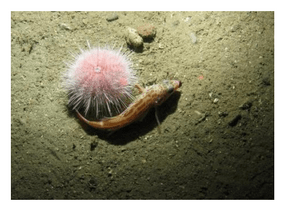 research project, we sought to let the data drive the scale of the analyses rather than constraining the analyses to our a prior understanding of a particular species’ distribution. For on-going analyses of project data (summarized in a separate section below), sub-sampling of transect data occurred post hoc for selected species or taxonomic groups based on their distribution and considering the extent to which spatial autocorrelation influenced the data (Hallenbeck et al. 2012). Consequently,
research project, we sought to let the data drive the scale of the analyses rather than constraining the analyses to our a prior understanding of a particular species’ distribution. For on-going analyses of project data (summarized in a separate section below), sub-sampling of transect data occurred post hoc for selected species or taxonomic groups based on their distribution and considering the extent to which spatial autocorrelation influenced the data (Hallenbeck et al. 2012). Consequently,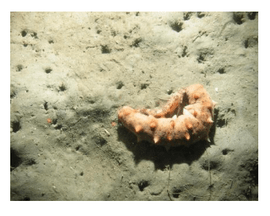 sessile invertebrate
sessile invertebrate future changes could be compared. As such, our sampling with the ROV at each location 2011 and 2012 was not intended to flesh out any differences between the two sampling periods. Further, given that our sampling was conducted essentially at the moment of designation for the MPAs, we were not focused on any “MPA effects” either. However, as questions inevitably arise about differences between sampling years, and between
future changes could be compared. As such, our sampling with the ROV at each location 2011 and 2012 was not intended to flesh out any differences between the two sampling periods. Further, given that our sampling was conducted essentially at the moment of designation for the MPAs, we were not focused on any “MPA effects” either. However, as questions inevitably arise about differences between sampling years, and between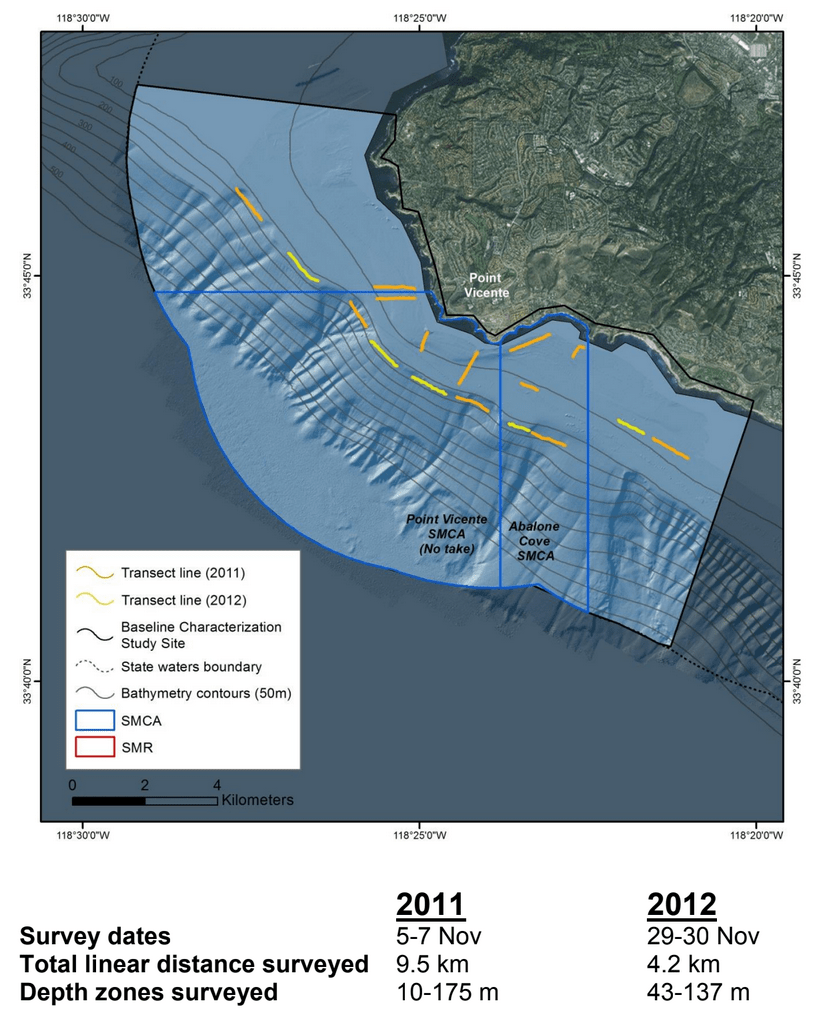



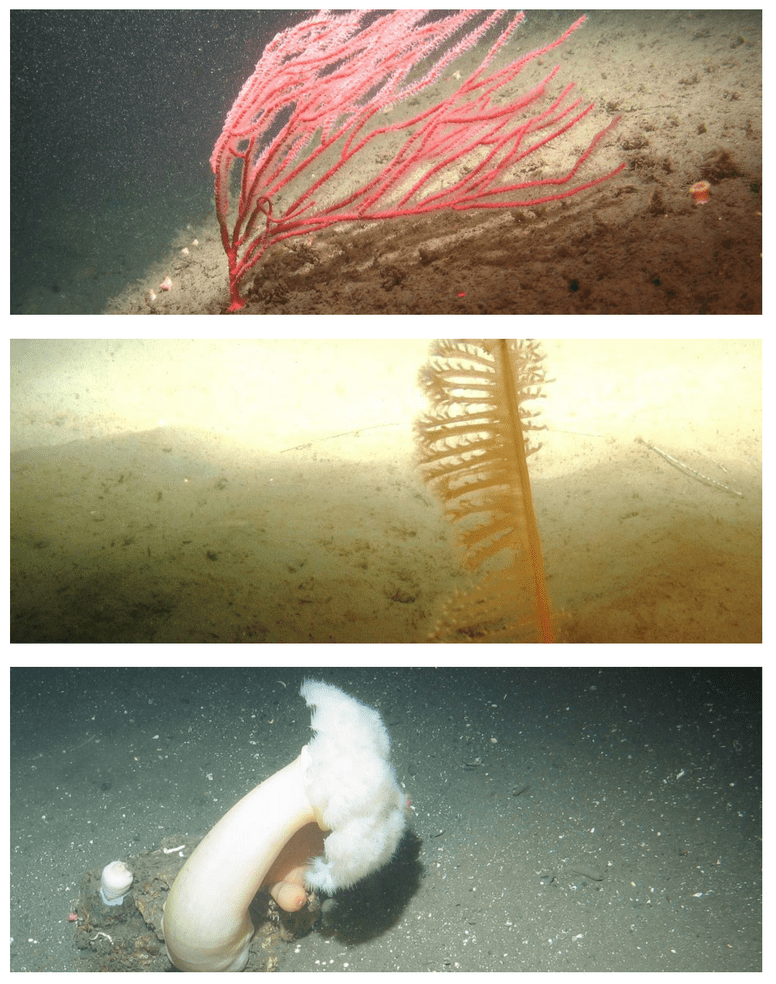

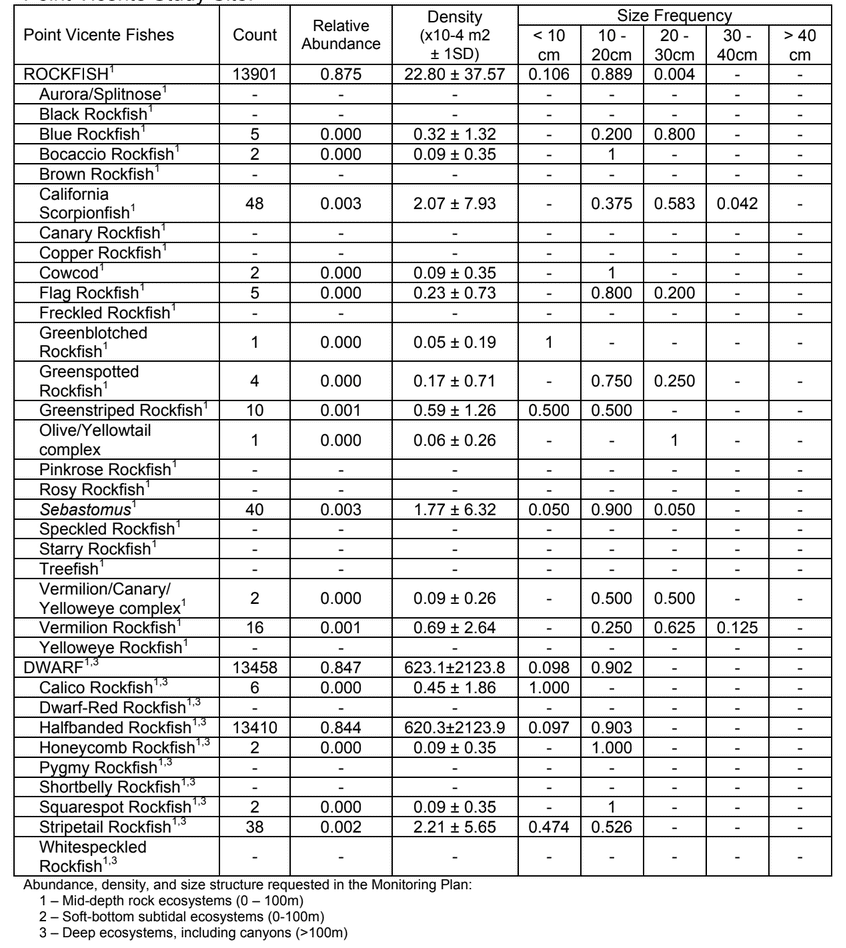
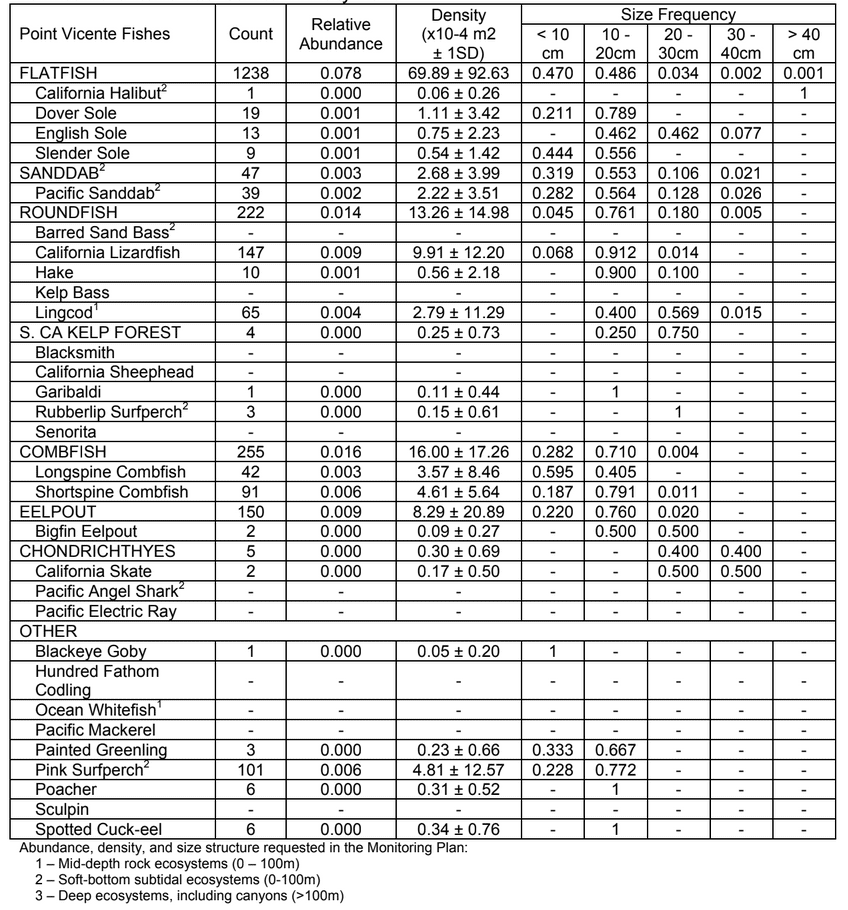
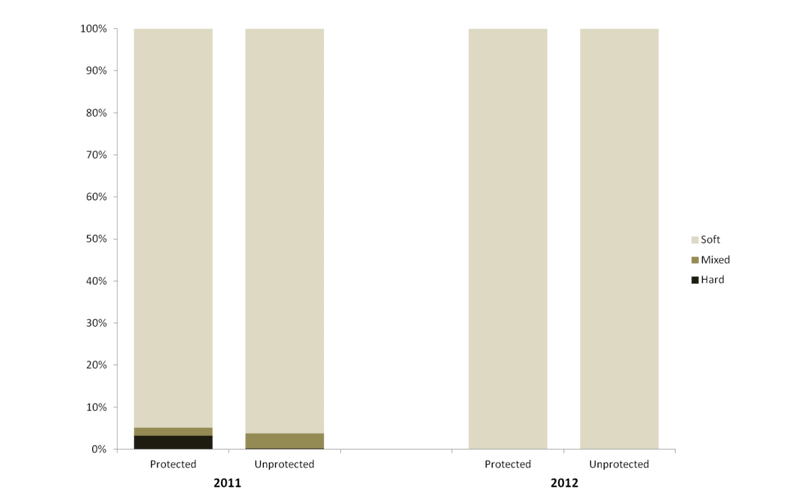
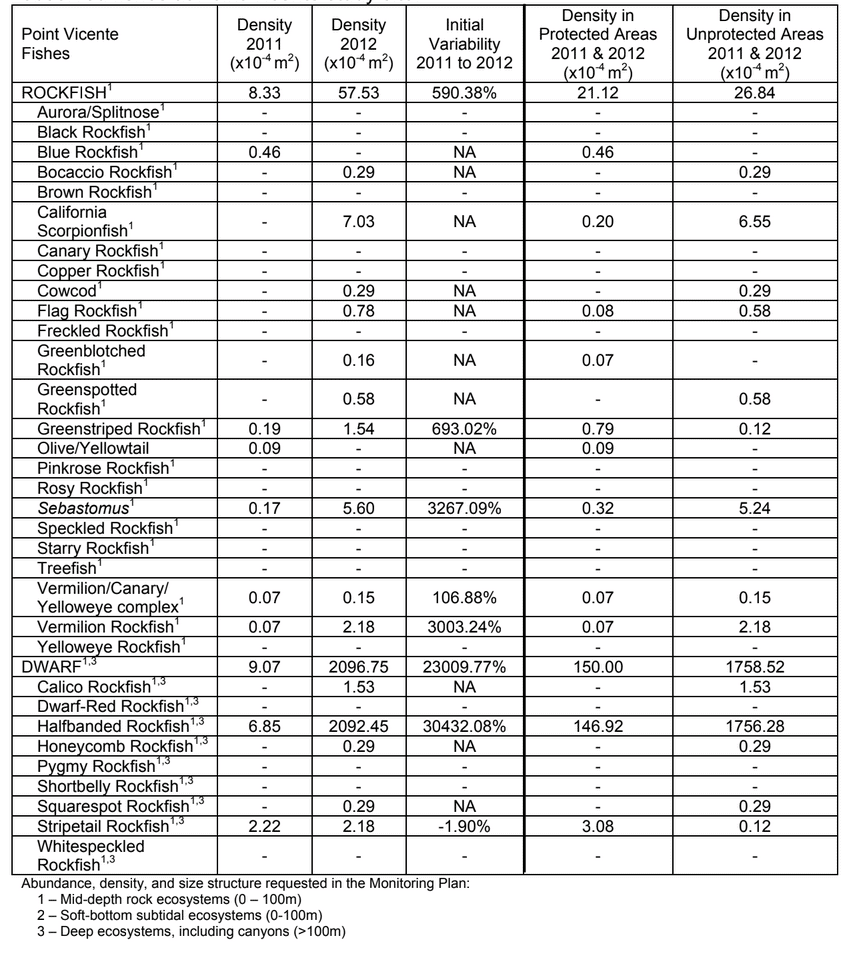
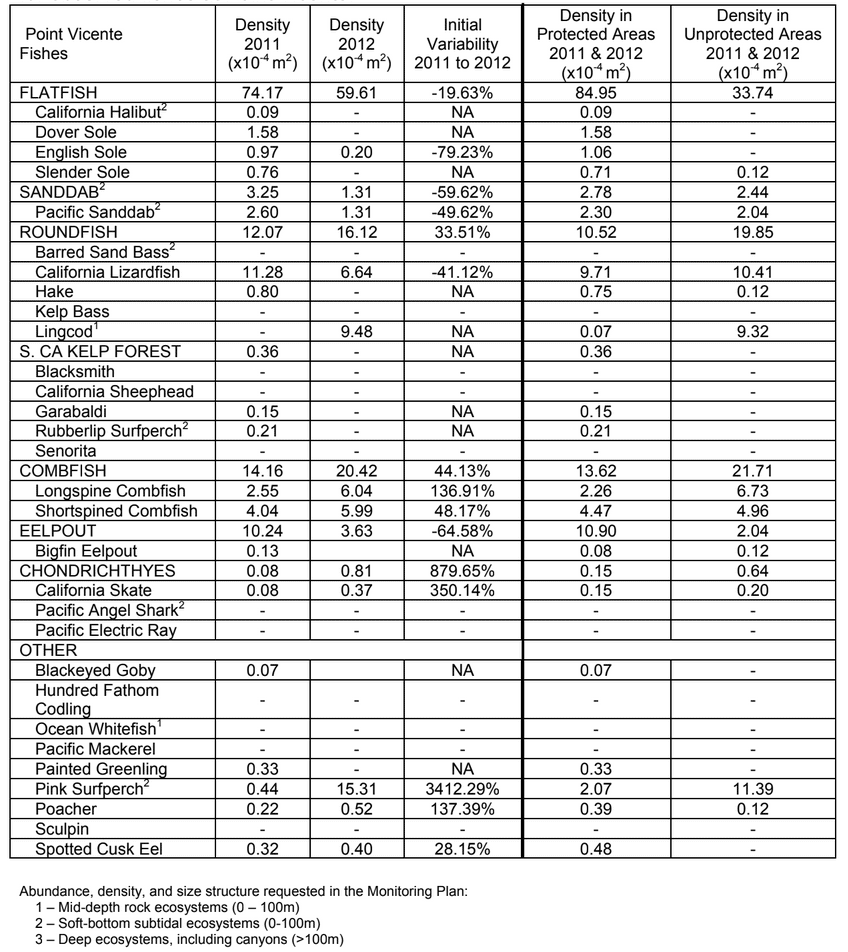
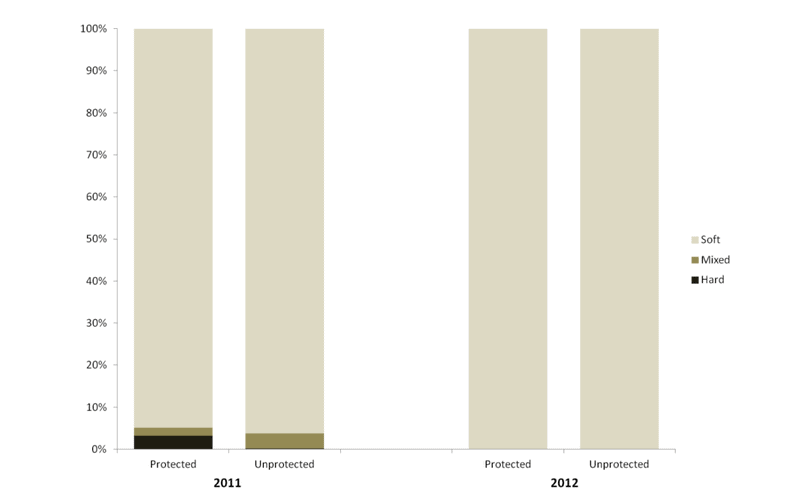

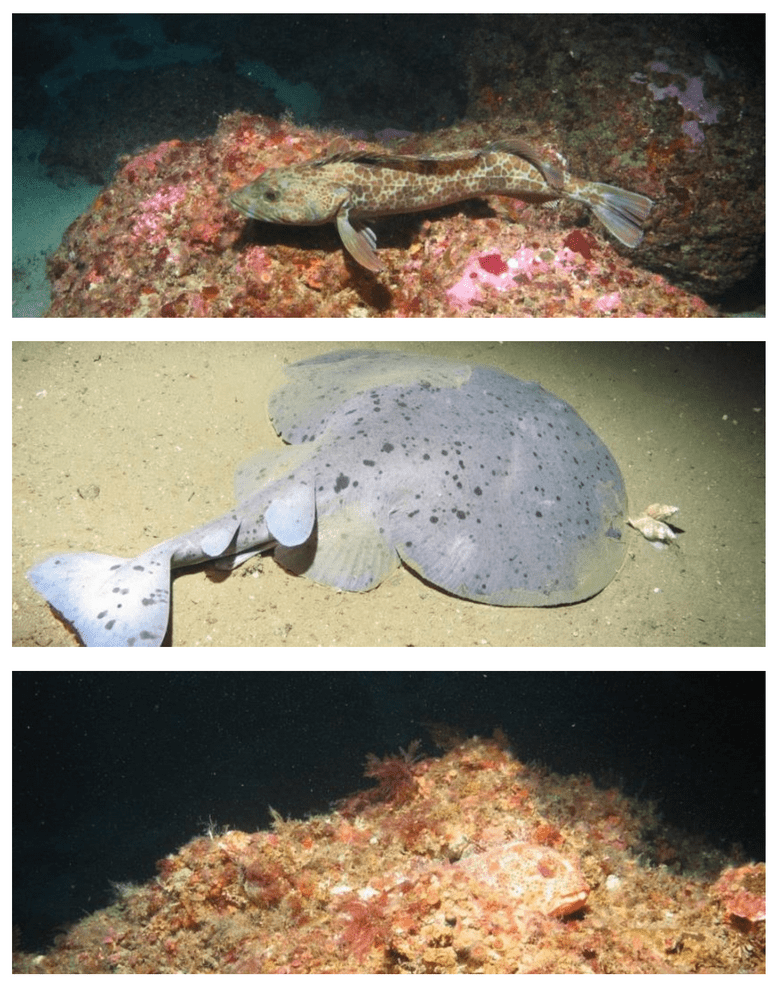
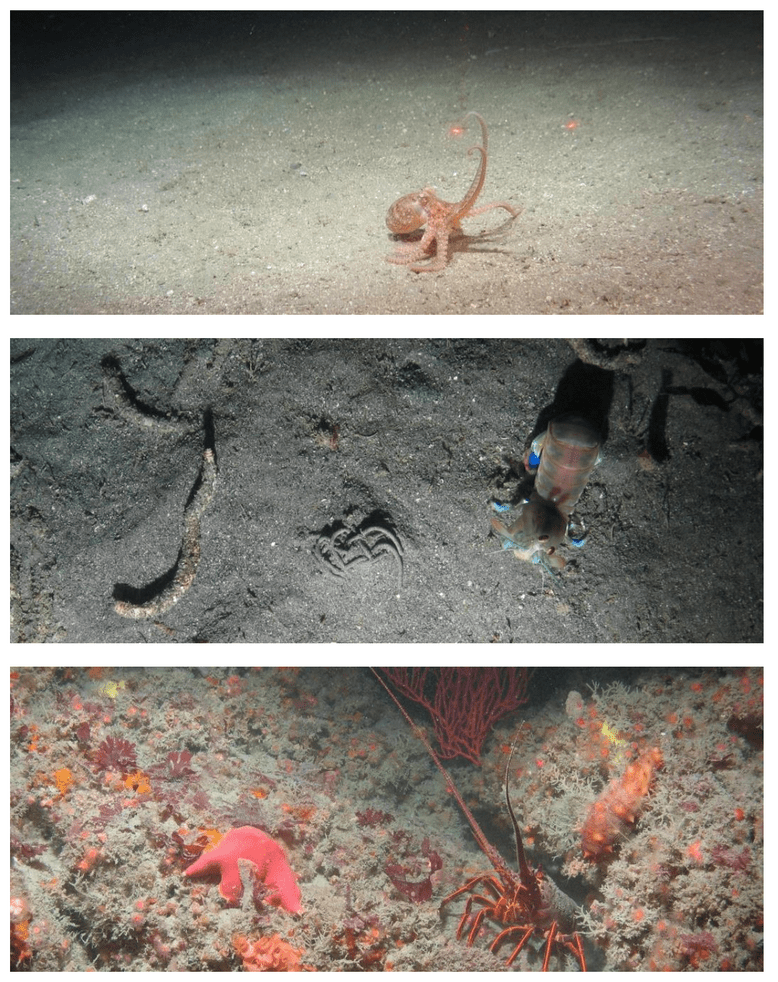



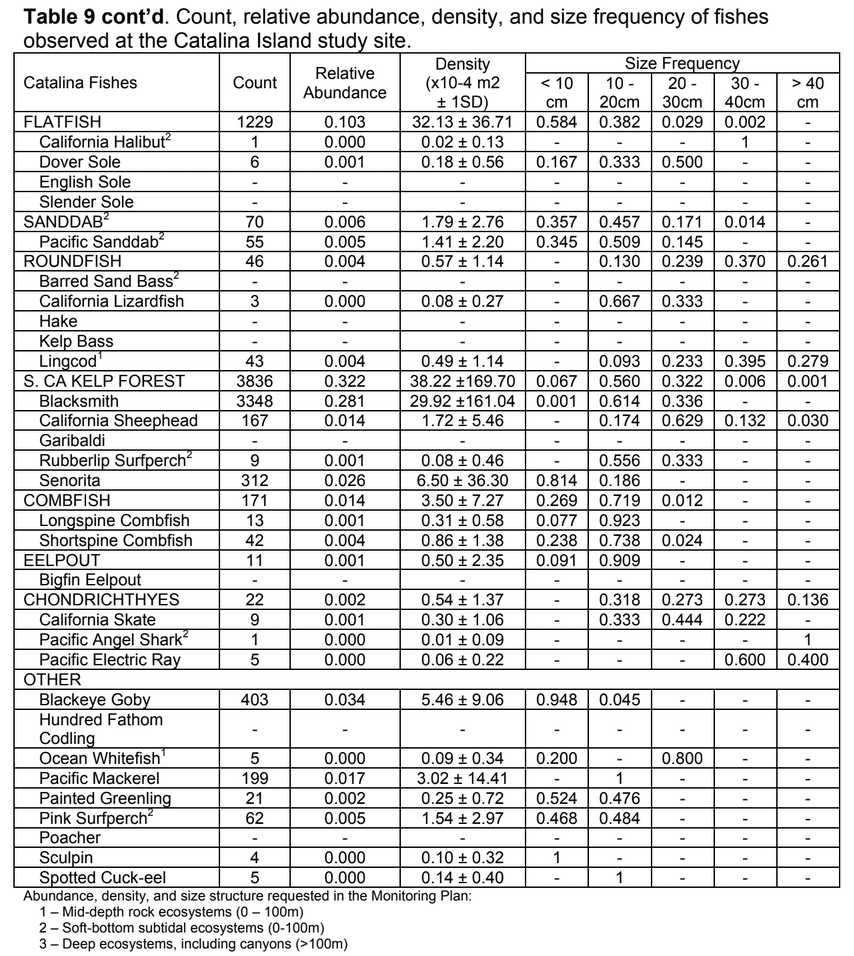




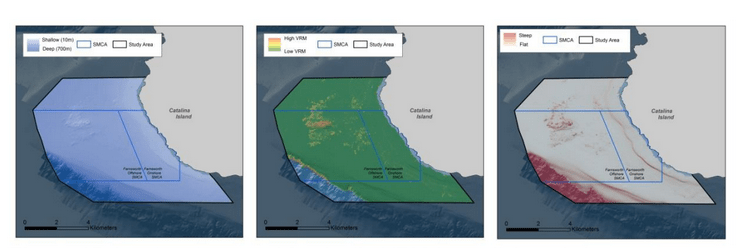
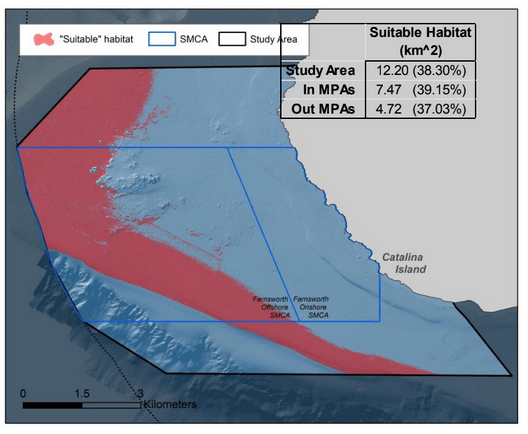
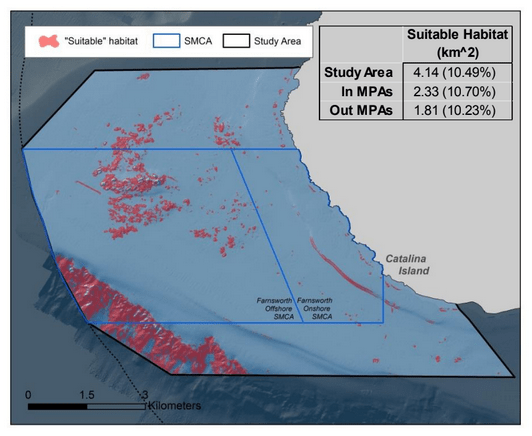
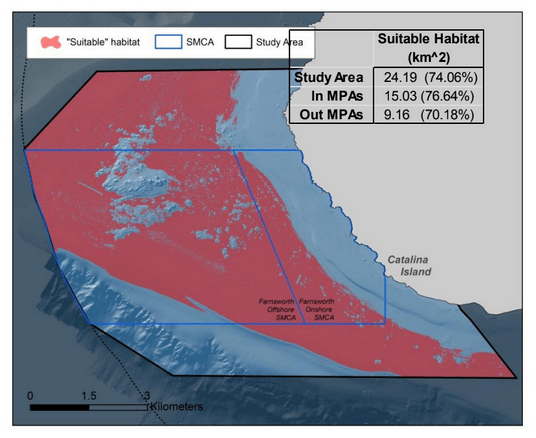
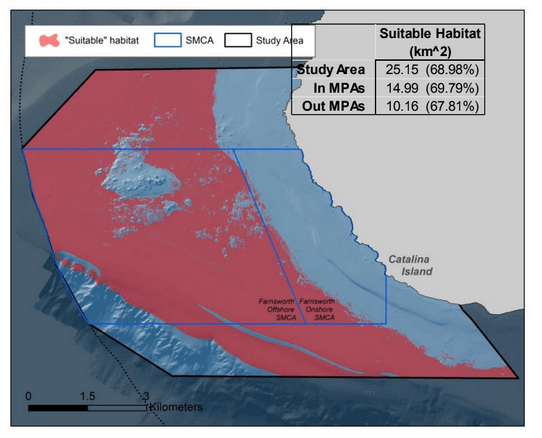
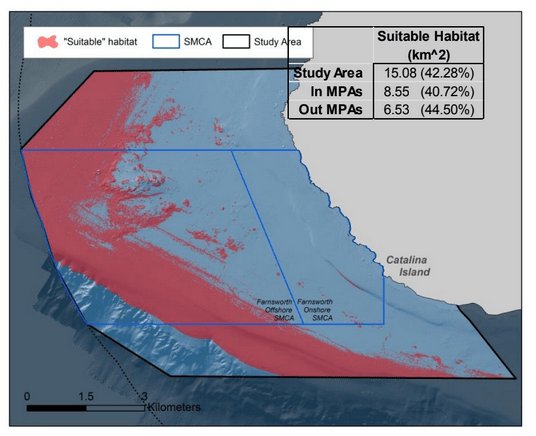

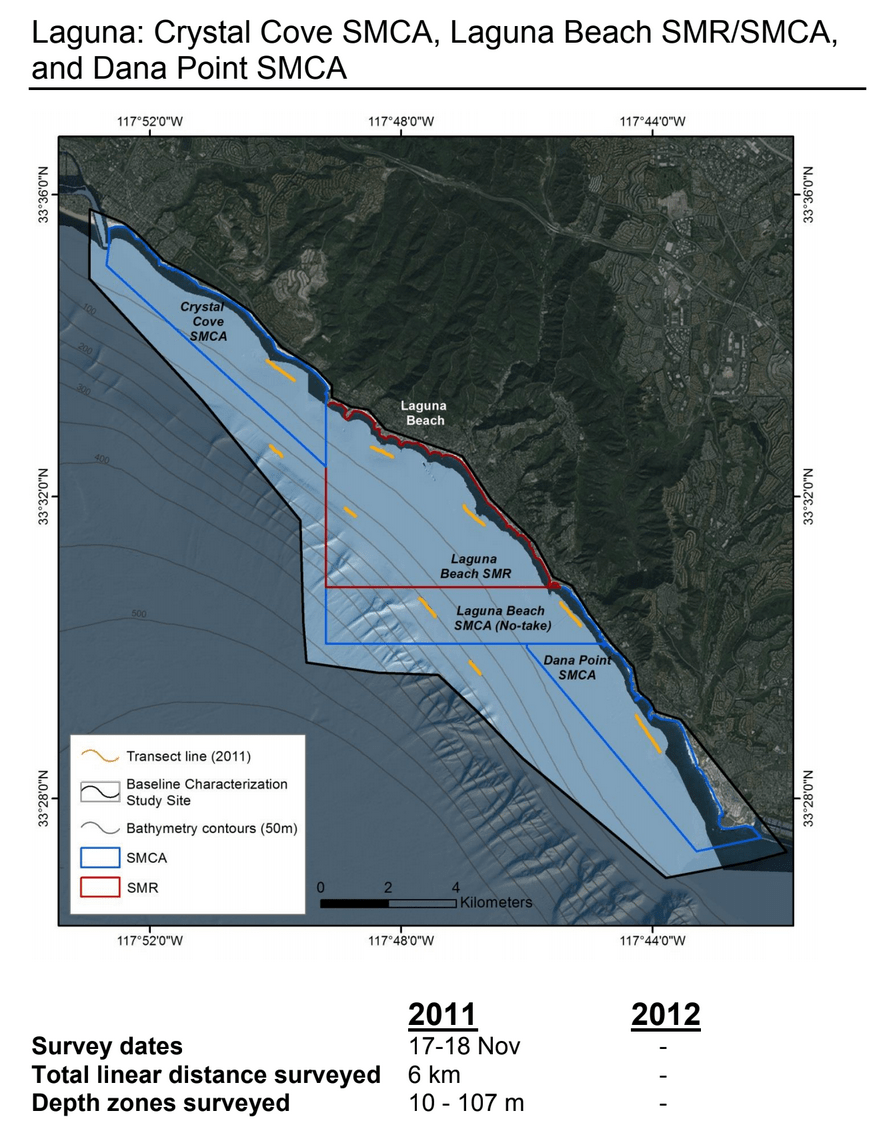
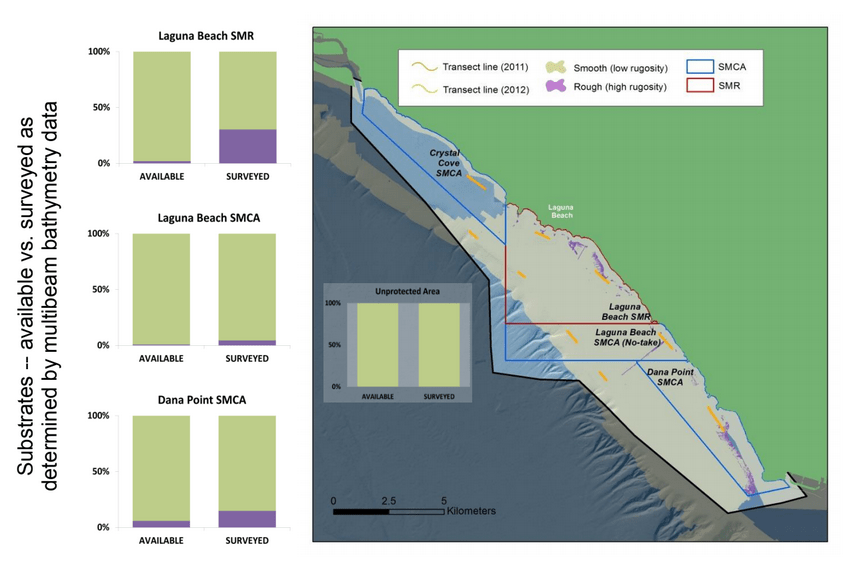
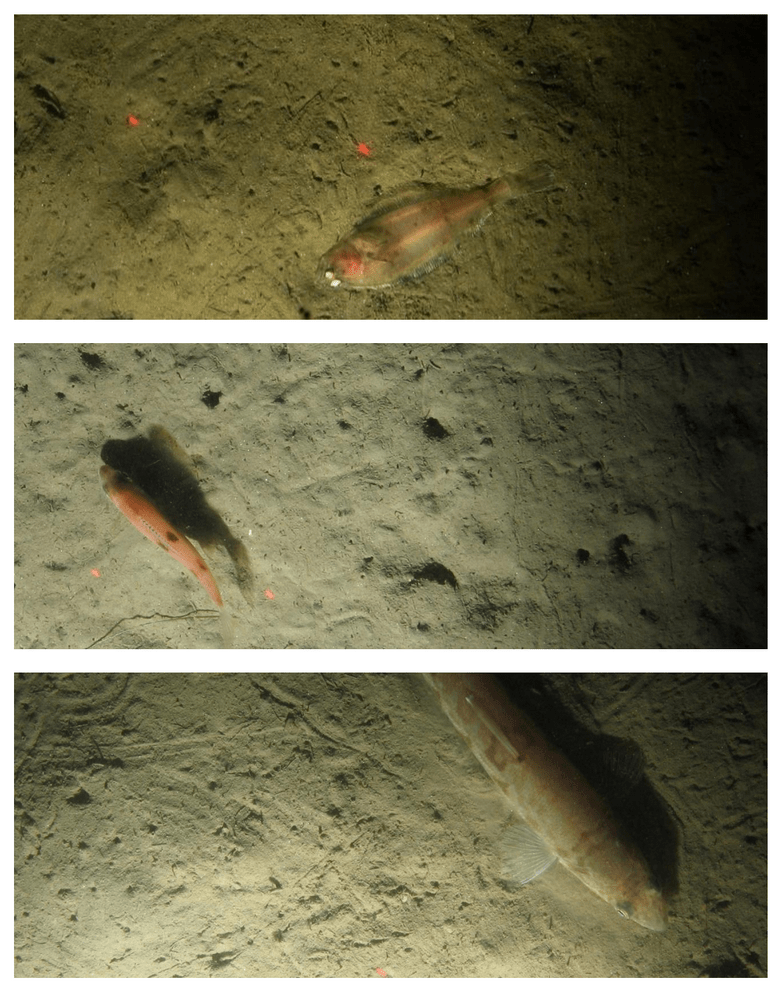

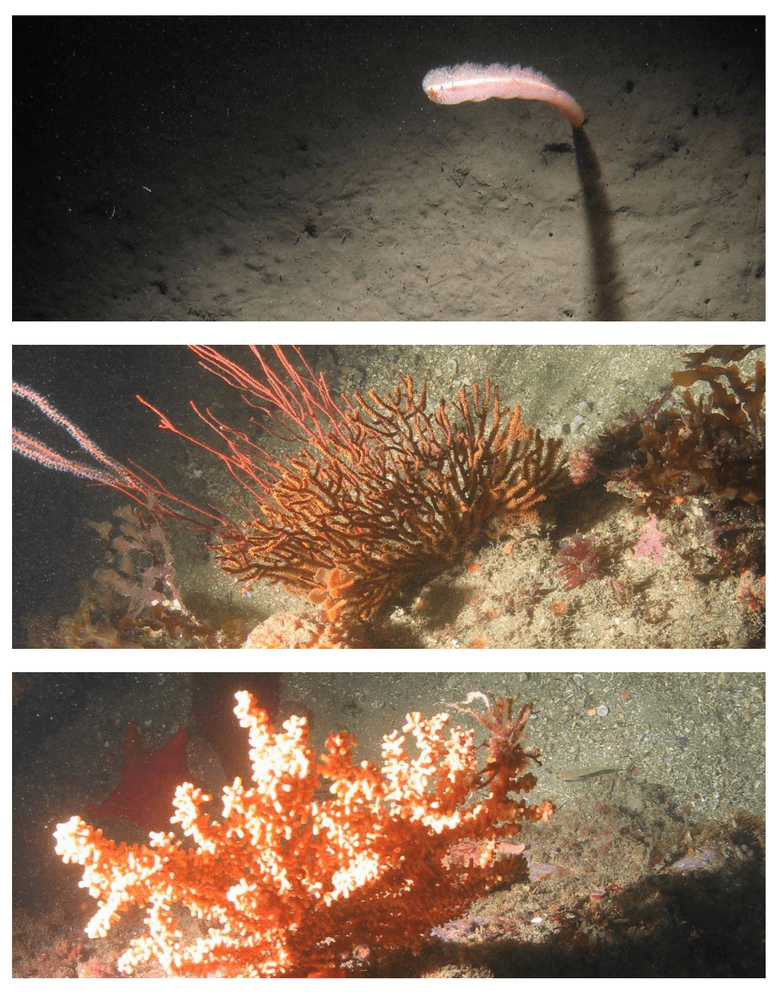
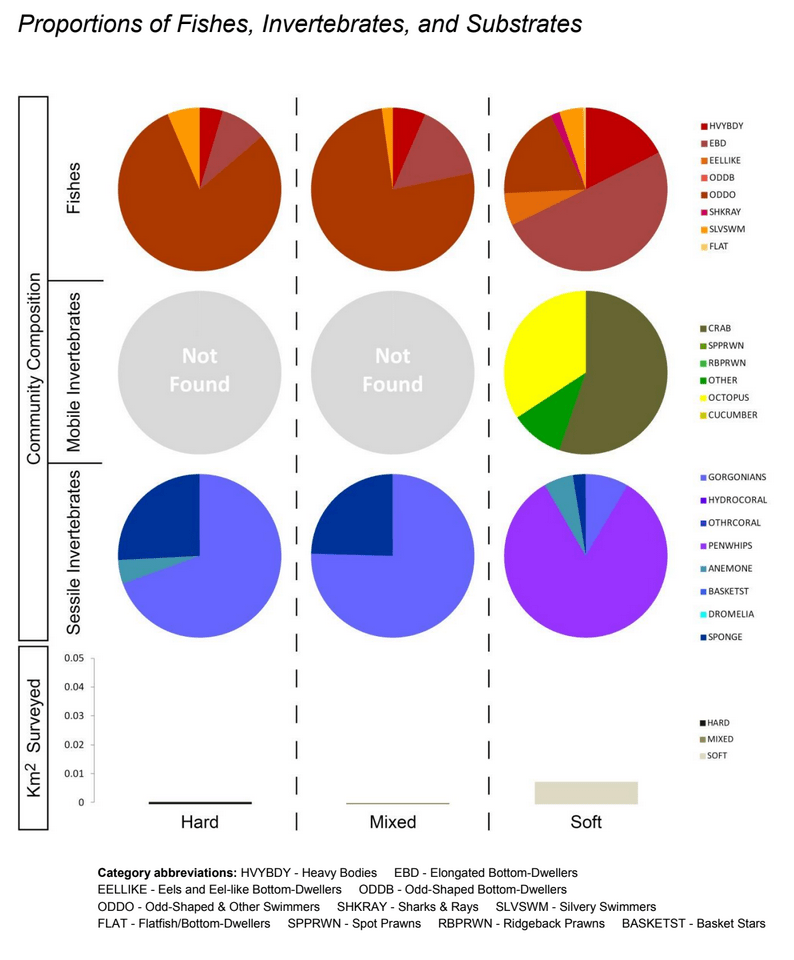

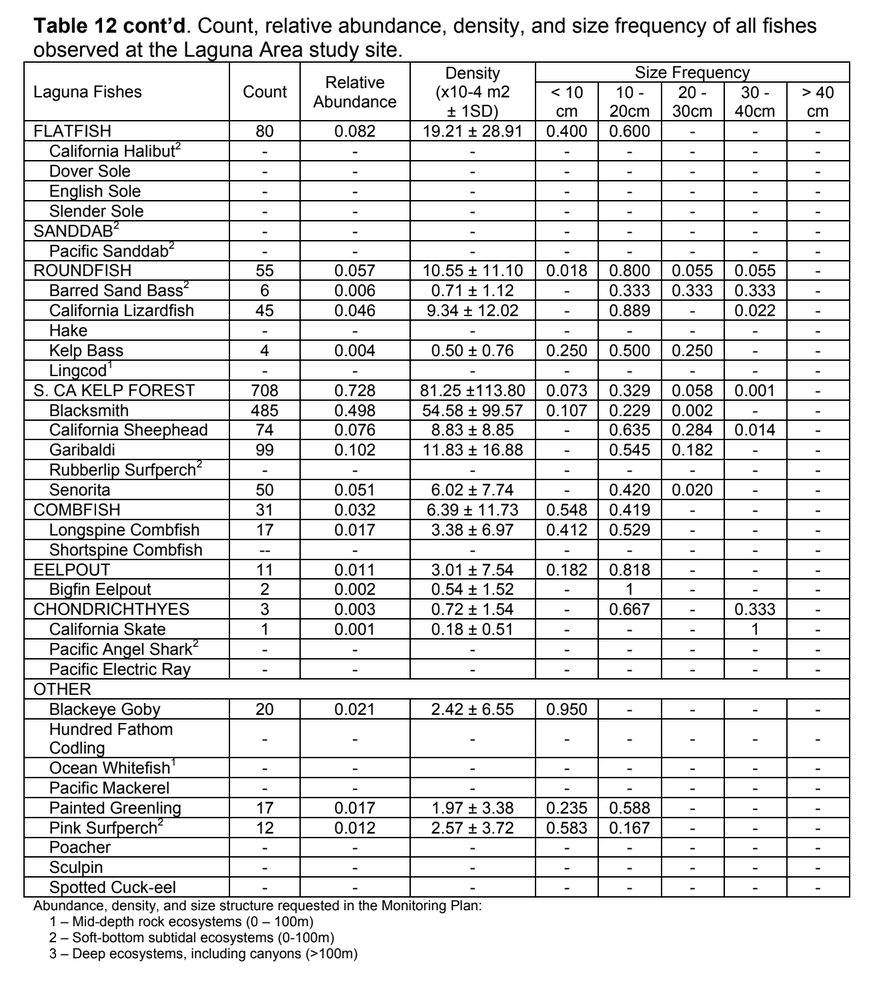
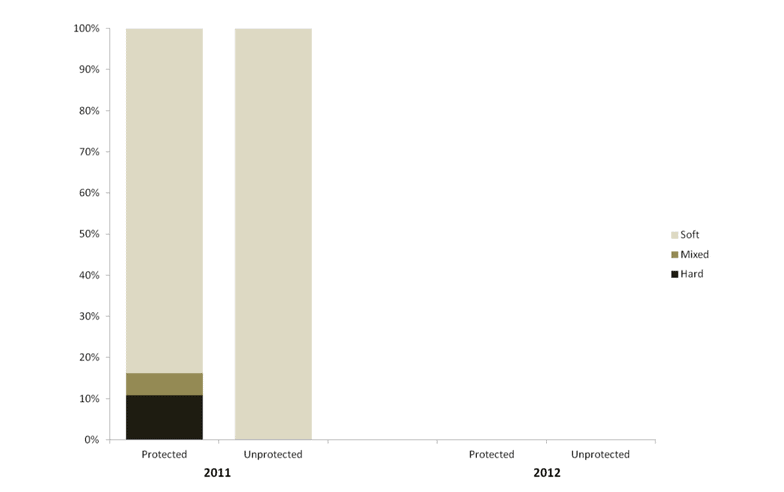

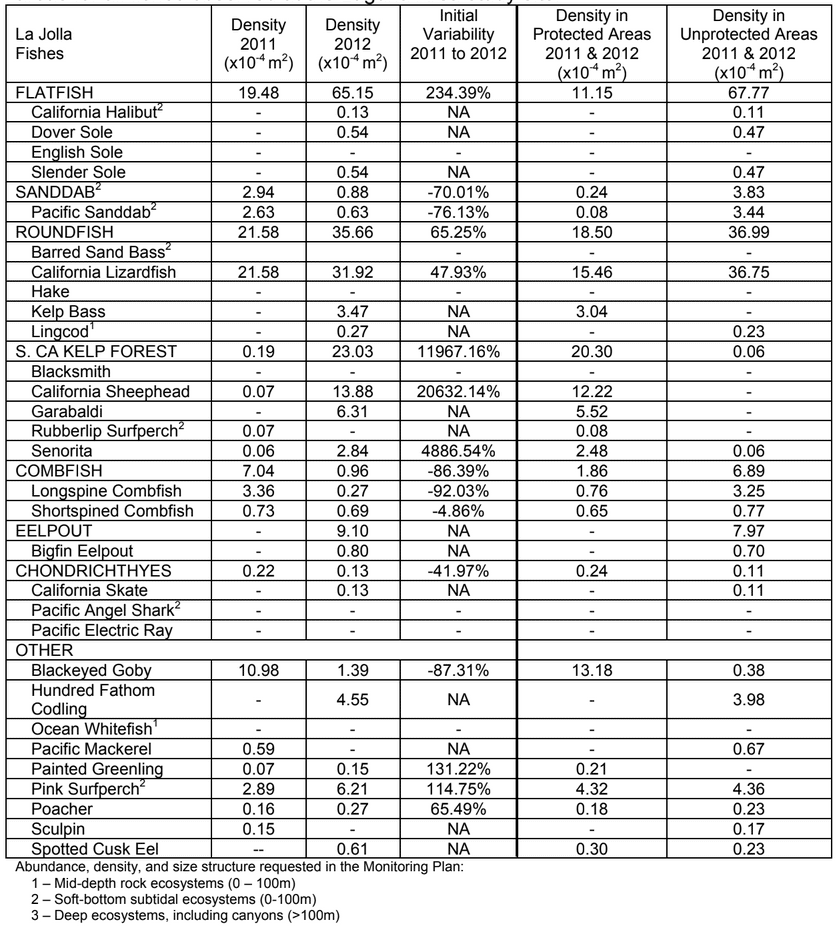

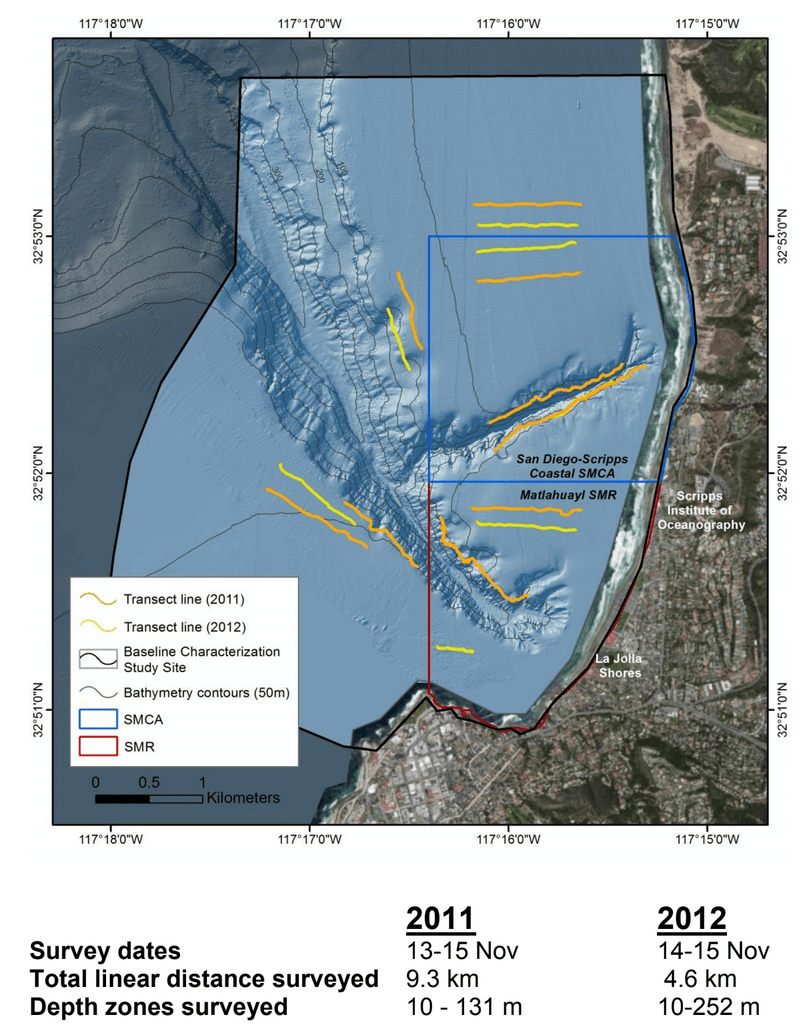

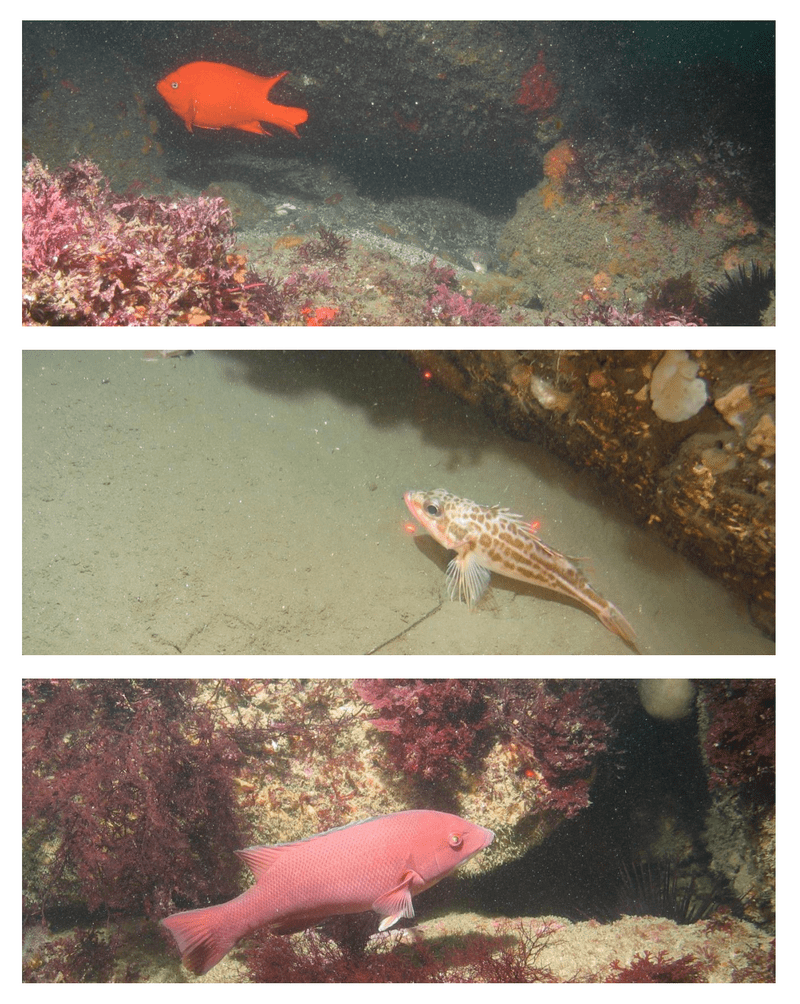
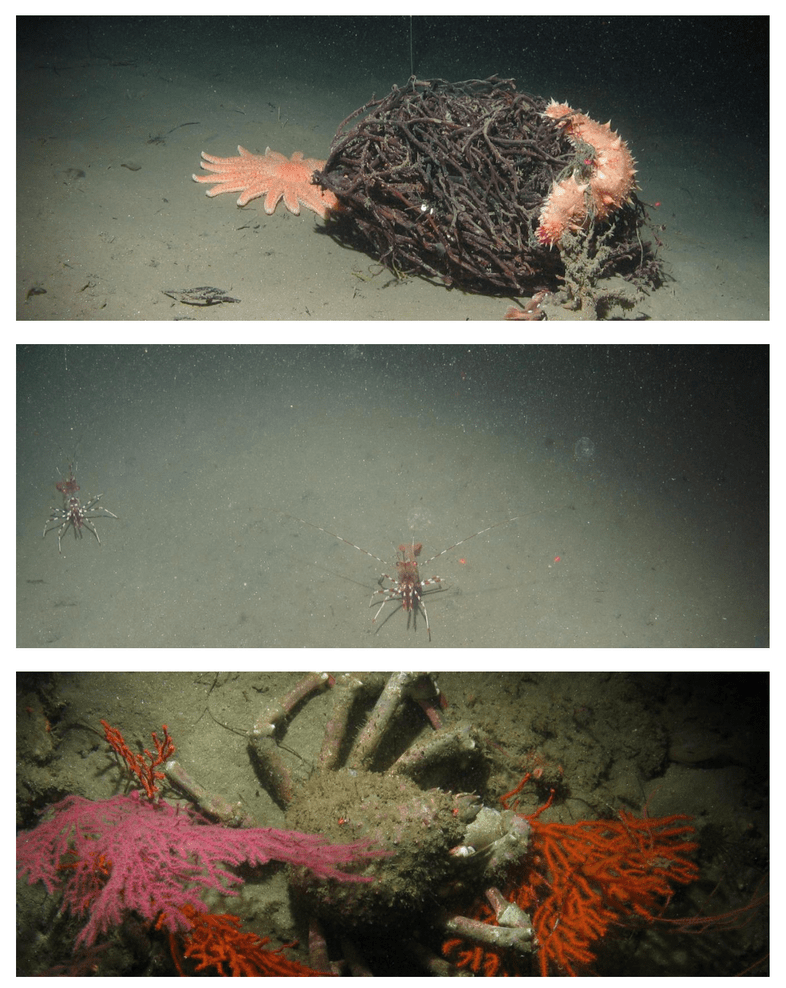

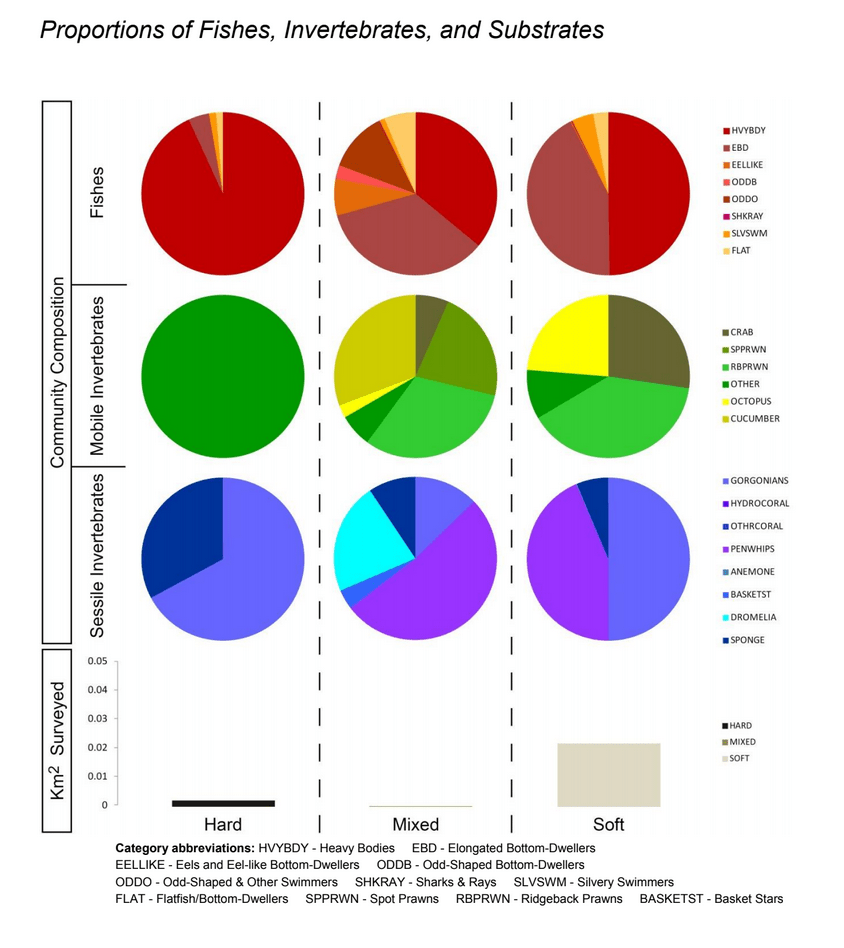


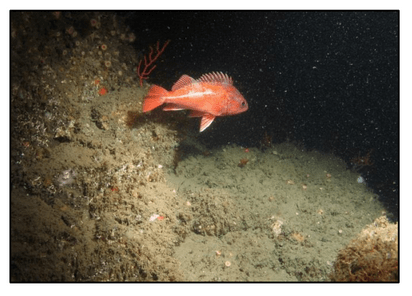 Despite this importance, little is known about the structure, distribution, and
Despite this importance, little is known about the structure, distribution, and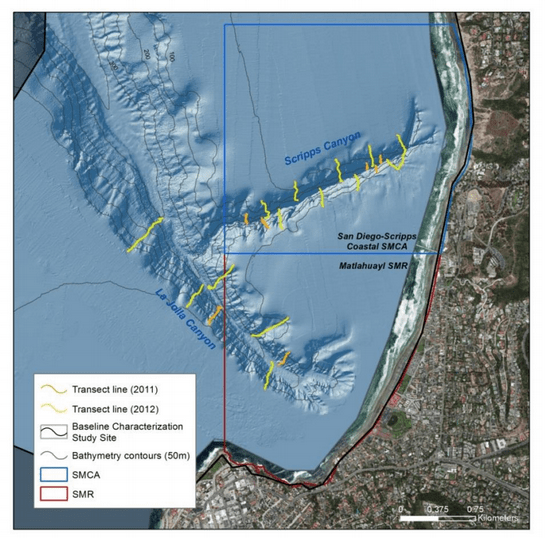

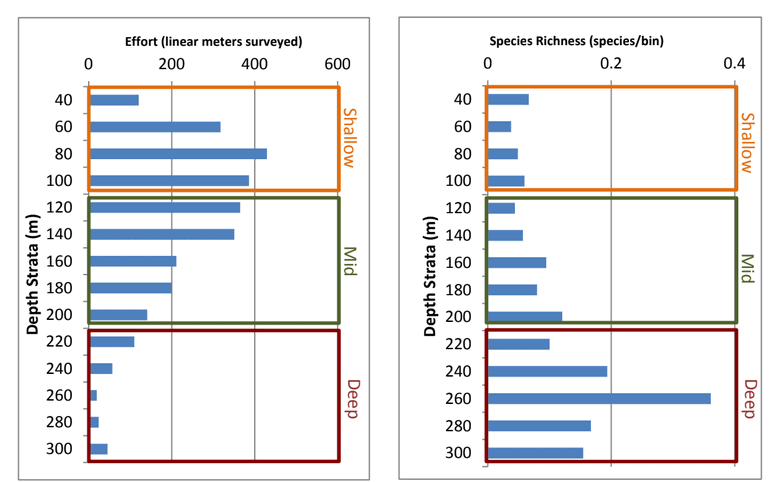

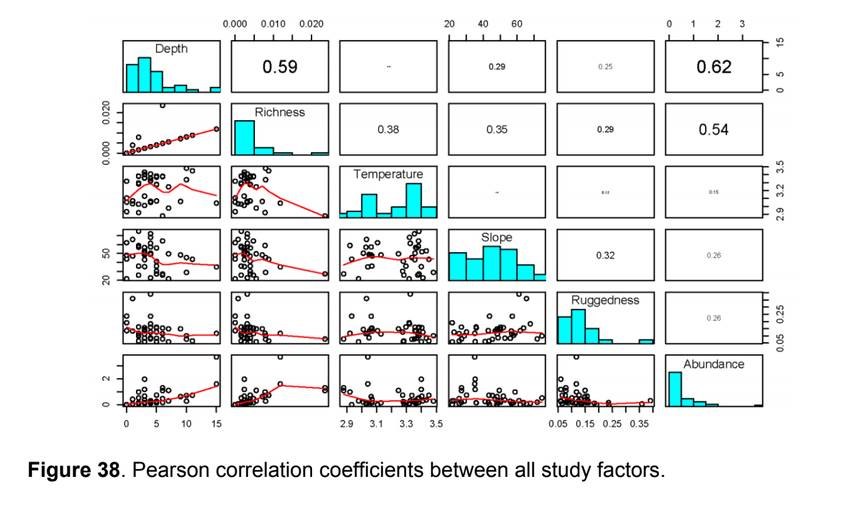
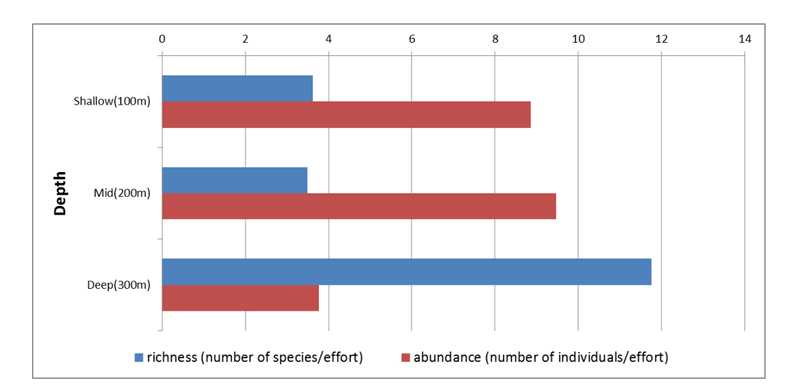

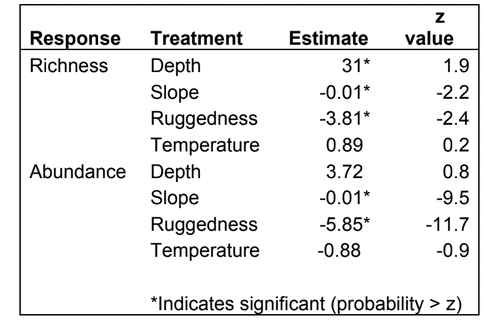
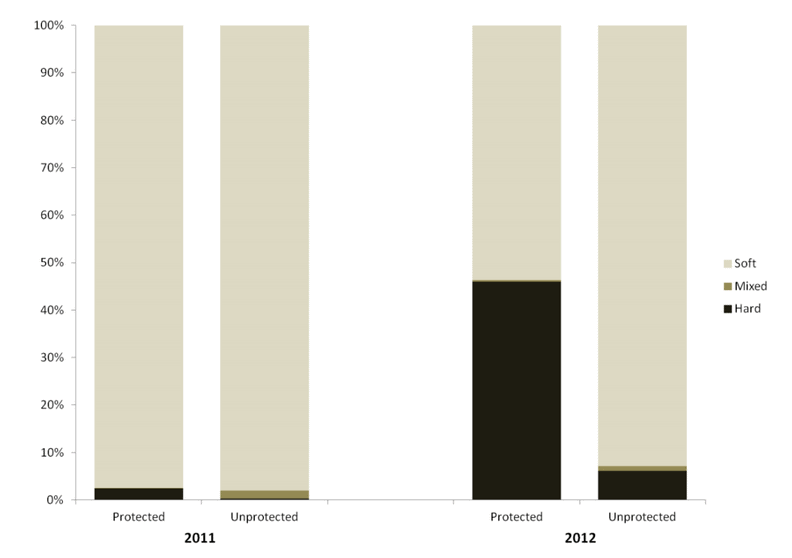
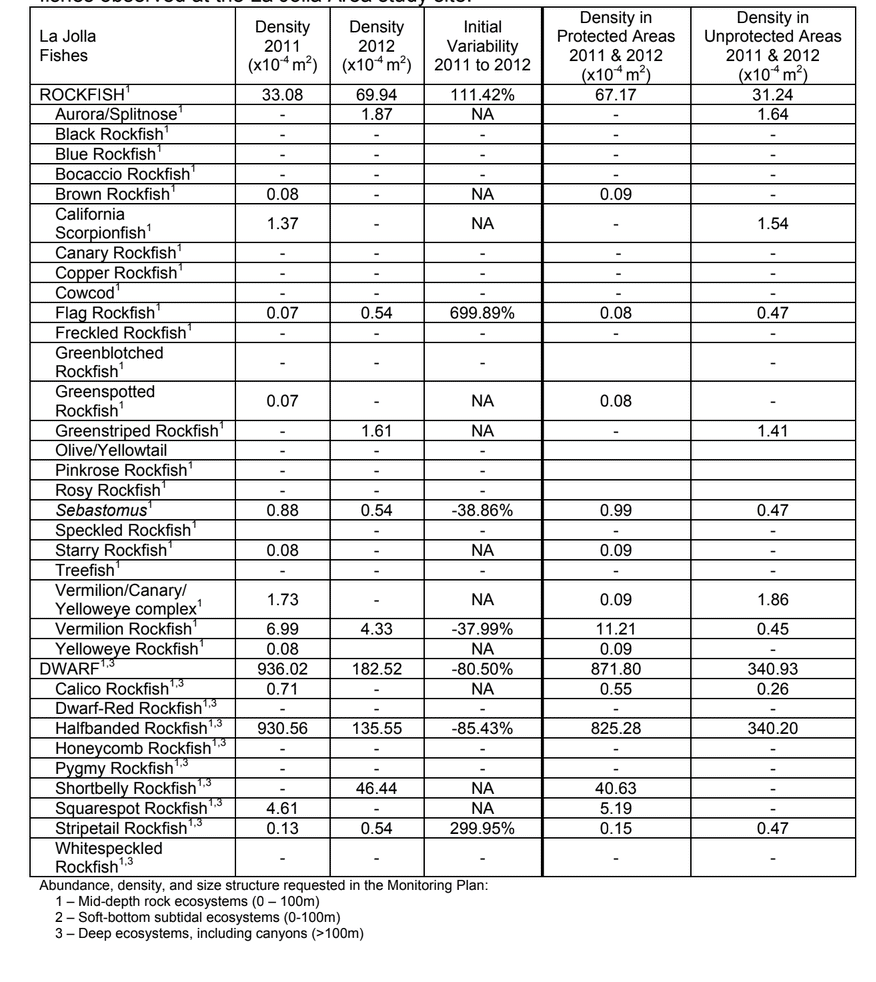
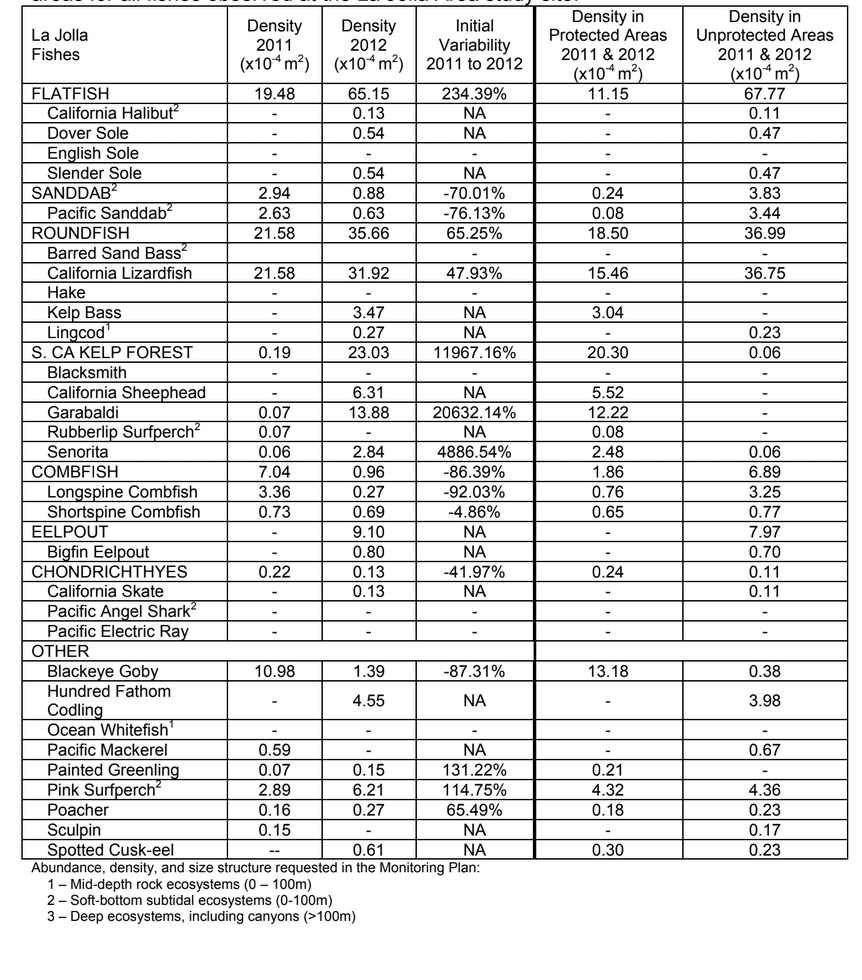
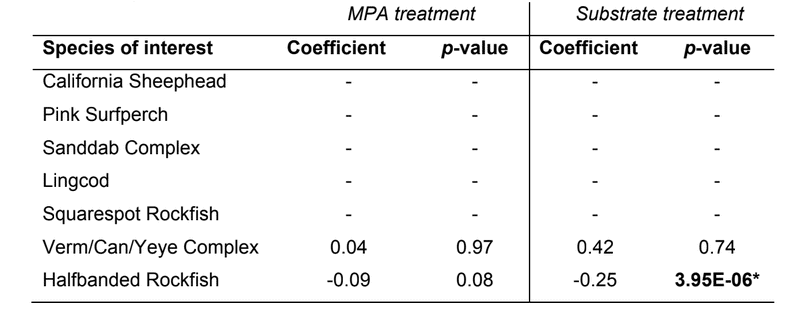
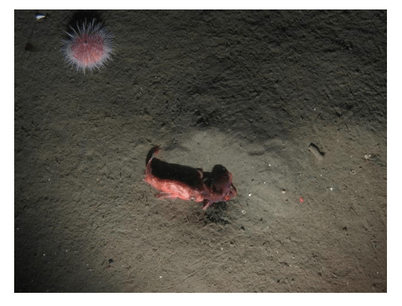 state waters. Below are brief descriptions of two such on-going projects, one that describes the distributions of fishes and invertebrates with depth along the shelf and slope elsewhere throughout the sampled areas, and one that
state waters. Below are brief descriptions of two such on-going projects, one that describes the distributions of fishes and invertebrates with depth along the shelf and slope elsewhere throughout the sampled areas, and one that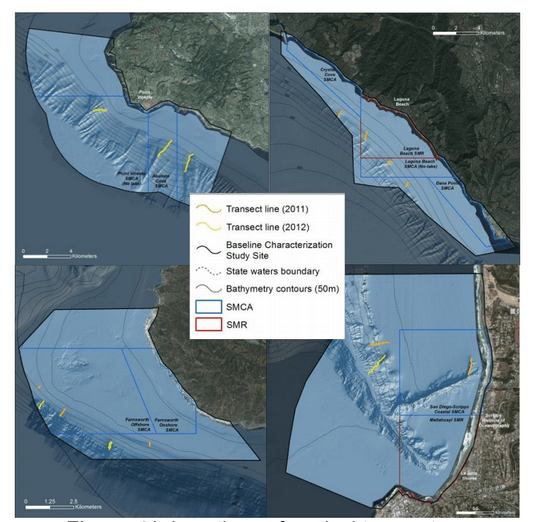
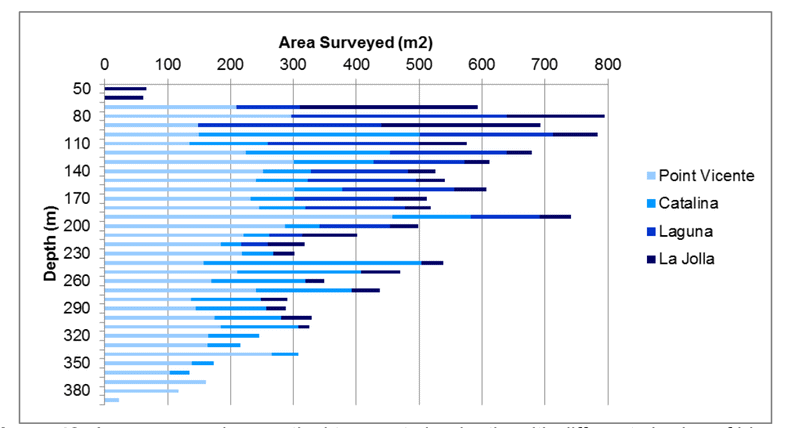
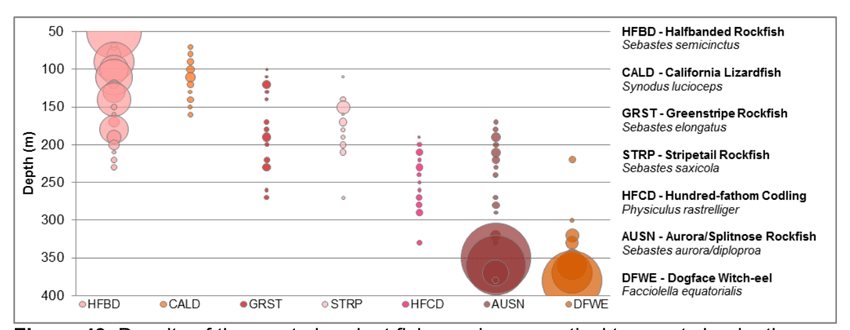
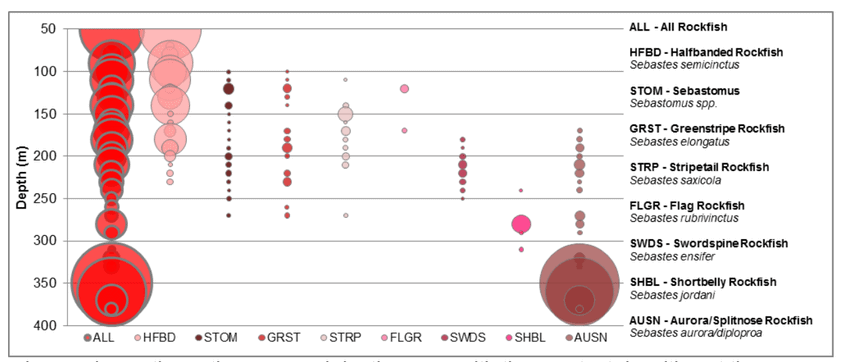

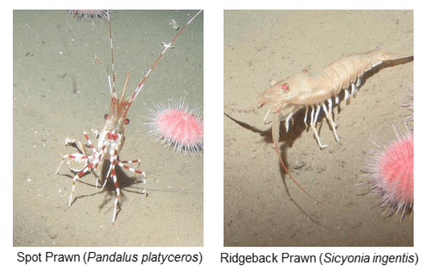




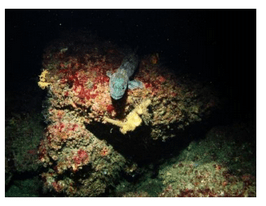 (such as the areas sampled for this report) the likelihood of a strong citizen-based monitoring program coming to the fore is probably very low; working in the deep water is costly, including vessel support, vehicle support (ROV, submersible, camera sled), and the personnel necessary to operate both. And yet, despite the associated cost, the non-invasive sampling of marine ecosystems using imagery platforms has important advantages with so many marine populations at historically-low levels.
(such as the areas sampled for this report) the likelihood of a strong citizen-based monitoring program coming to the fore is probably very low; working in the deep water is costly, including vessel support, vehicle support (ROV, submersible, camera sled), and the personnel necessary to operate both. And yet, despite the associated cost, the non-invasive sampling of marine ecosystems using imagery platforms has important advantages with so many marine populations at historically-low levels.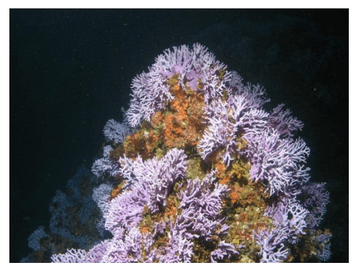 Below we provide a first pass at a group of species and species complexes, including fishes as well as mobile and sessile invertebrates, that are capable of being monitored in this way and were observed during the baseline characterization effort in the South Coast. While we expect that many scientists could reach agreement on some of the organisms on this list, it is also likely that much discussion could be engendered to flesh this group out further. What we provide here is intended as a point of departure for discussion as each of the MLPA regions moves beyond baseline characterization.
Below we provide a first pass at a group of species and species complexes, including fishes as well as mobile and sessile invertebrates, that are capable of being monitored in this way and were observed during the baseline characterization effort in the South Coast. While we expect that many scientists could reach agreement on some of the organisms on this list, it is also likely that much discussion could be engendered to flesh this group out further. What we provide here is intended as a point of departure for discussion as each of the MLPA regions moves beyond baseline characterization.